by rail engineers for rail engineers

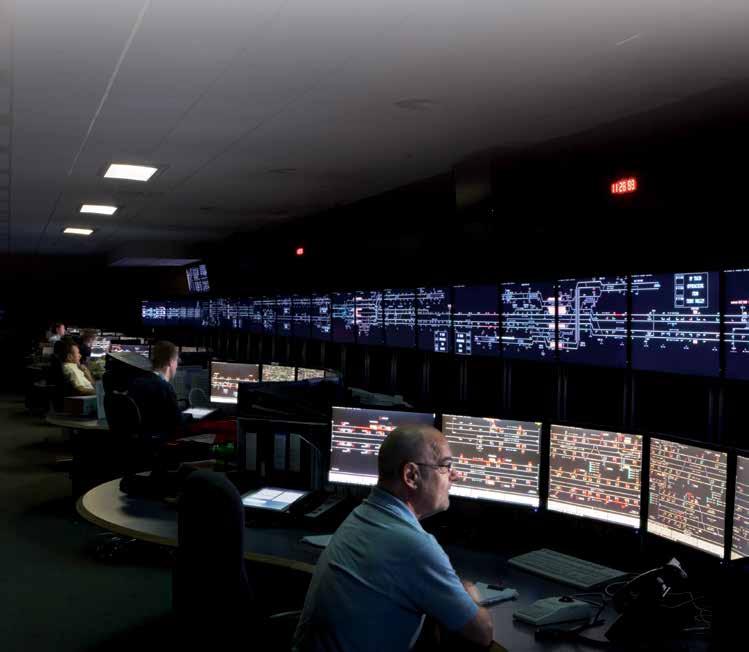
SCOTLAND’S HYDROGEN TRAIN
IS BELIEVING

SEPT-OCT 2022 ISSUE 198
www.railengineer.co.uk
Scotland’s hydrogen train project will provide the understanding and knowledge to make hydrogenpowered rail a reality.
INNOTRANS The world’s largest transport trade fair returns and does not disappoint.
upgrades
FOCUS FEATURES SIGNALLING A ££ ORDABLE SIGNALLING & TELECOMMUNICATIONS STRUCTURES & INFRASTRUCTURE SUSTAINABILITY & ENVIRONMENT
SEEING
Galvanized steel is an ideal partner for network
and expansion, HS2, and beyond.
Total


Visit totalrailsolutions.co.uk or call 01962 711642 to find out more
total rail Service
Rail Solutions now offers a unique concierge Meet and Greet team further improving your quality of service.
• Ensuring the plant, equipment and people you need is where it needs to be, when it needs to be
• Meaning you and the kit you have hired is ready to go to work
Improving efficiency and effectiveness whilst delivering a positive customer experience, every time. scan this Visit totalrailsolutions.co.uk or call 01962 711642 to find out more Watch the new meet and greet team at work
Paul Darlington unpicks the terms used in competence assurance and asks why competency is so important.
Making a step change with improved guidance for the Rail Carbon Tool


RSSB’s Rail Carbon Tool allows the rail industry to calculate the carbon footprints of its projects.
Renewables non-traction energy for Network Rail Network Rail and EDF Renewables have signed a solar power agreement to make the railway cleaner and greener.


Scotland’s hydrogen train
Though some consider them an unnecessary distraction, hydrogen trains have a role to play in Scotland’s decarbonisation plans.
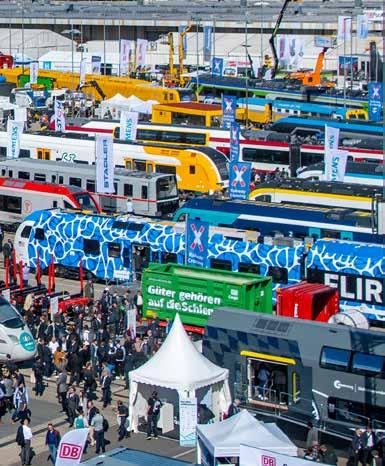
Seeing is believing Galvanized steel is an ideal partner for network upgrades and expansion, HS2, and beyond.
Great Musgrave bridge lessons learned Bob Wright looks at the Great Musgrave saga from an engineering perspective and considers the Bill Harvey Associates report.
32 64 CONTENTS 46 10| 16| 40| 44| 46|
Assuring competency
Affordable signalling Signalling renewals are a major cost for Network Rail at around £200 million a year during Control Period 6. New rail siding
A new
will serve
Jointing of signalling power cables – what’s all the fuss about? 48|
at Hillhead Quarry
railhead connection to the Buxton and High Peak Junction line
the reopened Hillhead Quarry.
18|
22| A signalling exposition Clive
28| Prysmian
an
the
for enhanced unarmoured
28 54|
58|
Innotrans returns This year’s Innotrans was the first since 2019, and it certainly didn’t disappoint its thousands of exhibitors and attendees.
SigTech Rail one year on Rail Engineer catches up with SigTech Rail to discuss its plans and abilities to support the operational highway.
Kessell files a report from the IRSE’s recent five-day signalling convention held in Glasgow.
Group gives
insight into
Network Rail standard
Signalling Power Distribution cables.
Progress and delay for East West Rail In his first contribution, David Fenner discusses the challenges met in linking Oxford, Milton Keynes, and Cambridge by rail.
32| 36|
64| 60| 3 Rail Engineer | Issue 198 | Sept-Oct 2022
IMechE Railway Division Chair’s Address 2022 Noel Travers is on tour, summarising his career, highlighting the contribution of engineers, and explaining the value of the Railway Division.
EDITORIAL
Lessons from
Europe
There was much to see at Innotrans. No doubt those on its 2,834 stands from 56 different countries were able to learn much from each other. Yet it was my rail journey home that showed me what Britain could learn from Europe’s rail networks.
My trip started at the multi-level Berlin Hauptbahnhof station. Here Deutsche Bahn’s high-speed ICE services operate from eight underground platforms between 3.5-kilometre long tunnels under the city. From here, my journey to Frankfurt included a high-speed line and existing track upgraded up to 250km/h. After staying with friends in the Darmstadt suburb of Eberstadt (population 3,000), my journey home started with a tram at 05:50 on Sunday morning which was part of an all-night service. A bus then took me to Frankfurt Airport for an ICE train to Brussels which took just over three hours as much of this trip was on 300 km/ hr high speed lines. The Brussels to London Eurostar train is entirely on high-speed lines and took just two hours five minutes for its 372-kilometre journey.
France completed its first high-speed line in 1981 and there is now a European network of 9,500km of high-speed lines of over 250km/hr. Britain will open its first cut-back 176km domestic high-speed line in about 10 years’ time. Paris opened its RER

line in 1977 to connect suburban services between main line stations by tunnels under Paris. London’s equivalent, the Elizabeth line, opened 45 years later.
As well as Berlin, stations such as Zurich, Vienna, Rotterdam, and Antwerp have been rebuilt to cope with growing traffic. In contrast, there is no long-term strategy to alleviate rail congestion in the north where plans for an underground station in Manchester and an HS2 station in Leeds have been shelved. Britain’s nine light rail systems compare with around 30 in France and 60 in Germany. This includes Darmstadt whose population of 200,000 is served by a 42km tram network.
Office of National Statistics figures show that, in 2019, worker output per hour in France and Germany was respectively 17% and 14% greater than in the UK. Whilst there are many reasons for the UK’s historically poor productivity record, poor rail connectivity must be a factor. The UK Government’s 2021 ‘Build Back Better’ strategy identified that the three core pillars of growth were infrastructure, skills, and innovation (with no mention of tax cuts). As Peter Hendy’s Union Connectivity Review noted, these pillars are reliant on transport to deliver their full potential.
An effective rail network is also needed to
attract modal shift from road and air if the Government’s net-zero carbon targets are to be achieved. At Innotrans, all the freight locomotives on display were electric. This was an indication of UK rail’s poor carbon record compared with European railways. In Britain there is little demand for electric rail freight traction with an analysis of the latest ORR rail emission figures showing that less than 4% of the energy used by UK freight locomotives is electric. Clearly there is much to learn from Europe.
The decarbonisation imperative was clear at Innotrans where various hydrogen powered rail vehicles were on show, though not much was said about where the hydrogen comes from. Our feature on Scotland’s hydrogen train explains how such trains should be an important part of the developing hydrogen economy. To decarbonise its non-traction energy Network Rail is to take the entire 49.9MW output of a new 200-acre solar farm near Norwich. We also show how the RSSB Rail Carbon Tool can help reduce the rail industry’s carbon footprint.
East West Rail offers carbons benefits from modal shift yet, as David Fenner describes, the future of its eastern part is under threat. Moreover, the decision not to electrify this railway as it is built means
4 EDITORIAL
Rail Engineer | Issue 198 | Sept-Oct 2022
that it will be operated by diesel traction. In contrast we describe how ScotRail’s electrification enables old, expensive-tooperate diesel trains to be replaced with electric trains that are much cheaper to buy and run.
With signalling renewals costing around £200 million a year, Paul Darlington considers how signalling can be more affordable through, for example, improved competition, better sharing of best practice and the elimination of lineside signals by ETCS. As we show, a good example of low costsignalling is the use of a ground frame and token machine to control train movements to Hillhead Quarry.
Clive Kessell reports on the IRSE’s five-day convention in Glasgow which also highlights opportunities for affordable signalling including faster designs with pre-wired components, fewer lineside cases, and plugcoupled tail cables. He notes that the latest signalling technologies yield undoubted benefits for reliability, capacity improvement,
and decarbonisation. Yet their adoption is only piecemeal as investment fails to take a long-term view of their benefits.
Another feature describes the IRSE’s licensing scheme which ensures individuals are competent to undertake safety critical work. This also considers professional registration by other bodies.
It would be interesting to know how the competence of those who took the decision to infill the bridge at Great Musgrave was assessed. Bob Wright revisits this issue in his review of the Bill Harvey Associates report on this bridge. His article shows that this report is essential reading for anyone with a professional interest in masonry arch bridges. It also shows that Highways England’s infilling of Great Musgrave Bridge was both unnecessary and ineffective.
Malcolm Dobell was at the address given to IMechE Railway Division by its new Chair, Noel Travers. He reports how Noel considered the contribution engineers can make when working ‘outside their
engineering boxes’ and that his key message was that leaders with an engineering understanding can really make a difference. Our readers would no doubt agree.
Editor
David Shirres
david.shirres@railengineer.co.uk

Production Editor
Matt Atkins matt@rail-media.com
Production and design Adam O’Connor adam@rail-media.com
Engineering writers
bob.wright@railengineer.co.uk clive.kessell@railengineer.co.uk collin.carr@railengineer.co.uk david.fenner@railengineer.co.uk graeme.bickerdike@railengineer.co.uk malcolm.dobell@railengineer.co.uk mark.phillips@railengineer.co.uk paul.darlington@railengineer.co.uk peter.stanton@railengineer.co.uk stuart.marsh@railengineer.co.uk
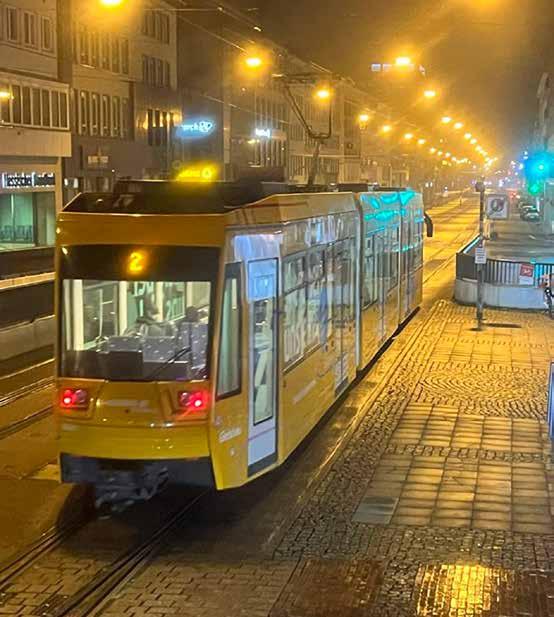
Advertising
Asif Ahmed asif@rail-media.com Chris Davies chris@rail-media.com Craig Smith craig@rail-media.com


Rail Engineer
Rail Media House, Samson Road, Coalville Leicestershire, LE67 3FP, UK. Switchboard: 01530 816 444 Website: www.railengineer.co.uk
Rail Engineer Videos http://rail.media/REYouTube
Editorial copy to Email: news@rail-media.com
Free controlled circulation Email: subscribe@rail-media.com
The small print
Rail Engineer is published by RailStaff Publications Limited and printed by PCP Ltd.
© All rights reserved. No part of this magazine may be reproduced in any form without the prior written permission of the copyright owners.
Part of: ® www.rail-media.com
THE TEAM
DAVID SHIRRES
RAIL ENGINEER EDITOR
5 Rail Engineer | Issue 198 | Sept-Oct 2022
(Left) Berlin Hauptbahnhof multi-level station. (Right) Darmstadt’s early Sunday morning trams.
Electrification and the Williams-Shapps Plan for Rail
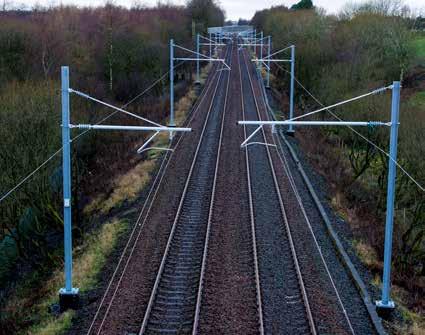
It is always good to hear from our readers. Recently, Jack Smith, a Network Rail overhead conditional renewals engineer, sent us his paper ‘The Impact on Electrification behind the Williams-Shapps Plan for Rail (WS-PFR)’ which he thought might be of interest. We agreed.

Jack’s paper considers whether the WS-PFR might result in more electrification. To do so, he surveyed two different groups.
Group One comprised 20 staff working across the business in the planning, development, delivery, design, or management of electrification. Group Two consisted of 10 more senior professionals throughout the industry. The response rate from Group One and Group Two was, respectively, 50% and 80%. Jack concluded that the lower response rate from Group One reflected a low understanding of the WS-PFR’s proposals.
His survey asked three questions:
1. Have you read the WS-PFR?
2. How do you think it will impact electrification?
4. How do you think the WS-PFR will affect the wider business?
The responses showed that Group One (those directly responsible for delivery) had a low understanding of the WSPFR and its proposals, whereas Group Two (senior professionals) clearly understood it and made significant comments.
These included the need to reduce electrification costs and why this needs a rolling programme. Comments also acknowledged the valuable work done to reduce electrification clearances.
Network Rail Programme Manager Justin Davis commented that WS-PFR should reduce project overhead costs as it should “remove supplier, client layers and conflicting views and interests by a centralised controlling mind.”
Network Rail’s CEO, Andrew Haines considers that Great British Railways (GBR) will be able to better plan access by balancing “the trade-off between line closures and the revenue loss that occurs as result.” He also stressed the crucial important of cost reduction as decision makers consider that “even diesel trains are relatively green when compared to, for instance, road freight.
Therefore, the decarbonisation benefit per pound spent in the railway is not as high as in other sectors.”
The report concluded that:
1. It is fair to conclude that electrification is a future proof technology that is a good investment offering larger passenger and freight services as well as greater employment opportunities.
2. That the UK government is on board to make electrification the top of the hierarchy of choices. Hence the future of electrification looks very safe provided that costs can be contained.
Whilst the first conclusion cannot be denied, the second is doubtful as shown by UK Government inaction. Although WS-PFR is upbeat about electrification there is, as yet, no commitment to the required electrification rolling programme.
NOTICES 6 Rail Engineer | Issue 198 | Sept-Oct 2022
dirty truth about rail cleaning...

63% of cleaners were struggling to make ends meet BEFORE the cost of living crisis
Rising prices mean that a cleaner on the National Minimum Wage would need a £2,000 pay rise to have the same spending power as last year
Cleaners get no company sick pay
69% of cleaners say they have gone into work sick because they can’t afford not to work
Cleaners get no travel facilities
The number of cleaners has been cut leaving people overworked and underpaid.
Britain’s Largest Specialist Transport Union Protecting our members’ interests is our priority Join us today rmt.org.uk FREEPHONE 0800 376 3706 RMTunion IT’S TIME FOR JUSTICE for CLEANERS More cleaners than ever before are balloting for industrial action and taking strike action. If you’re NOT a member JOIN NOW!
•
•
WE DEMAND... • A pay rise to £15 an hour • A proper sick pay scheme • Travel provision • Proper pension provision • An end to outsourcing and profiteering on cleaning.
The
•
•
•
•
ScotRail fleet replacement
Notice of the first contract to replace a large part of ScotRail’s train fleet was recently posted on the Public Contracts Scotland website. This was a framework for the provision of legal services to support the new train procurement programme as well as ad hoc legal support during design, manufacture, testing, commissioning, and approvals.
This requires legal advice services to support an efficient and compliant procurement competition that provides trains to meet our customer, technical, and operational requirements whilst minimising the impact on the environment from their construction. As part of the need to give the taxpayer value for money, it specifies that this must include the economic and societal benefits for local communities and businesses.

The notice specifies that the train supplier must also submit options for maintenance, including a technical services agreement as well as a technical support and spares supply agreement with the decision on which provides best overall value for money being taken prior to contract award.
It states that ScotRail plans to replace 65% of its train fleet, around 675 vehicles, between the period 2027-2035 as by this time the operation of these trains will become increasingly costly. There is also the requirement to replace all existing diesel trains with new trains powered by overhead electrification, batteries, or hydrogen as part of the Scottish Government’s plan to decarbonise its passenger trains by 2035. This
procurement programme also offers a further opportunity to reduce costs significantly by reducing the number of types of trains. ScotRail currently has eleven different sub fleets.
The notice also advises that the new train fleet procurement will be done in three stages:
» Phase 1 in 2022-23 for a new fleet of suburban trains entering service between 2027 and 2030 to connect local communities with Edinburgh, Glasgow, Perth, Dundee, and Aberdeen. These will be suburban electric and battery electric multiple units. It is envisaged that this will consist of around 120 units comprising of 550 vehicles.
» Phase 2 is likely to be in 2024-25 for a new fleet of trains for rural routes which will be battery or hydrogen vehicles.

» Phase 3 is likely to be in 2025-26 for a new fleet of intercity trains to connect Scotland’s central belt with Aberdeen and Inverness to replace the current diesel HST fleet.
The deadline for a request to participate in this tender was the 2 September 2022 and the contract award is expected to be announced soon.

SHIRRES All about people people working in public transport...people like you! Health, welfare and financial help in times of need, hardship and distress. £1.25 a week covers you, your live-in partner and dependent children. 0300 333 2000 | help@tbf.org.uk | www.tbf.org.uk Transport Benevolent Fund CIO, known as TBF, is a registered charity in England and Wales, 1160901, and Scotland, SC047016. less than 20p a day NOTICES 8 Rail Engineer | Issue 198 | Sept-Oct 2022
DAVID










































































 PAUL DARLINGTON
PAUL DARLINGTON


A ££ ORDABLE
SIGNALLING
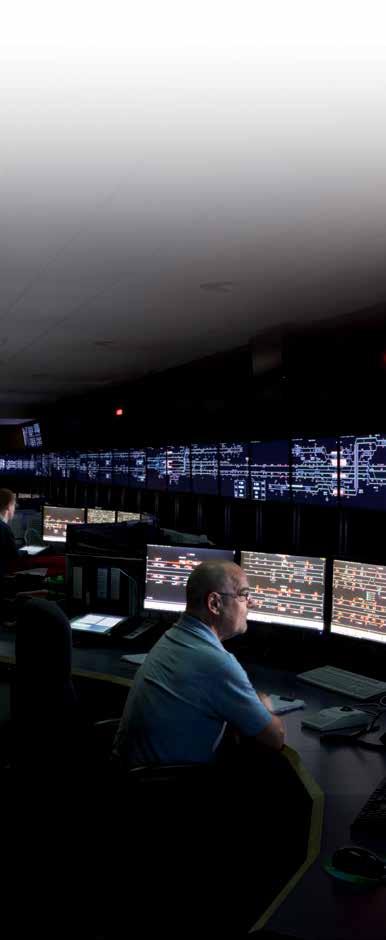
Value for money and an affordable railway is the objective of many in the rail industry. Issue 184 of Rail Engineer (May/June 2020) looked at the affordability of railway electrification and, in this edition, we look at the affordability of signalling renewals and the ORR’s July 2022 update to its signalling market study’s report published in November 2021.
Signalling renewals are a major cost for Network Rail at around £200 million a year during Control Period 6. The ORR market study found that the market for major renewals is dominated by Siemens and Alstom, and the ORR has concerns over value for money together with the barriers to competition and new players being able to enter the market. UK signalling equipment is also provided by others, including Hitachi (which owns Ansaldo and plans to buy Thales), Atkins, and, more recently, Amey using Sella Controls PLC. Therefore, railway signalling competition is actually better than, for example, the far bigger mobile phone network market which is dominated by Nokia, Huawei, and Ericsson, especially as Huawei equipment will be removed from UK 5G networks by 2027 due to security concerns. A way just needs to be found for all rail signalling suppliers to compete more equally.
The ORR’s analysis of Network Rail’s expenditure on signalling identified that average prices were lower when projects were competitively tendered, as opposed to directly awarded via framework contracts. The ORR also said that GB signalling rates have been increased over recent years and are more expensive than Europe, and therefore the ORR suggests that more competition and more viable players will reduce costs. However, Siemens, Alstom, and Hitachi (Ansaldo and Thales) supply signalling to Europe and throughout the world. Therefore, the suppliers themselves may not be the entire problem.
The ORR identified barriers to competition and a difference between the objectives of Network Rail’s centre (procompetition and value for money) and the Network Rail regions (risk averse and delivery focused). The need to interface with the existing signalling technology was also identified as a significant barrier to new signalling suppliers. However, despite these concerns the ORR decided not to make a Market Investigation Reference to the Competition and Markets Authority, but to take a collaborative approach to improve the market situation with Network Rail.
10 Rail Engineer | Issue 198 | Sept-Oct 2022 SIGNALLING & TELECOMMUNICATIONS
Recommendations
A series of recommendations or ‘remedies’ were made, including one to reduce costs through increased competition between suppliers. The July update summarised the progress with the remedies and the ORR confirmed it is satisfied with the progress Network Rail has made.

Increased regulatory oversight

There will be increased regulatory oversight to increase transparency and Network Rail’s accountability with signalling procurement. On an annual basis, Network Rail will report to the ORR on major signalling projects, which will include the technology and the route to market (competitively tendered or framework and the number of bidders). Network Rail’s own costs will also be included.
A pro-competitive approach to procurement
Network Rail will widen the pool of suppliers and reduce its long-term dependence on the incumbent suppliers. Framework contracts will be longer and use a wider set of selection criteria, with a wider range of factors including interfacing behaviour, and will be outcome based and will not prescribe the technology of particular suppliers. Network Rail has also committed to partially reimburse development costs to suppliers.
Interfacing
This is aimed at increasing the ease of interfacing at the fringes of technology provided by different suppliers. Specific measures include open interfacing; limiting the costs when suppliers work for one another; and selection criteria to reward positive commitment to open interfacing. All future signalling contracts will require EULYNX compliance.
EULYNX is a European initiative to standardise interfaces and elements of signalling systems, by defining and standardising signalling interfaces, with the goal of significant reduction of the lifecycle costs. Standardisation of the signalling system interfaces is proving difficult, but it will also help with equipment obsolescence and not having to replace the whole signalling system. However, EULYNX will only deal with the interfacing of future systems so will not help with existing signalling systems.
With the EULYNX adapter from Pilz, railway infrastructure companies can use the manufacturerand country-independent EULYNX standard in existing interlockings and drive digitalisation forward.

11 Rail Engineer | Issue 198 | Sept-Oct 2022 SIGNALLING & TELECOMMUNICATIONS
PHOTO: PILZ GMBH & CO. KG
The control centre technology and predominance of a particular technology on the fringes of a scheme can influence the choice of supplier, which is why limiting the costs when suppliers work for one another implementing fringe and control centre arrangements is so important.
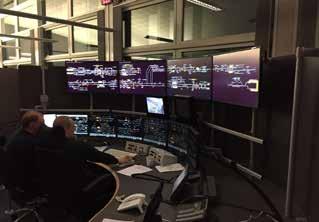
The mobile telecoms industry is also doing something similar to EULYNX with its Open intelligent Radio Access Network (O-RAN) initiative. A £250 million 5G Diversification Strategy, published in November 2020, sets out where the government will remove barriers for new vendors, invest in open RAN (O-RAN), and work with like-minded countries to achieve secure and resilient telecoms supply chains.
Like EULYNX, O-RAN is intended to provide flexibility and interoperability with complete openness to multi-supplier deployments. However, the European Union has published a report on security risk concerns, including a larger attack surface, increased risk of misconfiguration, and immature specifications that are not secure by design. A German Federal Office for Information Security report said the O-RAN specification provides only a few guidelines in the area of security, and that security risks can be identified in numerous interfaces and components. It said the current specification doesn’t adhere to the principle of security by default, and fails to take account of the principles of multilateral security.
Therefore, the rail industry and the ORR need to be aware of the safety and security issues that may arise with the open interfacing of signalling and learn from other technologies, such as O-RAN with far larger R&D resources.

Balancing
ORR said Network Rail should play a more active role in the oversight of signalling procurement, and Network Rail has committed to reducing the risk to regions with the introduction of new technology. This will also include an innovation fund to assist regions with implementing new technology and limiting risks.
Funding
This consists of recommendations to all the industry, including the ORR, to highlight the importance and mitigate the persistent historical uncertainty around future re-signalling volumes, at both a total market and individual supplier levels. Network Rail has committed to strengthen the linkage between supplier tendering success and the volumes of work delivered; and encourage further innovation and reduce the dependency on supplier innovation investment by including signalling innovation in its future research and development funding.
Rail Engineer | Issue 198 | Sept-Oct 2022 12 SIGNALLING & TELECOMMUNICATIONS
Competition
Competition is important in driving engineering innovation and creativity at an affordable cost. Additionally, new suppliers, technology, and new ways of doing things can transform industries. However, this needs to be handled carefully to incentivise the right outcomes and provide systems that are safe, reliable and can be supported throughout their lifetime.
Attracting new suppliers and technology to the UK signalling market has been tried before with mixed results. In 2002, Siemens installed their SIMIS-W Computer Based Interlocking (CBI) in Bournemouth for the Dorset Coast resignalling. This was supplied by Siemens Germany and before Siemens bought Invensys Rail (formally Westinghouse) located in Chippenham. No other SIMIS-W systems were installed in the UK, so spares and people with the required competency to operate and maintain the system are limited. It’s understood that during recent industrial action, managers did not have the specialist competency to operate the SIMIS-W system as it’s so different to other signalling systems in the area.
In 2004, Ansaldo’s CBI interlocking was provided in the Manchester South area as part of the West Coast Main Line modernisation programme. The system was advanced compared to other signalling systems of the time with, for example, extensive remote diagnostic capabilities.
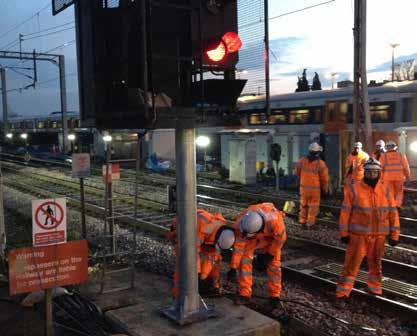

However, Ansaldo’s ACC was designed for Roma Termini with a 3kV DC traction railway, and it proved difficult to adopt the system to the UK signalling environment with 25kV AC traction and a long, thin and different type of route, without compromising the advantages and benefits of the system. The issues included: The scope and scale of approvals activities took years, and approvals have since become even more complex: for example, with the Common Safety Method (CSM). Cross acceptance was used, but the Ansaldo system was relatively new in its home market and still undergoing changes.
The Segnale Dichroico Ottico (SDO) signal head used halogen lamps and a clever arrangement of dichroic mirrors to transmit/ reflect each colour through a single aperture
with no moving parts. The selection of aspect was made through a VF interface with selected frequencies driving a specific lamp. The UK use of this VF drive was a problem, given the different electric traction systems. The SDO signal also required a different lamp and voltage from its native design to comply with UK readability requirements, and proved to be unreliable.
The systems T72 point machine was designed with heaters under its contact units, but to comply with the UK ballast requirements these could not be fitted, resulting in contact failures. The T72 point machine was used on HS1, but with the heaters and is reliable.
A form of limited automatic route setting was available within the Italian application. However, it was concluded that the changes required for the UK would be far too intrusive to be viable. Today, spares and competent people to look after the system are limited. The Manchester South system is relatively reliable, but a fault occurred two years ago that took several days to resolve and required engineers to fly in from Italy. During this time no trains could be operated between Manchester and London.
Given that the system is totally different to operate than other UK signalling systems in the area there is no case to move the control of the system into the nearby Railway Operating Centre. With problems such as this it is understandable that Network Rail regions may be hesitant with taking on new technology.
Rail Engineer | Issue 198 | Sept-Oct 2022 13 SIGNALLING & TELECOMMUNICATIONS
Best practice
It is important that the rail industry learns and adopts best practice from other industries, but it is not always the case that things are done better elsewhere. Five years ago, on an IRSE visit to the M6 Smart motorway scheme, engineers from road and rail found they had much in common, such as dealing with poor legacy records, poor asset condition, and the need to keep road and rail moving with the minimum of traffic closure. However, when the rail engineers asked the road engineers about the Smart motorway ‘fail safe’ design to alert vehicles of a lane blockage, and what independent safety analysis had been undertaken of the design, their faces went blank. We now know the use of the hard shoulder to increase capacity for vehicles has proved controversial due to safety concerns and a number of fatal accidents.
But where could new competitors come from? As mentioned, Hitachi owns Ansaldo and plans to buy Thales, and Alstom has bought Bombardier. The telecoms industry (on government instruction) is not using Huawei due to security concerns. Any ‘new player’ would need staff with UK competencies, which they could only get by paying people more to attract them. Therefore, there could be a risk of increasing costs not reducing them.
a completely new way of delivering signalling schemes using new and modern cost-effective techniques. It means standard sets of data, produced and tested by tools makes the design production and verification far easier, more repeatable, and efficient.

Rising costs
So why has the unit rate of signalling increased over the recent years and is it more expensive than in Europe? UK signalling is very safe but has become more complicated and, therefore, expensive. For example, more complicated signalling overlaps (in simple terms, the distance for a train to stop should it pass a red signal) provides increased protection and, while trackside equipment needs less maintenance, there’s more to maintain, manage, and replace. The UK interlocking data of today is more complicated than it was 30 years ago, with some systems relying on increasingly bespoke and complicated software. Mass production is therefore unlikely to happen on the scale required.
It’s not just the signalling that costs more, either. Signal structures have become bigger and are not as easy to install, so the civil and structural engineering required to support the signalling can be expensive. Sometimes when a signalling scheme takes place, years of deferred renewals of assets such as cable routes, power supplies, equipment rooms, and level crossings have to be funded by the signalling scheme. Access points and walkways to modern safety standards may also be required. Using equipment housings instead of equipment buildings is one way of removing the need for expensive civils and new power supplies. They all need designing, constructing, and maintaining, but some regions still require equipment buildings and not more cost-effective equipment cabinets. Signallingindependent safety assurance and testing processes are excellent, but not cheap, and it’s such an important area that making savings in this area is not easy.
Some of the incumbent suppliers may be international companies not based in the UK, but they have large, successful, and predominantly British supply chains, and there are large UKbased R&D teams, with at least one supplier having a major factory in the UK.
Much innovation and new ways of working have been introduced by existing UK suppliers. For example, Atkins has developed its Advanced Signalling Method (ASM) which currently uses the ElectroLoglXS interlocking. ElectroLoglXS was developed by General Electric Transportation Systems (GETS) in America, which was acquired by Alstom, who license its use to Atkins for use in Great Britain. Atkins ASM is an example of
Sometimes, re-signalling may be scheduled many years ahead, with possessions booked way in advance. Project teams and consultants can then spend a lot of time and money ‘developing’ the scheme, followed by lengthy approvals and a procurement process before the signalling supplier is appointed. This can then lead to the signalling supplier having to recruit and subcontract aspects of the scheme in a relative short period of time to meet the published timescales. All of this adds to the cost.
A key finding of the Dearman/ McNaughton National Electrification Efficiency Panel (NEEP) initiative was the avoidance of high overheads and ‘boom and bust’, and this applies equally to signalling. This is why the recommendations of ‘Increased regulatory oversight’ and ‘Funding’ are so important.
14 Rail Engineer | Issue 198 | Sept-Oct 2022 SIGNALLING & TELECOMMUNICATIONS
More affordable signalling


In a recent IRSE presidential address − ‘ETCS – The impact on the signal engineer’ − Council member Andy Stringer explained how European Train Control System (ETCS) Level 2, with no signals deployed, could reduce signalling costs. Complex station areas with lots of mixed stock is not easy, but could more simpler routes be fitted with ETCS and rolling stock transferred between operators to make the route all ETCS?
With ETCS Level 2, miles of expensive concrete and copper cabling, and thousands of tonnes of steel for signalling structures would not be required. Power supplies would be simpler and could consist of local battery and solar-powered axle counters linked by radio. Points could be located near to existing 415V three phase supplies or battery power. Bi-directional movements could more easily be provided, which would increase rail flexibility and service resilience. Route learning and knowledge would be easier and less of a constraint for diversions. Faster trains would also be possible as they would not be limited by fixed signal spacing, and better, safer, and more costeffective staff protection systems would also be easier to provide.
In the past, ETCS rollout has been hampered by train fitment, but now many trains come with ETCS and other railways around the world have proved that retro fitment is possible. Andy Stringer believes simpler signalling principles are
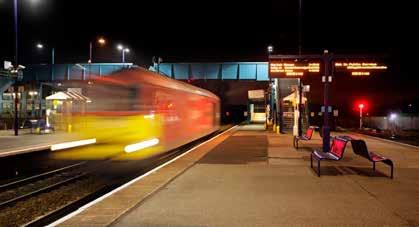

possible and more efficient, and cost-effective engineering techniques are also now available to bring costs down, for example, digital twins, formalisation of requirements processes, auto design/testing, and value-added system engineering and safety assurance processes.










One of the significant costs in implementing new signalling systems is the time required to fully test and commission. Enhanced factory testing with more sophisticated auto testing tools, including the use of ‘formal methods’, is now also possible.
In his address, Andy stressed that everyone in the rail industry − be they the regulator, infrastructure manager, maintainer, supplier, train operator, or rolling stock provider − are on the same team. The real competitors are the road and air transport industries. Rail has a fantastic advantage with the far more efficient steel wheel and rail interface. It just needs to use the right competition to make signalling more affordable.
15 Rail Engineer | Issue 198 | Sept-Oct 2022 SIGNALLING & TELECOMMUNICATIONS
PAUL DARLINGTON

NEW RAIL
Hillhead Quarry SIDING AT
Tarmac, the

is to reopen the Hillhead Quarry,
via
As such, a new railhead connection to the Buxton and High Peak Junction line has been opened. Rail freight is now carrying more material than ever before, hauling medium to long distance heavy loads, at speeds of up to 75mph and a train load of freight can replace up to 75 heavy goods road vehicles.
The railhead connection siding at Hillhead has required an interesting signalling solution, from a legacy signalling equipment perspective, with a new mechanical ground frame and token machine, to control train movements along the freight-only single line.
The reopening of the quarry and railhead is part of an upturn in building development, due largely to HS2 and the subsequent increase in demand for aggregate materials. The site was previously connected to the Buxton High Peak Junction line via a ground frame called Hindlow No.1 Ground Frame, but this had been out of use for many years and the track plain lined. There was no rail infrastructure that could be reused.
Extensive civil engineering work was required to provide access for the new siding and the construction of an onsite loading facility. This was contracted by Tarmac to Story Contracting Limited, who also delivered the track for the siding and the crossover connection to the single line.
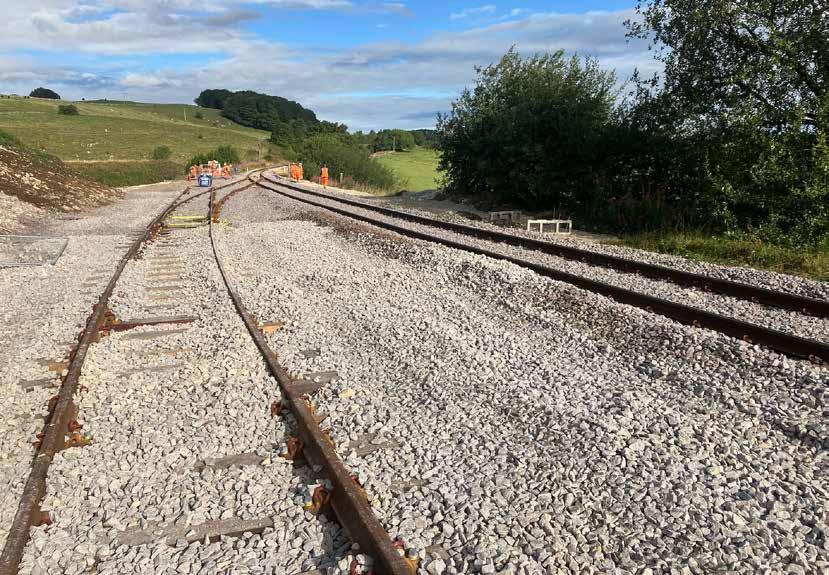
Network Rail contracted the signalling and telecoms development work to Volker Rail which employed Arup to undertake the detailed design, with installation undertaken by VolkerRail Ltd. HCOMM delivered the telecoms element with a ‘box on post’ telecoms location spliced into the existing copper lineside cable and a direct line telephone to Buxton Signal Box.
No power
The option of clamp lock operated points was considered, but with no power in the area it was decided to install a three-lever mechanical ground frame released by a token machine next to the frame along with the direct line telephone. The ground frame was constructed by Network Rail’s Crewe-based locking fitters and the project team commented that the work delivered by the young enthusiastic fitters was excellent.
The token machine is powered by a battery and located with the token machine in a wide cabinet supplied by Tyrone Fabrication. This mechanical arrangement also avoids the requirement for deadlocking train detection. Access to the new
 owner of Hillhead Quarry, near Buxton, Derbyshire,
for the production and delivery of aggregates to its customers
rail.
owner of Hillhead Quarry, near Buxton, Derbyshire,
for the production and delivery of aggregates to its customers
rail.
16 Rail Engineer | Issue 198 | Sept-Oct 2022 SIGNALLING & TELECOMMUNICATIONS
siding at Hillhead Quarry is via a single crossover connection from the Buxton and High Peak Junction line, in the vicinity of the old Hindlow No.1 Ground Frame site. Trains access the sidings via the facing crossover connection from the Buxton direction.
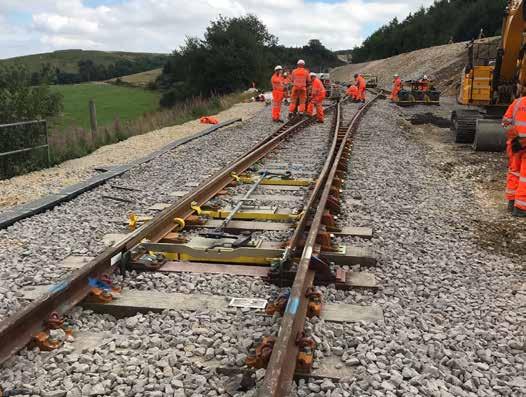
Prior to any move being authorised from the mainline to Hillhead Quarry siding, the shunter checks that the hand points are correctly set after operating the ground frame. The ground frame release is via the possession of a single line token, which is consistent with the existing arrangement at Briggs Ground Frame further along the line. The token machine at Hillhead Quarry also allows a train to be ‘locked’ inside the quarry facility, and a token released by Buxton Signal Box allows the train access back onto the Buxton and High Peak Junction line.
The shunter contacts the Buxton signaller and requests the release of a token. Once a token is obtained it is inserted into the lock of the release lever, and both point levers are operated to move the points reverse to allow the train to join the main line. The shunter ensures that the points on the ground lie in the desired position before authorising any movement. For the crossover to be normalised via the ground frame, drivers are required to ensure that the rear of the train is clear of the points on the main line. This is achieved by radio communications between the shunter and driver. The token is then transferred to the loco for onward movement.
Buxton
The existing Buxton and High Peak Junction line token equipment at Buxton Signal Box has not been changed and the regulation of train movements on the line remains with the Buxton signaller as before, taking into account any additional token release requests from Hillhead as well
as Briggs. Because the single line token type is unique to the Buxton and High Peak Junction line, the token can be used for either Hillhead or Briggs ground frames.
A sufficient quantity of tokens is provided to avoid any imbalance of tokens between Buxton, Briggs, and Hillhead, it being assumed that only one train may be locked inside Hillhead Quarry, plus one additional light-engine (for rescue purposes) also locked inside the siding. The use of the existing single line token apparatus to access Hillhead Ground Frame means the same token keys can be used at all ground frames on the route. The implementation of Hillhead Ground Frame and the trackwork for the crossing
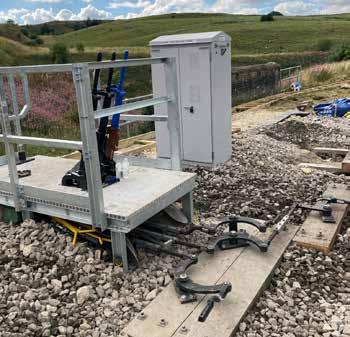
has been a great railway collaboration project, and the signalling was signed into use on 4 September, ready for the railhead connection siding to be used towards the end of the year. The simple mechanical ground frame requires no power and the experience gained by the locking fitters and designers will no doubt be used elsewhere on the network.
It is a great example of collaborative working between different sectors of the rail industry to provide a sustainable railway facility to reduce the number of HGVs on the roads and bring down carbon emission.
With many thanks to Richard Wright and Sean Nicholson for their help with this article.
17 Rail Engineer | Issue 198 | Sept-Oct 2022 SIGNALLING & TELECOMMUNICATIONS
ONE YEAR ON R

ail Engineer first met SigTech Rail Consultancy Ltd in November 2021 to discuss its abilities and plans to support the operational railway. A year later, we met up with SigTech again to learn how the company is progressing.
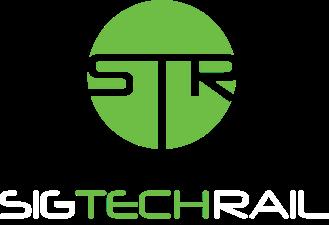
SigTech Rail provides specialised, efficient signalling support for track and point renewals, civil engineering works, maintainers, and any project that involves signalling. The company has developed to become a first-class provider of specialist signalling services, including nonconceptual design, installation and permanent way signalling support, along with operational telecoms.
Adaptive and innovative

Network Rail has said it is committed to delivering more work via small and mediumsized Enterprises (SMEs) such as SigTech, and that 33% of its annual expenditure is being spent via SMEs. Over the last four years, Network Rail has increased its expenditure with SMEs, achieving 25.61%, 26.78%, 30.4% and 35.6%, respectively. SMEs are important to Network Rail as, it says, such companies are recognised as being highly adaptive and innovative, and are not constrained by large overheads and excessive company processes. The government also says small companies play a significant role in the growth of the economy, with SMEs accounting for approximately 15.7 million jobs in the UK and 60% of all private sector employment.
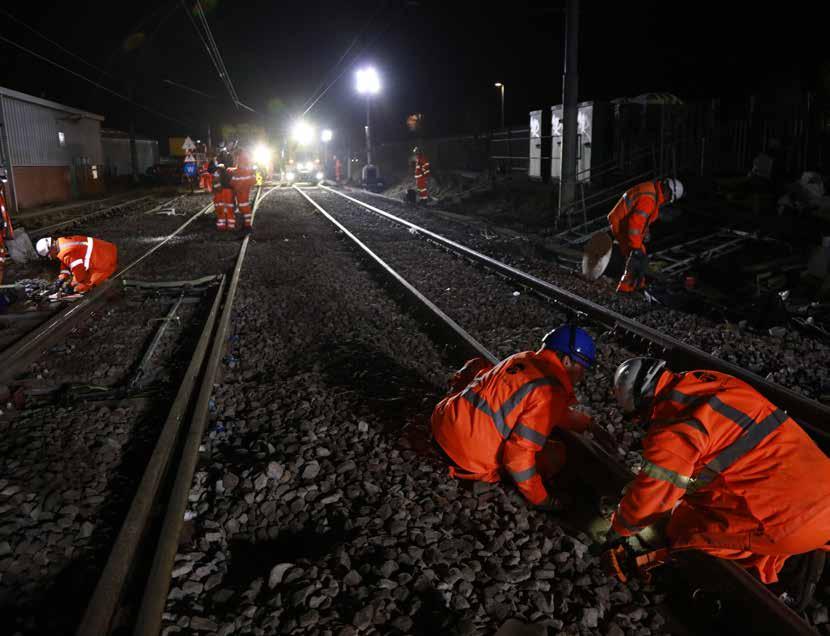
The company operates throughout the country and was originally based near Canterbury in Kent. However, to enable quicker and easier travel to its clients, the company has moved its base to Derbyshire. This is an ideal location to support routes such as the East Coast Main Line, West Coast Main Line, and HS2; together with major rail locations such as Derby, Birmingham, Crewe, Liverpool, Manchester, and York. The company is now ideally placed, being closer to all of the cities in the running to become the HQ of Great British Railways.
SigTech Rail’s unofficial motto is however “have van will travel” and it considers its work area as all of the UK. This summer it had six projects successfully taking place at the same time in: Newcastle upon Tyne, Liverpool, Manchester, Birmingham, London, and Southampton. The company’s support teams are also located around the country, including Kent, Edinburgh, Nottingham, and the Wirral.
Hammerton lever frame renewal
Typical of the type of work SigTech has been involved in during the last year is the renewal of the locking frame at Hammerton station to the West of York. Over the weekend of 12-15 August, the firm worked alongside locking fitters from Network Rail to renew the lever frame.
Hammerton is an intermediate station on the York to Harrogate route, which is signalled by traditional mechanical branch line signalling, located between the modern electronic signalling at York and Leeds. However, the lever frame is unusual as it is located in an exquisitely designed
Rail Engineer | Issue 198 | Sept-Oct 2022 18 SIGNALLING & TELECOMMUNICATIONS
PAUL DARLINGTON
wooden ‘hut house’ on the platform. It is thought to date from the signalling of the line in the 1880s and an 1895 survey records eight ‘signal boxes’ on the line as being “Wood Cover on Platform”. In 1914 a McKenzie and Holland No.16 lever frame was provided, and it was this frame that was being replaced over the weekend in August.
The frame was heavily worn with salt and grit from the many years of signallers’ boots walking to and from the nearby gated road crossing. A replacement frame was recovered from Bardon Mill, Northumberland; which was renovated and re-built at Holgate depot in York, with only the necessary 10 levers from the 20 recovered. The frame was then dismantled and transported to Hammerton.
The company’s role was to disconnect all the electrical lever locks and circuit controllers attached to the frame. After the frame was replaced by the locking fitters, SigTech’s installers re-terminated the 89 wires under the control of its lead tester. Following installation (with it working first time) the frame was transferred to the test team of SigTech and Network Rail for them to undertake the required testing. It was then handed back ready for the first train on the Monday morning.
Joe Young, mechanical and electrical locking supervisor for Network Rail North East, said: “I would personally like to thank everyone who has been involved and dedicated to the Hammerton lever frame renewal. There have certainly been many tense moments and issues to overcome, however as a team we have conquered and succeeded. The renewal of the frame is a fantastic achievement which should be celebrated by everyone, bearing in mind the last time a lever frame renewal on this scale was conducted was by British Rail back in 1981. In my eyes, this is an accomplishment that we should all be proud of.”
Southport Birkdale platform extension
Another example of work successfully carried out by SigTech Rail is the modification of the tuned TI21 track circuit system at Birkdale station near Southport. New for the Merseyrail network is a specifically designed variant of the Stadler Class 777 units. The existing Class 507/508 trains are 60.7 metres (3-car) and 121.4 metres (6-car), but these new Stadler trains are longer at 65 metres (4-car) and 130 metres (8-car). Extensive platform works at 92 platforms at 56 stations and track realignments have been required to accommodate the new trains.
The works are essentially civil engineering, but in the case of Birkdale station the TI21 track circuit needed modifying with an Insulated Block Joint (IBJ), so the company was brought in by the civil engineering company to resolve the issue. This sort of situation can often occur with railway civil engineering works, when the main contractor needs a quick efficient way of delivering any S&T asset work that is affected by their core works. SigTech is ideally placed to arrange any design work and carry out the work and testing out safely in compliance with all Standards requirements.
The company has also been involved with supporting track work and switch renewals around the country, for example supporting the Tyne and Wear Passenger Transport Executive network (Nexus). Working around the country and on different railways allows SigTech to experience and then share best practice; which is even more important for today’s non-centralised, devolved, national rail network.

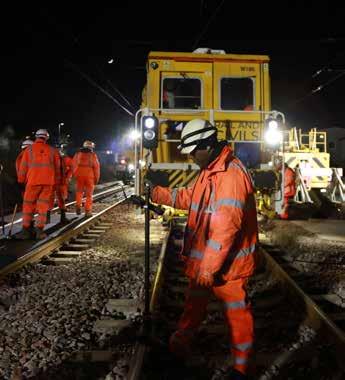
SigTech is also available to assist with ‘tricky’ faults and it can sometimes help a maintainer for an independent person to assist with a difficult fault. No matter how competent a maintainer may be, a fresh pair of eyes and a different approach can often help.
SigTech Rail has recently assisted with resolving a wide to gauge set of points at Edge Hill Liverpool, caused by excessive rail wear due to extensive freight traffic and tight curves.
Meeting clients’ needs
It is clear that the company has established very good relationships with its clients, enabling it to provide a quality service and more meaningful interactions. This results in a good, personalised service, and for the clients’ needs to be met more accurately. As with most SMEs, which have fewer employees, it’s easier for people to get to know one another and form deeper working relationships. As a result, everyone can support one another and pick up on particular strengths and qualities, which improves teamwork skills and performance. Knowing colleagues on a personal level makes the working environment a comfortable one, and this is reflected by the level of service provided to customers.
SigTech Rail’s simple employment structure allows for adaptable individual requirements; such as working from home, working flexible hours, or attending family commitments.
Specialised service companies offering niche, quality services are distinguished from other larger businesses and organisations. This instils a sense of confidence amongst clients.
Rail Engineer | Issue 198 | Sept-Oct 2022 19 SIGNALLING & TELECOMMUNICATIONS
The personal relationships that are established with smaller workforces help to create a strong team spirit, whilst instilling mutual goals. Each individual in an SME is crucial to the success of the business, creating mutual respect and a sense of camaraderie. SigTech is also keen to train and mentor new entrants into the industry, and has plans to support heritage railways and provide apprentices the opportunity to learn and work on mechanical signalling. This is a win-win for everyone; providing apprentices valuable experience and heritage railways with more costeffective signalling.
Reduced costs
It’s perhaps inevitable that SMEs will consume much less energy when compared to larger businesses – a factor which is now more important than ever. There are fewer computers, printers, and lights running, which reduces both initial and maintenance costs. In many cases, the money that’s saved on resources can be used to offer a lower price to potential clients – making them not only a more specialised, but a more cost-effective option.
Within an SME like SigTech Rail, decisions can be made and implemented much more efficiently. Instead of having to be discussed by large groups and layers of people, decisions are quickly made and accurately communicated directly to everyone in the business.
Certifications
Being an SME doesn’t mean a company does not have independent assessments. SigTech has impressive certifications, which include ISO 9001 Quality Management. It has been verified and audited by RISQS to undertake fixed price works and is also a Certified Member of CIRAS (Confidential Incident Reporting Analysis System for Transport).
The company has also achieved Gold Membership with Constructionline and is now a verified and pre-qualified contractor, providing signalling maintenance and support services throughout the UK rail industry. The Constructionline Gold Award also verifies to PAS91 and includes Acclaim Accreditation which certifies SigTech within Safety Schemes in Procurement (SSIP) by demonstrating the company’s compliance with relevant health and safety legislation.
As signatories of the Rail Supply Group Work Pipeline Visibility Charter, SigTech will also provide its work pipeline visibility across its supply chain in order to allow suppliers to plan and invest with confidence, driving improvements in productivity, and enhancing collaborative delivery.
If you need a cost effective, knowledgeable, safe, and reliable firm to undertake signalling work to support your project or maintenance area, give SigTech Rail a call on 01303 764344 or visit www.sigtechrail.co.uk. SigTech Rail is always ready and waiting to share best practice and help any project over the line.
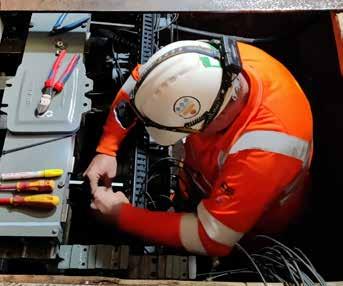

20 Rail Engineer | Issue 198 | Sept-Oct 2022 SIGNALLING & TELECOMMUNICATIONS
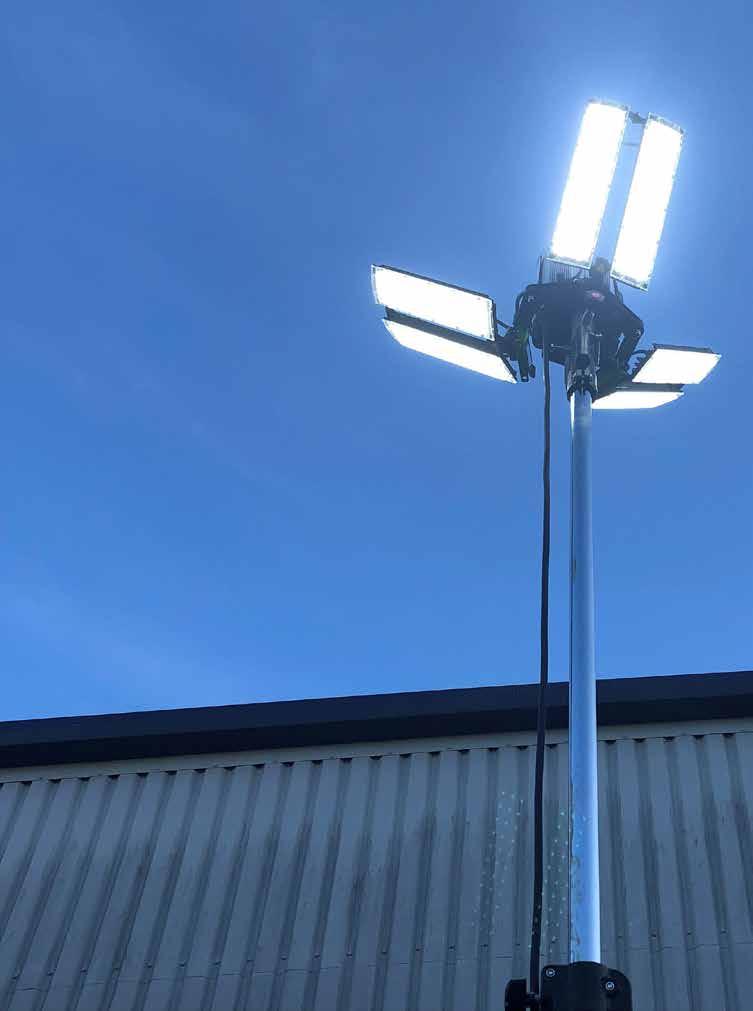


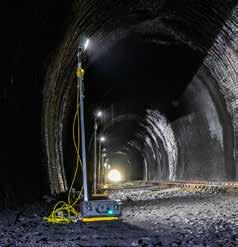


VIEW AND DOWNLOAD OUR E-BOOK trust us to deliver onSaveC02 emissions with our generatorsbattery PRE PLAN YOUR RAIL FESTIVE BLOCKADES By working in partnership with Speedy Rail, we can: • Deliver a complete managed service for your site • Supply up-to-date quality products / engineers / operators to match your needs • Reduce carbon footprint • Manage transport costs • Advise the correct products for safely lighting up your site • Support you with our on-call 24/7 dedicated rail desk Visit speedyservices.com/rail/festive-blockades or contact 01942 277 982 for more information and to plan for your festive blockades SUSTAINABILITY IN A WHOLE NEW LIGHT Portable and Managed Lighting Solutions for every Scenario We can provide managed site lighting services for all scenarios. • Plan ahead • Save on cost • Reduce risk See how our lighting solutions can reduce your carbon emissions with our online calculator. Visit: speedyservices.com/rail-calculator 01942 277 982 speedyservices.com
A signalling exposition
Periodically, the signalling and telecommunication profession demonstrates and shares its technology and innovations, safety policy, business methods and finances as seen by rail infrastructure organisations, train companies and the supplier base.
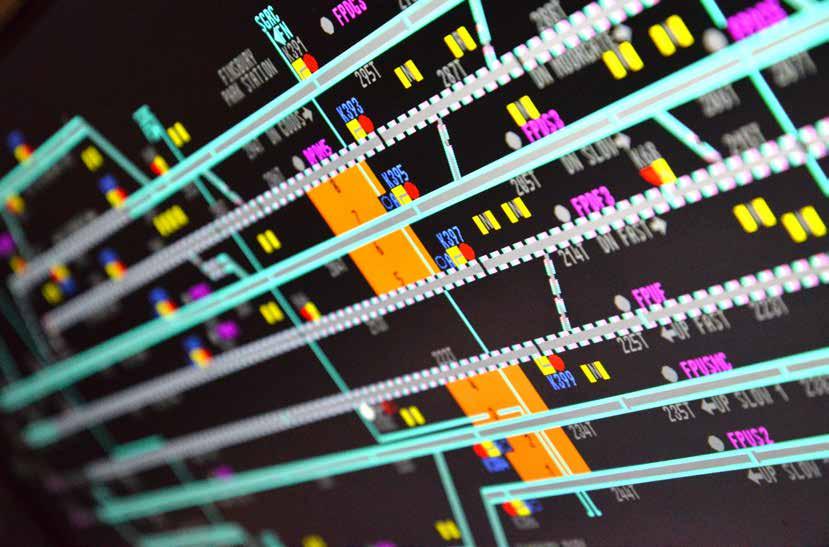 CLIVE KESSELL
CLIVE KESSELL


Most recently, this was achieved through a fiveday convention in Glasgow, organised by the IRSE. The subject matter had a Scottish flavour but the success stories and lessons to be learned had relevance for all the UK railways and many overseas railways as well. With attendees from right across the world, it was remarkable to hear during the socialising sessions, just how many of the problems being experienced in Britain were the same elsewhere. With a mixture of talks and technical visits, real progress was evident in some areas, though deployment of the gamechanging technology that could yield substantial commercial benefits continues to struggle.
Current signalling technology
British Rail led the way back in the 1980s in the development of computer-based signalling commonly known as Solid State Interlockings (SSI). This took many years of tripartite cooperation between British Rail, Westinghouse (now part of Siemens Mobility), and GEC (now part of Alstom) to get an acceptable product standardised and approved for general use. The computer technology has moved on from those early days and improved versions of the interlocking have evolved into WestLock from Siemens and SmartLock from Alstom.
Both have much greater computing power but retain the same data formats. Being bespoke products, they are expensive and increasingly only used where much of the associated trackside equipment is to be retained.
Ben Hugh from Siemens Mobility described an alternative approach that provides a complete solution for all the required signalling intelligence including the interlocking. Known as the Westrace Trackside System (WTS), this may be regarded as a ‘toolbox’ of Westrace units. The interlocking element is designed as ladder logic and was first used on some metro line projects including the London Underground Central Line upgrade. Westrace uses standardised templates which leads to faster designs with pre-wired components, this allows factory testing such that when the system leaves the test yard, it is known to work.

Rail Engineer | Issue 198 | Sept-Oct 2022 22 SIGNALLING & TELECOMMUNICATIONS
Traditional Lever Frame at Larbert Training Centre.
Another objective is to cram as much equipment into the lineside equipment room, itself being designed with a modular layout. This results in fewer lineside cases and thus fewer maintenance visits. External elements such as points and signals are connected by plug-coupled tail cables, measured beforehand to be the correct length. Each Westrace unit is a standard module design (e.g., a point module, a signal module, etc.) such that multiple connections can be made into one unit. Thus, a point module might be capable of serving, say, four point machines. If only one point machine is served, it might seem that the unit has more capacity than needed but the fact that it is standardised means that overall cost saving is achieved.
Westrace is designed to provide better remote condition monitoring including earth leakage detection with connection to thirdparty non-SIL equipment. Future developments include the use of cloud diagnostics and the use of alternative transmission links to replace customised cables. These might include lowpowered radio and existing lineside comms. The WTS installed base is impressive and includes London Bridge, Derby, Liverpool Lime Street, Kings Cross, and, most recently, Macclesfield.
Lower cost signalling
The cost of signalling is a contentious issue and several initiatives have occurred recently to provide more cost-effective technology, especially for rural lines. Park Signalling made much of its replacement design for a lookalike single line token instrument. Known as DiBloc, this is a digital block controller that connects to other instruments using secure IP

Communication. A full description of the system was given in Rail Engineer Issue 174 (May 2019) so will not be repeated here. The first application has been on the Romney Hythe and Dymchurch narrow gauge railway in Kent and a contract is let for the Whitland to Tenby line in West Wales. There are still a few single lines that are operated by token machines so, although the market is not huge, it is significant and may have opportunities for overseas railways. Radio Electronic Token Block (RETB) has been around for over 30 years but recent work to improve performance, partly necessitated by a radio frequency change, has made the system more reliable with more features. Under a main contract with Telent to provide overall delivery, both the West Highland Line and the Far North lines in Scotland have benefited from the upgraded system. Whilst the basic principles of a chain of radio links from the control centres at Bannervie and Inverness remain, the radio network has been completely renewed with equipment being designed and supplied by Comms Design Ltd, a Harrogate company specialising in bespoke radio equipment. These lines are in remote areas and very often there are no passengers to join a train at the stations. To avoid the driver having to slow down in case a passenger is waiting, Request Stop units have been developed by Park Signalling linked into the RETB network. On the platform, a unit is provided that gives the time of the next train services, usually in both directions. A button is then pushed to request the train to stop, with this then being posted on to the driver’s RETB token screen. Currently being trialled at Scotscalder, it is expected that these units will be rolled out to all stations on these lines.
A limitation of RETB operation is the hydraulically controlled loop points (effectively spring points) that can be trailed through in the wrong direction, necessitating a severe speed restriction. Park Signalling is investigating
 RETB overview.
RETB overview.
23 Rail Engineer | Issue 198 | Sept-Oct 2022 SIGNALLING & TELECOMMUNICATIONS
Request Stop Indicator.
the motorising of points and control of their movement by RETB commands. This would improve the speed profile and enable valuable time savings to be made, particularly if a train does not have to stop at the loop location. It would however require a power source to be provided, not always easy in very remote places. Another future initiative is to use GPS positioning information which trains are increasingly equipped with, to link into the RETB network and provide the signallers with accurate and continual train location data. Watch this space to see how these developments turn out.
Asset management
Keeping signalling in reliable and safe condition is always an important responsibility, however the processes for assessing when and how to renew assets must consider many factors. Lynsey Hunter, the Regional Asset Manager for signalling in Scotland, explained some of the challenges. Signalling equipment has an average life span of 30 years, meaning regular maintenance until when it is not possible (often because of obsolescence issues) whence renewal is required. The spend profile for different assets, if renewed piecemeal, means spending more than if you renew a complete system in one go. Other influences may prevail:
» Passengers want enhancements which signalling can help provide.
» The regulator will hold you to the promises you made.
» Train operators expect the infrastructure owner to pay.

» Other assets, such as stations, may influence the future signalling system.

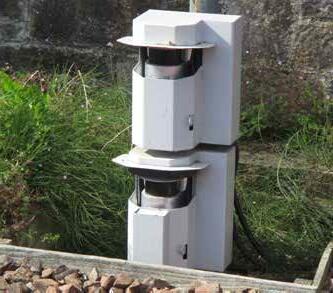
» The funder wants value for money.
Signalling costs do not vary that much if the line has eight trains a day or eight trains an hour, but enhancements such as a loop extension create questions around who pays for what. Modification or updating an asset is not always acceptable. Dressing up a donkey still leaves you with a donkey! Stakeholders need both a perception of the risk and the willingness to take risk. The supply chain needs regular orders to keep them in business.
Decarbonisation and technology
Decarbonisation, buzz word of the moment, is often seen as having little relevance for signalling, however there are areas where carbon reduction can be influenced by some of the more recent technologies. Stephen Wright from Siemens Mobility went through some of the systems that can help. ETCS, TMS, and C-DAS can all contribute to improving train performance and thus to energy reduction. Fine in theory, but these systems have been available for many years. Whilst some are being introduced in dribs and drabs, deployment in the quantities originally intended has never happened. When questioned, the general opinion is that upfront investment in such systems fails to take a long-term view of the benefits that are realisable and thus the money is not forthcoming.
One can only hope that this situation improves as countries are setting challenging targets for carbon reduction, Scotland wants all passenger services to be decarbonised by 2035 but TMS and ETCS seems as far away as ever.
Staff training
The shortage of competent engineers and technicians is well documented, so training new recruits to the profession is vital. Scotland has a dedicated training centre at Larbert which covers all aspects of signalling systems, from traditional lever frames to ETCS, with a full range of rail and trackside equipment housed in a simulated railway hall as well as outside. Point operating mechanisms abound, both electrical machines and clamp locks.
Two elements of training were given specific focus to the visiting members: » Level crossing modernisation is prominent with obstacle detection crossings and the supporting radar and lidar equipment needing to be fully understood. It is often thought that OD (obstacle detection) crossings are there to upgrade a crossing from AHB (Automatic
Larbert Training School Points and Signals.
Obstacle Detection
24 Rail Engineer | Issue 198 | Sept-Oct 2022 SIGNALLING & TELECOMMUNICATIONS
Crossing LIDAR and inset RADAR.
Half Barrier) but this is not the case. With the concentration of signalling into ever more centralised centres, full four-barrier CCTV controlled crossings could well overwhelm the capability of a single signaller. Thus, OD crossings are primarily there to remove the responsibility of the signaller to prove the crossing clear, with the additional benefit of automating the crossing in the process. A full understanding of these crossings is needed, particularly the sequencing of operation during the barrier lowering and detection processes.
» TCOD (Track Circuit Operating Device) is an important element in improving staff protection when needing to work on running lines. Placing such devices and managing their presence can be a challenge for local staff. An improved version which includes its GPS positioning and is capable of interrogation has now been developed. Whilst still portable, the TCOD is sprung into position at the desired location and activated by a single person at the site. With a unique serial number and its GPS position shown by a seven-digit numeric code, the battery powered GPS and mobile radio is placed nearby in a secure box.
When needed, the site supervisor consults with the signaller and, once satisfied, the TCOD is then activated. In busy areas where track maintenance is undertaken frequently, the TCOD can be left in position permanently, the battery life being several months. It can be interrogated and activated remotely, thus saving the need to walk out and put a TCOD in position. This is a fully approved product with around 400 already in use.

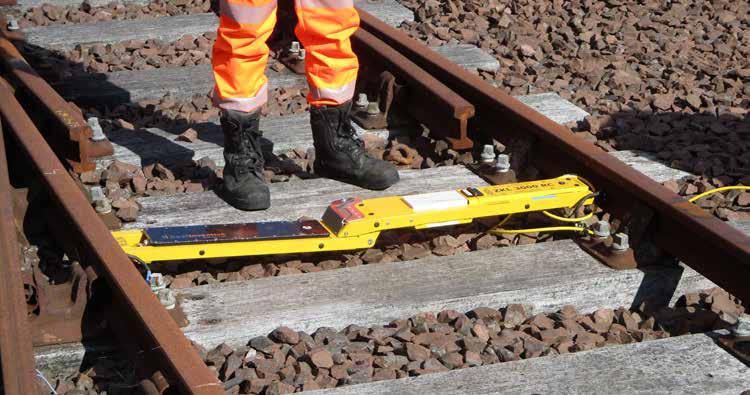
Satellite communication
Satellites have the advantage of being able to provide communication in even the remotest of areas. Scotland has many such locations and at some places where level crossings exist, providing a telephone service to the public can be a challenge. A trackside SatPhone has therefore been developed by Iridium for which Dr. Bob Gardner from Network Rail gave details. Power is provided either by solar panels or a local wind generator. Use is made of low-orbit satellites, so guaranteed connection to at least one of them is assured.
Monitoring for flooding and bridge scour was featured in Rail Engineer issue 197 (July/ August 2022), whereby the transmission of alarm data also uses a satellite connection to Iridium’s control centre in the US, and then to a customer’s operations centre by a virtual private network (VPN).
25 Rail Engineer | Issue 198 | Sept-Oct 2022 SIGNALLING & TELECOMMUNICATIONS
TCOD in position.
Delivering broadband to trains is an ever-demanded request from the travelling public and Network Rail is investigating a satellite derived service for the East Coast Main Line. An IC225 was fitted out with a Starlink terminal but, for some reason, this was never used. A new initiative is underway on the same train with the intention of providing a 500Mbits/sec connection. Tests are taking place over a 200-mile stretch of the route and, so far, have achieved 190Mb/s in the download direction and 17Mb/s for the upload. Work is ongoing. Inevitably, where tunnels exist, the connection will be lost but, with higher speed trains, maybe a holding facility can be used to automatically re-connect once daylight is reached again. Using satellite connections does invoke a financial charge reckoned to be between £80 and £400 per month, dependent on the capacity required.
The Carstairs remodelling
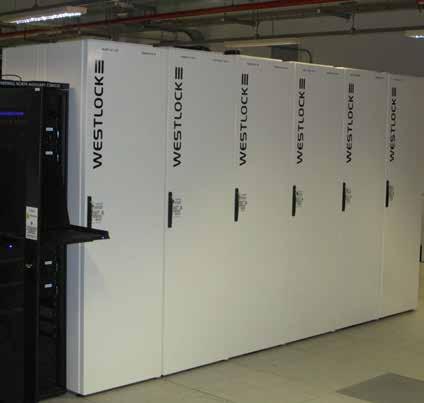
One of the biggest projects in Scotland is remodelling the triangular junction at Carstairs, the place where the West Coast Main Line from London splits for Glasgow or Edinburgh, as well as providing another Glasgow to Edinburgh route. It is also the place where the overnight sleeper service to and from London splits into two portions. The present layout is complex with significant speed restrictions imposed. Around 200 trains pass through on a daily basis.
The remodelling will segregate the fast lines from the station platform lines to give much improved line speeds of 100mph to Glasgow and 40mph to Edinburgh. Thirty-five point ends will be reduced to 28 and a complete resignalling is necessary with flashing 5th aspects being deployed. The revised track layout demands new portal overhead line gantries to be provided for the OLE. The total cost is £160 million, so this is a major project. The work will be carefully staged to minimise disruption with most of the rudimentary work having been completed, however a 16 day closure will take place in early 2023 requiring LondonGlasgow trains to be diverted via Kilmarnock.
West of Scotland Signalling Centre

A visit to this centre proved revealing. The signalling area covered is continually being expanded and already has taken over the routes covered by the now closed Glasgow Central and Motherwell power boxes of 1970s vintage. The route from Paisley to Ayr is included and further routes towards Kilmarnock will eventually be added.
Gone are the days of large mimic panels and all train movements are viewed on computer screens, some of which are quite large. Around 10 workstations exist, tailored to specific areas. Train movements are generally set automatically from the timetable database using the automatic route setting facility but the signallers choose to do manual route setting from time-totime so as to remain competent. The interlockings are Westlock but as the signalling centre has grown, more modern variations of the product have been used. A new Westlock will be provided for the remodelled Carstairs area.
From a telecoms perspective, it was interesting to talk to the signallers. Communication with drivers is invariably by the GSM-R radio network. Just occasionally, a call may be picked up by a ‘wrong’ base station and sent to the wrong signaller. Local procedures deal with transferring the call to the ‘right’ signaller. The only users of SPTs are track staff and even this is rare. As one who has campaigned for years to have SPTs removed, it would seem that Network Rail should bite the bullet and take the decision not to provide these in future. New SPT systems are increasingly expensive to construct (sometimes over £1 million for a big centre) when budgets are constrained.
Final thoughts
Scotland has an enviable reputation for being proactive in expanding its rail network. Several lines have re-opened in recent years with the latest – to Levenmouth – expected to open in 2024. All of these have employed traditional signalling and there is little evidence that the adoption of ETCS will feature in future proposals. The use of RETB is commended but whether this will ever be expanded to other lines is debatable. Some deployment of C-DAS is beginning to happen but no plans for Traffic Management Systems were evident.
The adoption of the latest technologies to yield undoubted benefits for capacity improvement and decarbonisation seems only to be happening piecemeal throughout the UK. Maybe the future Great British Railways and government thinking might be persuaded to take a new look at this.
Work Station at WSSC.
26 Rail Engineer | Issue 198 | Sept-Oct 2022 SIGNALLING & TELECOMMUNICATIONS
Westlock Computer Based Interlocking.
VIRTUAL REALITY SIGNAL SIGHTING




True North Rail use the latest gaming engine technology incorporating project Survey/Design and GIS data to create high fidelity virtual reality worlds that ensure all Signals, Signs and Indicators are Sighted to project requirements.



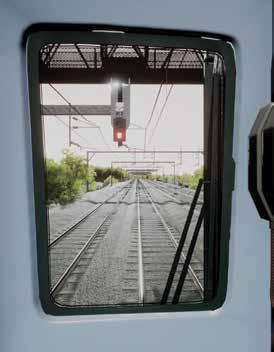
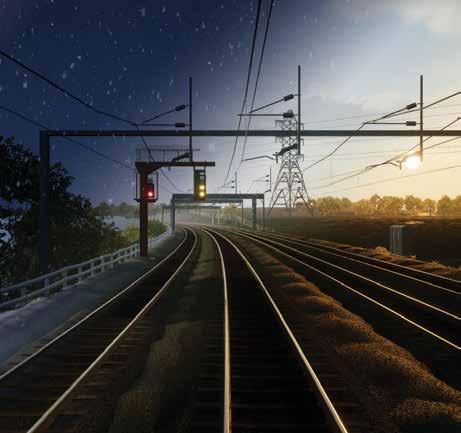
•
• Project SnakeGrid compatible
•
• Asset modeller - Quickly add rolling stock to adjacent lines to review sighting impact, with future provision to add OLE structures to define REFOS requirements for proposed structure renewals to achieve compliant sighting, as well as OLE SPS alteration.
• Save and review multiple scenarios for individual Signals
• BIM Integration - Export 3D asset models to inform detail design
• Quickly adjust time of day/date/weather – accurate sun paths for real-world sunlight impact analysis
• Supply of cloud-based models with sleeker more intuitive user interface, requiring minimal support/ training with access via a standard laptop/computer and internet connection
• Single-click export of all typical images required for Signal Sighting Assessment Records

OPTIMISE INNOVATE DELIVER
info@truenorthrail.com Call 07715
768
547
www.truenorthrail.com
Generate 3D assets from simple text-based data files
Import and export asset meta data (E.g., Line speed, ELR, Track ID etc.)
signalling power cables what’s all the fuss about? Jointing of

The Network Rail standard for enhanced unarmoured Signalling Power Distribution cables - NR/L2/SIGELP/27408 was introduced to tighten the specification for signalling power cables and support the introduction of class II methodology. The cable standard introduced several key requirements that drive the need to correctly specify the cable and the associated accessories – specifically the joints and jointing methodology used.
The cable standard re-introduces the use of aluminium as a conductor of choice alongside the traditional and more expensive stranded copper option. For the aluminium option NR/L2/SIGELP/27408 specifies solid conductors up to 95mm² and allows both solid and stranded conductors for sizes equal or greater than 120mm². To protect the cable from water and rodent-related degradation, the cable standard requires the use of water blocking tapes and fibreglasswoven rodent resistant tapes.

To supplement NR/L2/SIGELP/27408 and support the required target asset life of 35+ years, specific accessories standards have been written. NR/L2/SIGELP/27423 covers the requirement for cable joints and connectors. The standard says that, to achieve the target asset life, joints using resinous compounds are preferred.


Previous joints history
The history of jointing signalling power cables is chequered – at one end of the scale there are manufacturer assembled, fully compatible and tested joints, which include connectors designed and tested to meet the Network Rail requirements of the day. At the other end of the scale are joints assembled by third parties at the last minute to try to fulfil a particular urgent need, and which may or may not have been approved by Network Rail.
At both ends of this scale there would be a mix of technologies which may or may not produce a reliable installed joint capable of protecting the cable and meeting the Network Rail asset life expectations. This chequered history might have influenced the cautious approach of the industry related to the speed of the reintroduction of aluminium conductors.
28 Rail Engineer | Issue 198 | Sept-Oct 2022 SIGNALLING & TELECOMMUNICATIONS
DR. DAVID LAMB & JONATHAN RAWLINSON
Next generation cable joints
The standard NR/L2/SIGELP/27423 relates to joints intended for connecting signalling power cables, where the electrical system is either TN or IT and the nominal voltage is up to 650V AC. The cable types are defined as follows:
» a) Enhanced unarmoured cable to NR/ L2/SIGELP/27408.
» b) B2 ethylene propylene rubber (EPR) cable to RT/E/PS/00005.
» c) Armoured cable to BS 5467.

» d) Armoured cable to BS 6346.
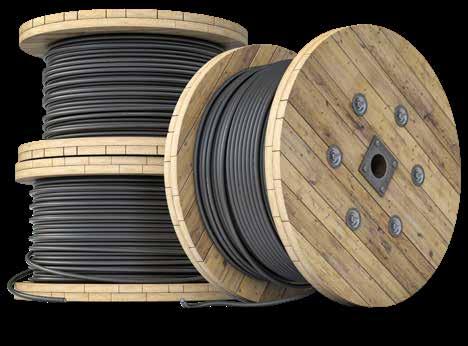
Within the joints standard, particular attention has been focussed on the conductor connectors or splices which requires full compliance with BS EN 61238-1 for both aluminium and copper conductors:
“Connector resistance, temperature, mechanical strength and short-circuit behaviour shall be in accordance with a Class A connector as specified in BS EN 61238-1.” (Network Rail, 2015)
In particular, connections between dissimilar metals, i.e., copper and aluminium, are specified to be made using bi-metallic connectors. These are required by NR/L2/SIGELP/27423 to be made by friction welding and similarly tested and approved to BS EN 61238-1.
Mixed experience
Network Rail has mixed experience with the aluminium conductor type cables leading to a previous preference for the copper conductors. However, driven by the recent high copper prices these cables are significantly more expensive and more liable to theft. Looking outside of the rail sector it was noted that the UK power utilities had been using aluminium conductors and their associated joints and connections without significant problems for over 40 years. It was also recognised that the industry had tight product specification and training requirements in place.
To ensure an equivalent success rate on the product specification, the Network Rail joint standard sets out specific requirements for conductor connections and their installation:
“Unlike copper conductor based distribution systems, aluminium cable is very intolerant of poorly designed and badly made-up connectors. Failure of a connector can lead to loss of the power distribution system, which in turn can cause severe operational disruption. This specification has been developed to ensure that connectors used in signalling power distribution systems are made to a consistent standard and the measures identified in this standard, when adhered to, prevent premature failure.” (Network Rail, 2015)
Focussing on installation, the Network Rail accessory standard requires that all connectors supplied shall be suitable for installation in accordance with BS 7609. This is the ‘Code of practice for Installation and inspection of uninsulated compression and mechanical connectors for power cables with copper or aluminium conductors’ and covers installation methodology, tooling and the maintenance and calibration of tooling. The Network Rail standard says that the preferred crimping tools are either battery-powered or electro-hydraulic and includes requirement for auto-checking. It also requires that manufacturers of connectors provide the necessary training packages to support their use.
Prysmian Group has over 40 years’ experience in the development and testing of crimp connectors, including our inhouse friction welding facility. To fulfil the Network Rail requirements the company
has developed, tested, and qualified a completely new range of copper, aluminium, and bi-metallic connectors specifically to fully meet the Network Rail requirements. These Network Railapproved connectors are fully compatible with the new Prysmian Group joint range. This means that all of its signalling power joints are supplied with the correct connectors for their application.
The Network Rail standard requires that all joints are compliant with BS EN 50393 and are classified as rigid Type II. As noted, in order to fulfil a target asset life of 35+ years, joints made using resinous compounds are preferred. In addition, to provide adequate flood resistance, the joints must demonstrate that they meet the water immersion tests defined in BS EN 50393. (Note: BS EN 50393 requires joints to function within their parameters after being subjected to immersion for 21 days with a 1 metre head of water.)
In order to ensure useability and safety the Network Rail standard specifically requires that the resinous compounds used shall be classification LMP/LI-LT (Low voltage, Mechanical Protection / Low voltage, Insulation protection and Low Temperature curing) as per the requirements defined in BS 7933-1. In a move to maintain the highest levels of health and safety, the standard requires that the resinous compounds and joint capsules used shall be non-toxic and nonhazardous.
29 Rail Engineer | Issue 198 | Sept-Oct 2022 SIGNALLING & TELECOMMUNICATIONS
Working in collaboration with the Network Rail approvals team, Prysmian Group has developed and fully product approved a completely new range of NR/L2/SIGELP/27423 and BS EN 50393 compliant joints. These joints utilise the company’s enhanced, low hazard, JEM jointing resin. Over 30 million litres of Prysmian Group JEM has been used extensively by many of the UK power utilities, with no electrical failures reported.
Prysmian Group’s JEM resin can be mixed and will cure at temperatures as low as -15°C, meeting the Network Rail low temperature curing requirements that may be encountered in the UK climate. It is also a low viscous material which makes it extremely easy to mix, and also extremely searching, minimising any voids that can occur with traditional resins. JEM resin is supplied in clear pouches which allows mixing to be observed during the process enabling the jointer to ensure mixing is complete prior to filling the joints. Another benefit of the JEM system is that when poured the filled joints, if undisturbed, may be energised immediately. From a safety perspective JEM resin is non-volatile, non-flammable, nonirritating and non-sensitizing in line with Network Rail expectations.
In order to meet the Network Rail reliability requirements, the joint system was put through the Network Rail product approval process which not only required the product to be fully compliant to BS EN 50393 type II but, by using tools like DFMEA and reliability and maintainability analysis throughout the development process, looks at ensuring the robustness of the product. In order to support this robust approach, it is a requirement that the joints are supplied with a detailed set of installation instructions which include stage-bystage photographs and instructions of the installation.
Jointing System Training
As part of the Network Rail accessories standard NR/L2/ SIGELP/27423, Network Rail has included a specific requirement for training and competence on the accessory: “Manufacturers shall have a comprehensive training programme that supports their product range. Note: Human factors and good workmanship drive asset life, without which the risk of premature failure becomes increasingly high. Successful completion of the training course shall be recorded in the candidate’s parent company’s competence management system.” (Network Rail, 2015)
It is clear that in order to meet the +35 years life expectancy of Network Rail the approved joints must be installed exactly as those tested and approved. Therefore, the requirement for specific training on the approved jointing system makes perfect sense. For some this training will be a refresher but, for those new to the industry, this training will be an entry point into the world of cable jointing.
The Prysmian Group training course is designed to give the delegates the knowledge and practical skills to joint two core and four core aluminium and copper rail signalling power distribution cables using the approved Prysmian Group RPJ enhanced cold pour resin joint kits. The course includes both classroom theory and practical sessions to ensure that the trainees can correctly and safely specify and install the Prysmian Group RPJ joints.
The course includes transferable skills such as:
» Electrical site safety.
» Best practice for reliable jointing of 1kV power cables.

» Understanding the risks of poor jointing and how to mitigate them.
» Understanding the perceived issues associated with jointing aluminium conductors.
» Safe cable handling methods (during jointing process).
» Identifying types of rail signalling power cable and understanding how to prepare them using the correct cable preparation tools and materials

The course also offers system specific skills such as:
» Selection of the correct joint kit for a specific installation and cables.
» Conductor preparation – particularly to overcome aluminium oxide build up prior to crimping.
» Demonstrating the correct crimp and die selection to produce reliable compression connections.
» Mixing and pouring of the approved JEM cold pour resin.
» Construction of the RPJ series joint kits in accordance with the Network Rail approved Prysmian Group jointing instructions.
Over the two-day course, trainees will receive both classroom theory and hands on practical sessions whereby, following expert demonstrations, they will get the opportunity to practice making their own cable joints. The course is concluded with an assessed multiple-choice theory questionnaire and the preparation of an assessed cable joint. Successful participants will receive a certificate of competence and the commensurate level of CPD hours.
Network Rail has developed a robust set of standards for cables and accessories for signalling power cables. These standards are ensuring the networks of the future are robust and live up to the high expectation of the UK travelling public and Network Rail itself. With the direction of Network Rail, Prysmian Group has developed a range of cable joints that facilitate the requirement for a long lasting, robust, and easily maintainable signalling power network. From training courses that have been completed to date, feedback suggests such an event adds value to the already approved product and enhances the probability of making better joints on the Network Rail system.
30 Rail Engineer | Issue 198 | Sept-Oct 2022 SIGNALLING & TELECOMMUNICATIONS
31 Rail Engineer | Issue 198 | Sept-Oct 2022 SIGNALLING & TELECOMMUNICATIONS
Digital practice makes perfect: Why the Elizabeth line worked first time
The inaugural journey on the Elizabeth line saw a train operate seamlessly across three completely different signalling systems on one journey, something that’s never been done in the history of Great Britain’s rail network.
The journey went ahead without a hitch, first time.
Live testing played a part in the run up to that journey. But digital simulation at the Crossrail Integration Facility (CIF), developed by Siemens Mobility, informed everything from the design through to testing decisions that led to a faultless first day of service.
So how did digital practice make things perfect on 24 May 2022?
Safely testing design theory
Compared to a typical railway, Crossrail requires a huge number of interfaces for people and technology to connect and communicate.
It requires a complex set of trackside, control centre, and train-borne equipment each with shared and individual interfaces
to a wide range of network sub-systems. These include the following:
» The control centre, which is underpinned by Controlguide VICOS, contains more than 10 direct sub-systems, including two to the interlocking and four to the train itself.
» Trackguard Westrace (the underlying signalling technology).
» Trainguard MT
communications-based train control (CBTC) system – the globally proven system used throughout the central section of the Elizabeth line.
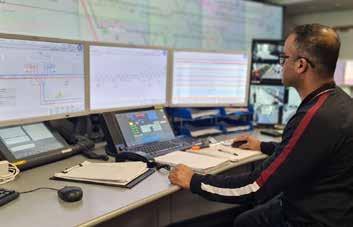
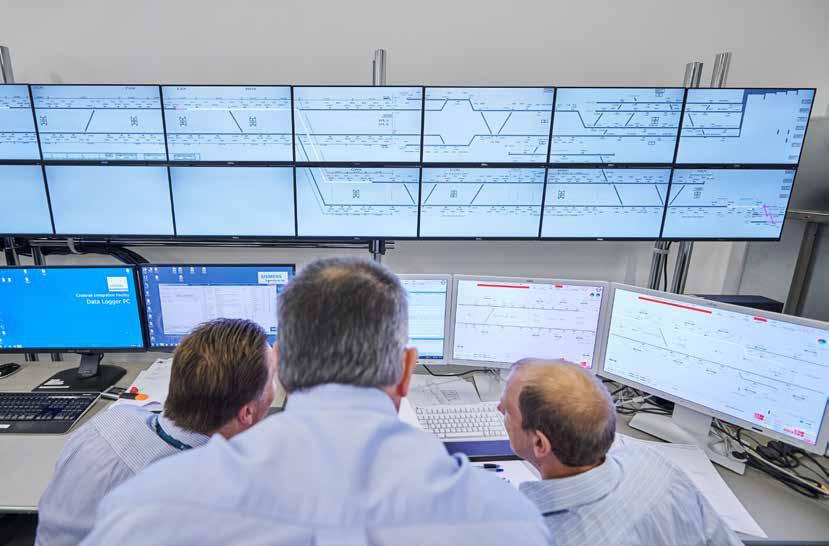
» The signalling system on the Network rail infrastructure at the western end of the line.
» The Platform Screen doors at the new Crossrail stations, supplied by Knorr Bremse
Whilst a lot of collaboration, systems engineering and interface design has reduced the risks associated with this, system integration has been critically important to allow smooth implementation.
32 Rail Engineer | Issue 198 | Sept-Oct 2022 SIGNALLING & TELECOMMUNICATIONS
To facilitate the process, Siemens Mobility has developed the CIF enabling a significant amount of off-site testing to be carried out. The facility operates ‘hand in glove’ with the company’s Braunschweig facility in Germany, where assurance cycles are run for safety-critical software before being deployed on the CIF at its UK headquarters in Chippenham.
The CIF features both real hardware and simulated versions of the signalling technologies, as well as a simulation system which creates a virtual version of the train and railway. It also features working replicas of the on-board controls and driving desk of an Elizabeth line train, complete with a screen giving a driver’s view of the railway.
This was used to test and prove the operation of many of the system interfaces in advance of their installation on the ground and their subsequent deployment. It also enabled the testing of each of the key signalling interfaces, de-risking this critical element of the programme.
Crucially, this approach allowed issues to be identified and rectified at an early stage and provided a system to support the quick turnaround of software fixes.
A platform for collaboration
As an off-site test facility, the CIF provided the team with a non-intrusive environment to test their equipment, discuss challenges, and simulate scenarios which helped to shape the solutions that were finally deployed.
Additionally, remote access to the CIF meant collaborative work could continue, despite Covid, which otherwise would have significantly delayed the delivery phase.
It also enabled partners such as Crossrail, Siemens Mobility, train builders Alstom, and platform screen door suppliers Knorr Bremse to have a credible integration environment for their equipment.
This collaborative approach led to a more efficient and robust delivery of the project.
Testing for today and tomorrow
The Elizabeth line will continue to evolve, and the CIF provides the platform for the planning and testing that’s needed before introducing upgrades.
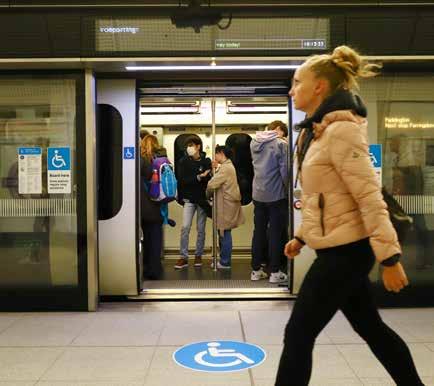
By using two test rigs, one that replicates the live railway environment and a second that reflects future system operation based on planned updates, the team can run comparisons to understand the impact of planned changes.
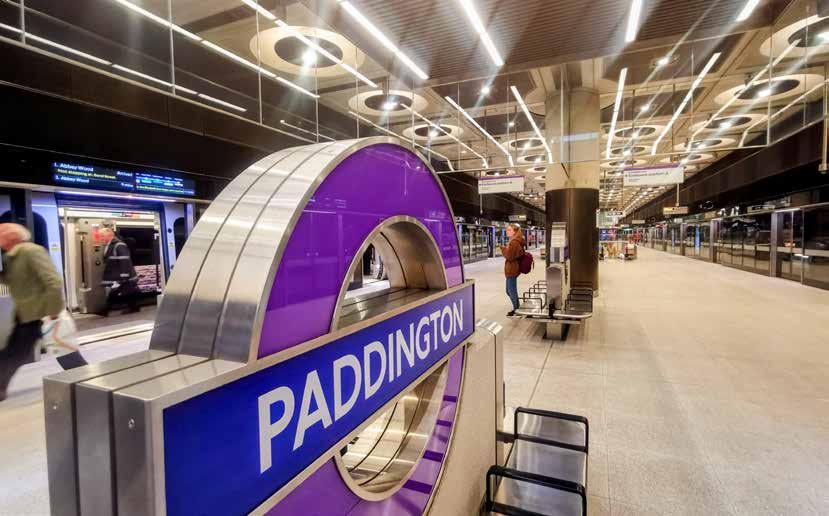
33 Rail Engineer | Issue 198 | Sept-Oct 2022 SIGNALLING & TELECOMMUNICATIONS
This will support ongoing Elizabeth line transformations including the following:
» Stage 5B‘-‘ of the signalling programme which will be rolled out on 6 November this year, to increase capacity in the central section of up to 22 trains per hour (tph) opening the line to new customers coming to London from the east. This stage will also introduce Sunday running, heralding the introduction of a full seven-day service.
» There will be an important software upgrade which will be carried out across the whole fleet to bring the auto-reverse system into operation. As a result, trains terminating at Paddington will automatically reverse into the sidings at Westbourne Park. This will allow the driver time to walk from one end of the train to the other without having to wait in the cab, which means they can be ready to depart immediately – an important time saving in
delivering the future 24 tph capacity.
» Further software updates will be delivered over Christmas 2022 and Easter 2023.
Digital simulation in future projects
The Elizabeth line has shown how important digital simulation facilities such as the CIF are for getting rail transformation projects right first time.


It helps reduce on-site testing, minimising the need for disruptive access, as well as avoiding disruption to passengers.
Ultimately, digital simulation will have played a crucial role in the safe and successful delivery of 24tph operation, improved links and additional capacity, transforming travel across London and the South East.
It will also play a critical part in future rail transformation projects across all of Great Britain’s rail network.
34 Rail Engineer | Issue 198 | Sept-Oct 2022 SIGNALLING & TELECOMMUNICATIONS
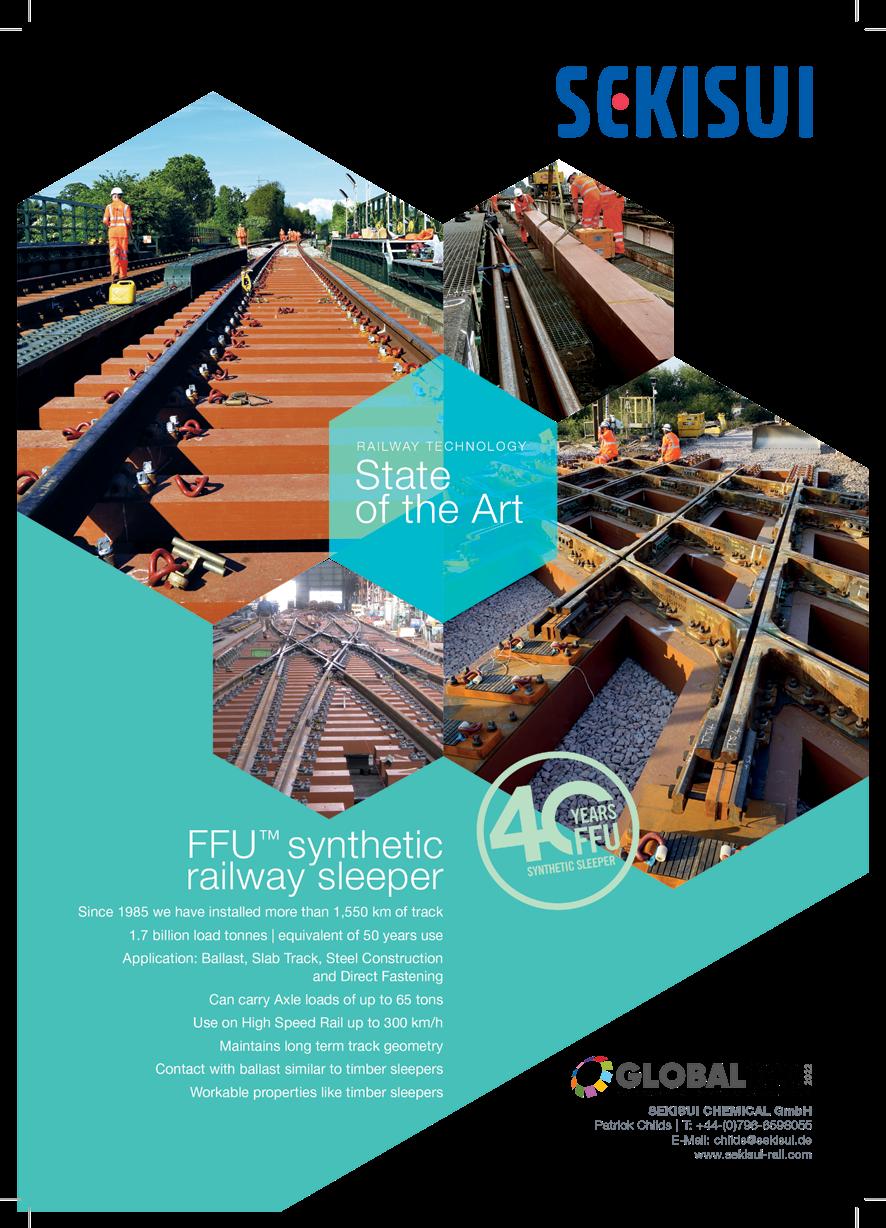
IMechE Railway Division
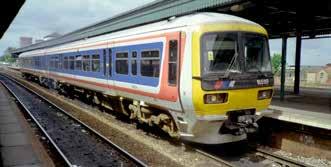
Early career
MALCOLM DOBELL


Noel Travers, the 54th Chair of the IMechE Railway Division, is touring the UK and beyond with his Chair’s Address entitled Not a very good engineer - the fallacy and effect of this mindset. Noel’s address summarises his career, highlights the contribution engineers can make in general management, and explains how the Railway Division can help to demonstrate the value of engineers when working ‘outside of their engineering boxes’.
Noel’s definition of a ‘good engineer’ is someone like Nigel Gresley of A4 Pacific fame, George Westinghouse inventor of the automatic air brake, Eddie Searanke, who designed the bogie that became the Alstom FLEXX Eco bogie, or, of course, the IMechE’s founder, George Stephenson, the ‘father of railways’. In other words, people who design iconic products. However, in conversation we agreed that engineering is a much broader church, and all the other branches of engineering need to co-exist to deliver whole systems.
Noel is currently the managing director of Xrail Group Ltd but, of course, that is not where he started.

Noel’s journey into engineering came about through his secondary education, partly near Preston, at a school where the best students were encouraged to apply for apprenticeships at what was then British Aerospace. At the age of 14, he moved back to his native Derry, Northern Ireland, and enrolled in a local grammar school. As Derry had little industry his school “focussed on getting as many students as possible into the tertiary education system to create career opportunities by, to be totally frank, broadening horizons outside of Derry.” Noel was good at science and maths and was lucky enough to have a careers advisor who encouraged him to do engineering and to apply for sponsorship to fund his way through university.
This led to Noel joining British Railways as an engineering management trainee in 1988 and enrolling on a mechanical engineering degree course at Loughborough University. “The British Rail Engineering Management Training scheme really was excellent – it gave a very broad overview of the entire railway system, the different forms of engineering involved and the potential roles for a mechanical engineer when you graduated”, Noel said. It was one of a very few that highlighted two paths available to trainees: the technical path to the Railway Technical Centre in Derby and regional centres, where the design and technical groups were based, or the management route into the world of maintenance depots. Noel chose the latter.
Noel’s first ‘proper’ role was as a technical assistant at Aylesbury Depot for Network SouthEast to support the new class 165 fleet, followed quite rapidly by a promotion to production services engineer. Noel said that these were the only true technical roles in his career, although as the trains were still in
CHAIR’S ADDRESS
FEATURE 36 Rail Engineer | Issue 198 | Sept-Oct 2022
2022
warranty, technical issues were mostly addressed by the manufacturer. “My role was to ensure that maintenance could be undertaken, that correct manuals, tools, spares etc., were in place, and managing the interface to the manufacturer for technical issues.”
Next was a move east to Wembley Depot as shift production manager (mk1, 2, and 3 coaches). This was mainly a management role, getting the best out of the teams with maintenance cleaning and even bed making for the AngloScottish sleepers. Noel also had to exercise engineering judgement to decide if coaches with issues were safe to enter service.
Headquarters
In 1995 Noel moved to British Rail HQ to work on the Freightliner Restructuring Team getting the Freightliner company ready for privatisation. Noel said: “the team had to arrange the maintenance of a fleet of diesel and electric locomotives and wagons, despite not owning any depots itself. To do this, maintenance contracts had to be organised, ensuring all the operator’s safety case requirements were met cost effectively.”
Noel added that he won a Young Members presentation competition for a presentation on the pros and cons of sub-contracted maintenance, something that was then quite ground-breaking.
Following privatisation, Noel joined Freightliner as assistant traction and rolling stock engineer. Freightliner operated in an incredibly competitive market and cash was tight. The diesel loco fleet was “poor and it was a daily struggle to get enough locos to operate the timetable”. There was no money to buy a new fleet, but Freightliner got into discussions with Brush which led to the development of the class 57 loco – a class 47 body with a second-hand General Motors EMD645 engine and ex-class 56 alternator. At circa £350,000 per loco this was less than 25% of the cost of new and did more than any other initiative to get Freightliner though its early days until new locos could be afforded.

Noel said, “the technical brains in the project came from Brush Traction and my boss, Jim Hailstone who was chief engineer for Freightliner; my
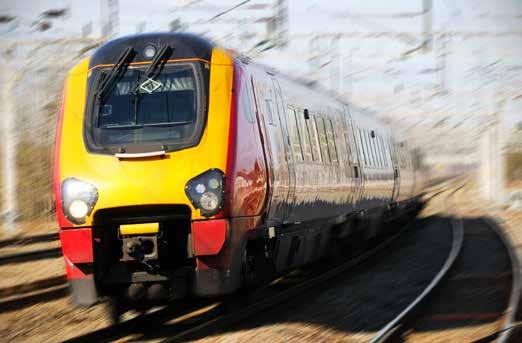
role was to bring commercial and cost analysis to get the right outcome for the money we had”. Noel aspired to move into commercial or general management roles, but the Freightliner boss of the day thought engineers should stay in their engineering box. This led Noel to seek a position elsewhere.
Leasing
In 2000 Noel joined GATX Capital − a leasing company seeking to establish itself in Europe − as senior director, later vice president. Noel couldn’t escape rail engineering as his first job was to oversee the manufacture and delivery into service of the Voyager fleet for leasing company Lombard (a division of NatWest Bank), to whom GATX was providing a residual value guarantee; taking the risk on the value of the fleet at the end of the leasing period.
FEATURE 37 Rail Engineer | Issue 198 | Sept-Oct 2022
Noel’s next move was to Lombard. “I had full responsibility for developing a market in bespoke operating leases for transportation assets, closing deals for light rail, and depots amongst others,” he said. “I also took on owner responsibility for the Voyager fleet, another commercial role where I had responsibility for all client interface and negotiations.”
Manufacturing and services
Following a call from a head-hunter in 2008, Noel was intrigued to be considered for the sales and marketing director role at Bombardier’s UK train building division. Noel said that “Bombardier was in a difficult position at this time having developed a reputation for not delivering on promises and only admitting to being late at the last possible moment, which was a huge risk to the then upcoming Thameslink bid – the biggest bid for trains and maintenance in recent history.
“I was responsible for changing the culture regarding how we communicated with clients especially about delivery performance. It was also my responsibility to mend relationships with major clients in general and the DfT in particular.”
The DfT’s specification drove the development of the Aventra platform from the successful

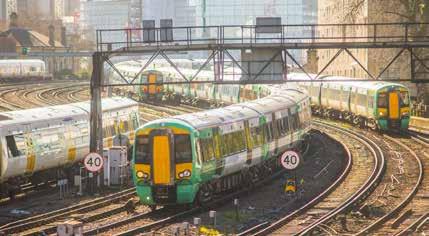
Electrostar product and, although Thameslink was lost, the closer working between train building and services bid teams led to the successful Crossrail bid. Noel’s last 18 months at Bombardier were spent as interim chairman and managing director, before joining Unipart Rail as managing director in 2016.
Unipart Rail makes, overhauls, and supplies components for train and infrastructure, Noel’s first involvement with the latter. “After a couple of years in the role I was also given responsibility for the automotive manufacturing businesses of Unipart Group, an interesting combination. I wanted to bring the manufacturing excellence from the automotive business to the rail manufacturing business, and in return bring the rail commercial thinking to the automotive business.
“I was surprised to find the dominance of the car manufacturers in their market and just how subservient the supply chain was. It didn’t feel like a particularly healthy customer-supplier relationship. But it was a fabulous experience operating in the very different automotive sector and I discovered that, as a railway engineer, I could hold my own in that environment.”
Noel took his current role, managing director of Xrail Group, in 2021. Xrail is an SME that operates in signalling and infrastructure and, inter alia, maintains the signalling system on the Haramain High Speed Line in Saudi Arabia and the Madrid to Valencia High Speed Line in Spain.

FEATURE 38 Rail Engineer | Issue 198 | Sept-Oct 2022
Decisions
The Railway Division elects its Chairs who are all eminent engineers but whose careers have taken all sorts of different routes. Noel described what caused him to make his career decisions and asked: “why did I feel the need to get out of engineering?”
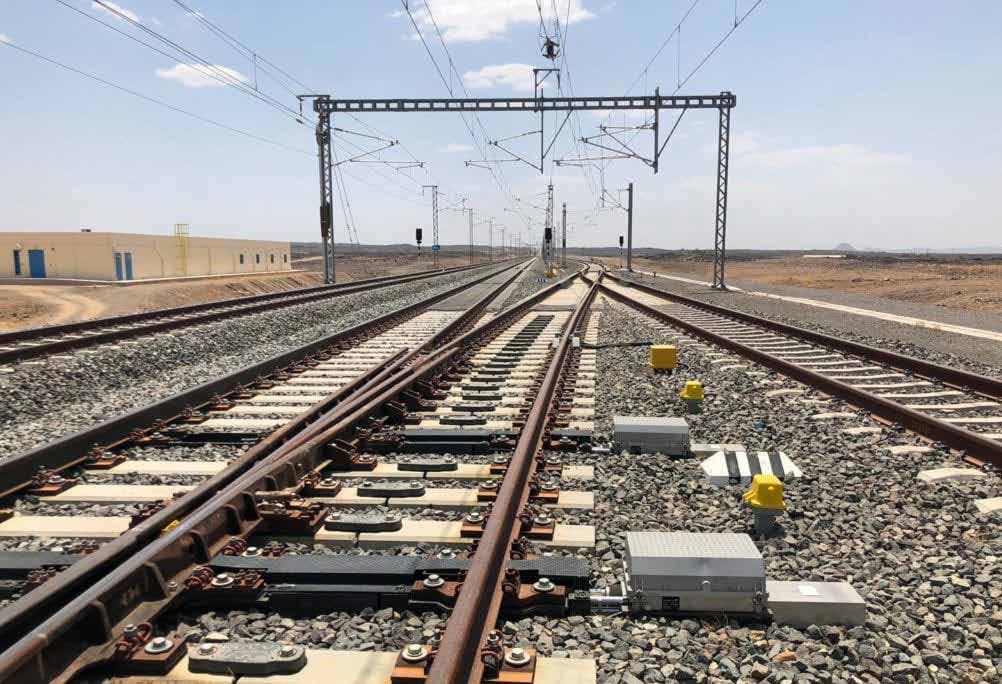
“Thinking back”, he said, “it was clear I was ambitious and was particularly keen to get into a general management position. I formed the view that I wouldn’t get an opportunity to manage a business coming from an engineering position. I believed I needed to get into some sort of financial role to be taken seriously, hence my move into banking and finance.”
Noel went on to cite a number of engineers who had been appointed to senior general management top jobs, four of them past Railway Division Chairs, but felt that little was made of the fact that they were engineers. He contrasted them with other past chairs who were senior engineers in manufacture, operations, or academia. All of them possess excellent leadership, communication, and analytical skills, especially the ability to explain engineering principles to non-engineers.
“The key point, that often passes us by, is the diversity
of opportunity that is open to professional engineers,” Noel continued. “Some people feel at home covered in oil and grease, some people don’t; we can accommodate both these types in our profession. Highlighting this will increase the diversity of candidates wanting to join us as a profession, and let’s face it, if any profession needed to increase its diversity it is ours!”
Noel highlighted the opportunities engineering can provide which might stop some people leaving the engineering profession in their early years to become accountants, bankers or, like Noel, financiers. “That said, engineers who leave the profession to do something else might come back having acquired more skills and we should do everything we can to entice these people back with their newly acquired skills,” he said.
The year ahead
In his year as Railway Division Chair, Noel will be encouraging the Institution to do more to highlight the diversity of opportunity that exists within the profession. “But it is not just the job of the Institution to do this”, he said. “It is incumbent on all of us and our organisations to spread the message far and wide,
otherwise our profession will continue to be dominated by people who look, sound, and most importantly, think the same and we will continue to lose talent to professions and sectors offering the sort of role that is attractive to as diverse a population as possible.
“Let’s offer work placement opportunities for undergraduate engineers in more diverse areas, let’s not just put them into depots, workshops, or design offices. Why wouldn’t we put them into businesses to shadow business leaders, indicating to them that their career can take them there. This will help us to develop better workprepared engineers when they graduate, but more importantly encourage these graduate engineers to pursue a career in our profession.”
Returning to his original theme, Noel said that he is an Engineer and whilst he might never have designed a train braking system, a bogie, or, indeed, a traction system, he has contributed to the process through his role as a leader who, with an engineering understanding, was able to create the organisational culture to allow technically gifted colleagues to succeed. That truly is the essence of being an engineer.
FEATURE 39 Rail Engineer | Issue 198 | Sept-Oct 2022
ASSURING

competency
Qualification, licensing, and professional registration are all terms used when describing competence assurance. But what do these terms mean and why is competency important?

In the UK, the Management of Health and Safety at Work Regulations 1999 require an employer to appoint competent people to help them implement measures to comply with the legal requirements. Well-respected organisations, which want to provide a robust and well-regarded service or product, also need to be able to demonstrate that their staff are competent.
Competence is the ability to undertake responsibilities and perform activities to a recognised standard on a regular basis. It is the combination of knowledge, skills, abilities, and behaviours. Knowledge is information developed or learned through experience, study, or investigation. Skill is the result of consistently applying good knowledge and ability. Ability is performing the right mental and physical actions when required. Behaviours refers to the way in which an engineer behaves in response to a particular situation.

Competent engineers and technicians will recognise the risks in their activities and apply appropriate measures to control and manage those risks, and good, competent people will know the limits of their competency and when to stop and ask for help.
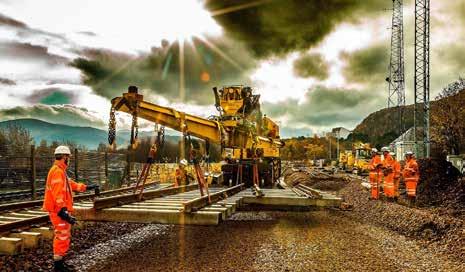
Qualifications
A qualification is a lifetime achievement that an engineer or technician holds indefinitely and requires no additional actions to maintain. A certification, or licence, is a competency-based achievement with an expiry date. To maintain their licence, an engineer or technician must be able to demonstrate continued competency in the area applicable to their licence. This can be demonstrated through recorded Continuous Professional Development (CPD) activities, relevant work experience, and periodic reassessment. If these requirements are not met, then an individual cannot get a new licence.
The UK’s railway signalling and telecoms industry is fortunate to have an excellent third-party, independently run, licensing system. The IRSE Licensing Scheme was established in 1994, following the inquiry into the Clapham Junction rail crash. The inquiry into the crash discovered that the fault lay with poor quality wiring changes, which led to an incorrect signal aspect and, ultimately, a collision. One of the recommendations from the inquiry was the creation of an independent certification scheme that could provide competence assurance of the signalling and telecoms staff undertaking safety critical and safety related work.
With over 50 different categories of licences, the IRSE Licensing Scheme provides confidence to employers and clients that licensed individuals can carry out work safely and deliver a product and/or service that meets quality and
FEATURE 40 Rail Engineer | Issue 198 | Sept-Oct 2022
PAUL DARLINGTON
regulatory requirements. The IRSE certification body is accredited by the United Kingdom Accreditation Service (UKAS) to ISO/IEC 17024, the international standard for personnel certification. The licences enable individuals to demonstrate quickly, and easily, their knowledge and/or competence in the specific area that they are licensed for.
Acquiring a licence
To obtain an IRSE licence, individuals will be assessed to check that they have the relevant skills and knowledge and are competent and safe to carry the licensable work. Each licence category has a Competence Assessment Checklist (CAC) and applicants will need to prepare a logbook containing evidence of their work experience, training, mentoring, and qualifications to cover the CAC.
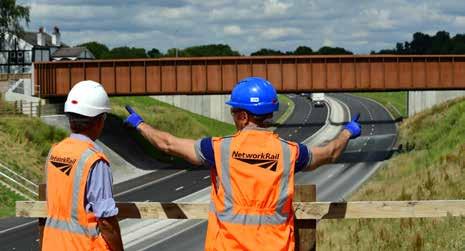

An approved Assessing Agency is then selected for the required licence category, which will assess the personal statement on the CAC. This will include examples of work, including when and where the work took place. It should describe the practice, not the theory − or what was done, not what should be done − along with evidence to support work carried out, such as photographs of work completed, work plans written, or designs produced.
The Assessing Agency will arrange a workplace assessment, where an independent assessor will observe the licensable work being carried out. They will then write up their assessment against each requirement on the CAC and complete an overall statement. A competence assessment will then be carried out, where another assessor will meet the applicant to discuss and question the logbook and the workplace assessment. They will write up their assessment against the criteria on the CAC and complete an overall statement. The application will then be received, checked, and logged by the IRSE and one of IRSE’s authorisers will review the application and decide whether to award the licence.
Complaints
There is also a complaints process. Complaints are normally made to the IRSE by a stakeholder such as an employer, client, or infrastructure manager, but they may be made by others. The IRSE will record the complaint on the licence holder’s record and instruct the licence holder to enter it in their logbook, pending investigation. The IRSE complaints sub-committee will consider the complaint and the evidence and decide if the complaint should be upheld and if the IRSE will revoke the licence category or licence. They also agree any remedial actions that the licence holder must take.
The IRSE Licensing Scheme may appear complex, costly, and ‘resource hungry’ to some, but the important point is that it is independently assessed to a thirdparty standard. This is not the case in other industries and an article in the IET’s E&T magazine identified that inadequate inspections on the safety of wiring in buildings across England are increasing the risk of fires. E&T said this has been made possible by an unchecked voluntary
competency assessment system that gives incompetent businesses “a veneer of respectability”.
A law first introduced in 2020 − following the Grenfell Tower disaster that resulted in the death of 78 residents, and which was initiated by an electrical fault in a fridge − requires that landlords must have an inspection known as an Electrical Installation Condition Report (EICR) carried out on their properties every five years. However, E&T found that many electricians were carrying out inadequate tests. In some cases, contractors are incorrectly passing unsafe properties while others are mis-selling unnecessary upgrades. E&T found evidence of ‘driveby inspections’, with contractors filling out paperwork without entering the properties at all to save on costs, cut corners, and undercut competitors. The regulations state that inspections must be carried out by a ‘qualified and competent person’ and the government suggests landlords and other businesses use electricians that are registered on competent body schemes. The two major schemes are NICEIC and NAPIT, which are paid for each report bearing their logo. However, these bodies do not independently assess every individual, instead each contractor has one ‘qualified supervisor’ who is assessed by the competency bodies to a standard known as the Electrotechnical Assessment Specification (EAS). The qualified supervisor is meant to ensure their employees are competent and adequately supervised for the work they undertake. In practice, E&T said it has learned this does not always
FEATURE 41 Rail Engineer | Issue 198 | Sept-Oct 2022
happen, with the qualified supervisors very overworked and with no independent checks.
From the employee point of view, an IRSE licence is an independent assessment of their ability to perform the tasks asked to the standards required. It demonstrates that, as an individual, they can complete certain activities as required and to the required standards. In addition, because the licence needs to be renewed at intervals it proves skills are current. That means the licence holder can offer their skills to other parts of the industry and develop their career.
Professional registration
Professional registration as a technician or engineer on the UK Engineering Council (EC) register is another way of demonstrating competency. The EC is the UK regulatory body for the engineering profession, and it holds the national registers for Engineering Technicians (EngTech), Incorporated Engineers (IEng), Chartered Engineers (CEng), and Information and Communications Technology Technicians (ICTTech).
Registration is an important milestone in an engineering career. It verifies that applicants can meet the engineering and technological requirements of the EC standard for registration (UK-SPEC4) and gives employers, government, and society confidence in the engineering industry. It also demonstrates that applicants have reached a standard of knowledge, understanding, and occupational competence, together with a commitment to professional standards, and to developing and enhancing their Continuing Professional Development (CPD).
To gain professional registration, applicants must first join a relevant

professional engineering institution licensed by the EC to assess candidates. In the rail industry this includes the IET, IMechE, ICE, IRSE, and PWI. Once applicants apply for professional registration, the institution will look at their qualifications, training, and experience, then advise which title they may be suitable to apply for and whether any further learning or experience is required.
To gain and maintain professional registration, applicants will need to record their professional development. This provides the body of evidence on qualifications, activities, and experience. The written application may vary depending on the requirements of the institution and, for IEng and CEng registration, a professional review interview is required. Once the institution has verified that the registration criteria is met, it will submit a registration recommendation form to the Engineering Council. Once this is verified the applicant will be added to the national register.
Once confirmed successful applicants can use their post-nominal letters to emphasise their professional status, and use the relevant registrant logo on business cards, email signature and stationery.
Recognised standards
Whichever title is gained, it assures employers, colleagues, customers, and society that the internationally recognised standards of engineering competence and commitment have been met. The EC also works closely with their international partners to ensure that the standards in the UK are globally recognised, which helps to facilitate the international mobility of registrants.
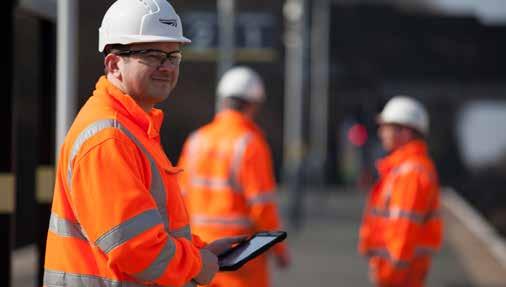
By becoming professionally registered, engineers and technicians make a commitment to maintaining their competence through CPD. Many of the institutions have systems for recording CPD and this includes the EC’s ‘mycareerpath’ system. The professional commitment also includes complying with an applicant’s institution’s Code of Conduct, and the EC provides guidance for registrants on sustainability, risk, and ethical principles.
The professional titles are protected under our Royal Charter. To remain on the national register and retain the right to use the post-nominal letters, registrants must ensure that their annual subscription fees for membership and registration are paid to their institution, and that they maintain and record their CPD. Professionally active registrants who persistently do not respond to or engage with requests for CPD records by the institution through which they registered risk removal from the register.
For the employer and line manager, licensing and professional registration provides an independent check to recognised external standards on the people they task to undertake safety critical and safety-related work. If things go horribly wrong, a manager may one day be in a court answering questions. These are likely to include how they comply with the law and ensure that the people working for them are competent. How would you answer that question?
FEATURE 42 Rail Engineer | Issue 198 | Sept-Oct 2022
The sustainable choice
Glass reinforced plastic (GRP) is far more environmentally friendly than most people realise. A material’s environmental impact relates to the entire value chain, from extracting the raw materials and the strain these activities put on the environment, to the transportation, production, further transport, assembly, and erection of the final product.
» Glass fibre production requires 75% less energy than steel production. The curing process is exothermic (gives off heat), which means the energy consumption per unit produced is extremely low.
» Glass fibre structures are 75% lighter than steel which means 50% less energy is required for transport and assembly.
» GRP’s CO2 equivalent is less than half that of concrete equivalents and approximately a third of the equivalent for steel.
» Very few harmful by-products are created during production - pultrusion takes place in a fully closed process that minimises the evaporation of volatile compounds.
» The production of basic resins and fibre rovings does not have the same negative environmental impact as that of metals such as steel or aluminium.
» The resin used to make GRP is derived from a by-product of refined crude oil.
» Due in part to the high-quality resins that are used, many GRP products have a service life of more than 50 years and even more than 100 years in some cases.
» GRP doesn’t require environmentally harmful finishing operations, such as hot-dip galvanising or painting (steel), or other preservation methods (such as those used for wood), in order to guarantee its service life.
100% recyclable
According to the European Composites Industry Association (EuCIA), GRP is 100% recyclable and can be reused in many different applications. GRP products can be professionally recycled to produce high-quality substitute fuels and reclaimed fibres. Furthermore, processed GRP waste


is a high-grade alternative for the cement industry where it is used both as a fuel and as a mineral raw material (SiO2).
Sustainability and environmental policy
At Step on Safety Ltd we recognise that our operations can have significant economic, environmental, and social impacts. We are committed to assessing sustainability risks and opportunities, and taking appropriate steps to mitigate negative impacts and enhance positive impacts for the benefit of our business, ,our stakeholders and the wider environment.
Step on Safety Ltd implements practices that promote environmental accountability and social responsibility and strives for continuous improvements in these areas.
Environmental protection
Step on Safety has integrated the consideration of environmental concerns and impacts into all our decision making and activities. We promote environmental awareness amongst our employees and encourage them to work in an environmentally responsible manner. We train, educate, and inform our employees about environmental issues that may affect their work.
Reducing carbon footprint
Where possible, Step on Safety installers are encouraged to travel to site via public transport or car share to reduce the level of pollution, Step on Safety vehicles have been fitted with trackers, so that we can plan and monitor the best routes. Prior to project commencement, Step on Safety provides a material management plan and delivery schedule to reduce onsite deliveries; as part of the material
management plan and delivery schedule
Step on Safety ensures deliveries have a sufficient volume of material. By setting a pre-construction target, Step on Safety minimises the volume of onsite cutting which reduces the need for a diesel generator. Where possible, plant hire will be electric and power tools will be battery operated.
Before materials are prepared, Step on Safety uses a 2D cutting calculator to ensure there is minimal wastage. Where off-cuts are produced, Step on Safety reuses the material to create, brackets, cleats, fishplates, structural stair treads, and packers.

Protecting the environment
Step on Safety avoids unnecessary use of hazardous materials and products, seeks substitutions when feasibl,e and takes all reasonable steps to protect human health and the environment. When such materials must be used, Step on Safety correctly stores and disposes of hazardous products.

As part of Step on Safety’s construction target, materials will be cut in-house at Step on Safety to reduce the volume of onsite cutting which will decrease the amount of GRP dust exposed to the environment.
Where cutting is necessary, GRP dust and waste is collected in M-Class vacuums and extractors.
Rail Engineer | Issue 198 | Sept-Oct 2022 43 SUSTAINABILITY & ENVIRONMENT
RSSB’s Rail Carbon Tool enables the rail industry to calculate and analyse the carbon footprints of UK rail projects and activities, select low carbon solutions, and help reduce the industry’s carbon footprint.

Guidance for RSSB’s Rail Carbon Tool has been improved in ways that restrict some user choices. Although this might sound unhelpful, it is actually a very good idea both for individual projects and the rail industry to help increase accuracy and consistency across the whole rail sector.

Existing users of the Rail Carbon Tool may be familiar with the way the layout of its carbon assessment used to be left to the individual user and their own preferences. This meant that individual users could decide the scale and type of carbon assessment scopes to include in their use of the tool. If an individual user didn’t want or need to record, for example, transport, construction, whole life, or end of life impacts within the scope of their use, they didn’t have to.
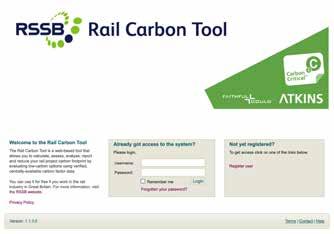
The overall effects of this are a reduced ability of managers to argue the business case for carbon reduction projects, and an unnecessary underestimation of the railway’s current and potential ability to deliver on the Net Zero carbon agenda. The guidance for using the tool has been improved so that the rail industry can increase its actions to reduce carbon emissions on projects.
Limiting tool choices increases railway performance
So, what are the recent changes to the guidance for using the tool, and how do they help individual projects and the railway overall?
First, standard project templates and project naming conventions promote a more consistent format for all assessments across the industry. This enables the development of a whole-industry perspective as well as allowing meaningful carbon comparisons to be made between different parts of the railway.
This is all well and good for an early-stage tool, but it has very significant limitations for both carbon reduction and railway finance. It means that there are many inconsistencies in the ways different projects from different parts of the railway industry have used the tool previously. It is then impossible to capture all the carbon-reducing impacts the railway is actually implementing because only some are being recorded and very few are being shared. It also means that areas for carbon reduction that could, and should, be targeted for action are being needlessly ignored.
Second, and perhaps most importantly, projects will now confirm their carbon assessment scope based on their scale or type, rather than what they feel might be required or appropriate. This ensures that users of the Rail Carbon Tool consistently report carbon metrics across the industry and include whole life cycle impacts aligned to PAS 2080, the BSI developed standard for managing carbon in the built environment. Alignment to PAS 2080 is important because it is a global standard for managing infrastructure carbon and has been authored to meet World Trade Organization requirements.
There can be some welcome surprises in doing this. For instance, Amey used the Rail Carbon Tool in the Kentish Town Track Stabilisation project between December 2021 and January 2022. The tool was used in two ways: as an optioneering tool for the design phase and as a way of tracking carbon during the construction phase. This ensured the project was in line with PAS 2080 and Amey’s commitment to Net Zero by 2040.
Rail Engineer | Issue 198 | Sept-Oct 2022 44 SUSTAINABILITY & ENVIRONMENT
Screenshot of the Rail Carbon Tool's login page.
Making a step change with improved guidance for the
Rail Carbon Tool
The scope of the carbon assessment included the following components:
» Materials (embodied carbon)
» Materials (travel: gate to site)
» Waste (embodied carbon and travel)
» Plant & Equipment (fuel use onsite)
» Plant & Equipment (travel: depot to site)
» Employees (travel)
Amey used varying design and construction methodologies from the Rail Carbon Tool to achieve carbon reductions during each phase of the project. Overall, a total of 14 ‘carbon interventions’ were undertaken over the design and construction phases to reduce carbon. By including the above six components within the scope, the Kentish Town project reduced total project CO2e by 32.36% relative to the original design and construction methodology.
Carbon reductions can also be seen when looking at parts of the project. For instance, focusing on transport, they found that the transport of plant to and from the site accounted for 17% of total project CO2e. This could have been reduced to just 8% of total project CO2e, if all plant had been sourced within a 50km radius of the project. This shows that, even without highly complex technological changes, significant reductions in carbon can be made.
Finally, Network Rail security groups are now providing sight and access to project carbon data. Although this does add security requirements to provide key Network Rail contacts with visibility of relevant project assessments, it will better support carbon review, interpretation, and benchmarking across the industry. This helps
optimise the benefits that individual projects and the rail industry can gain from the Rail Carbon Tool and drive a step change in carbon reduction throughout the rail industry.
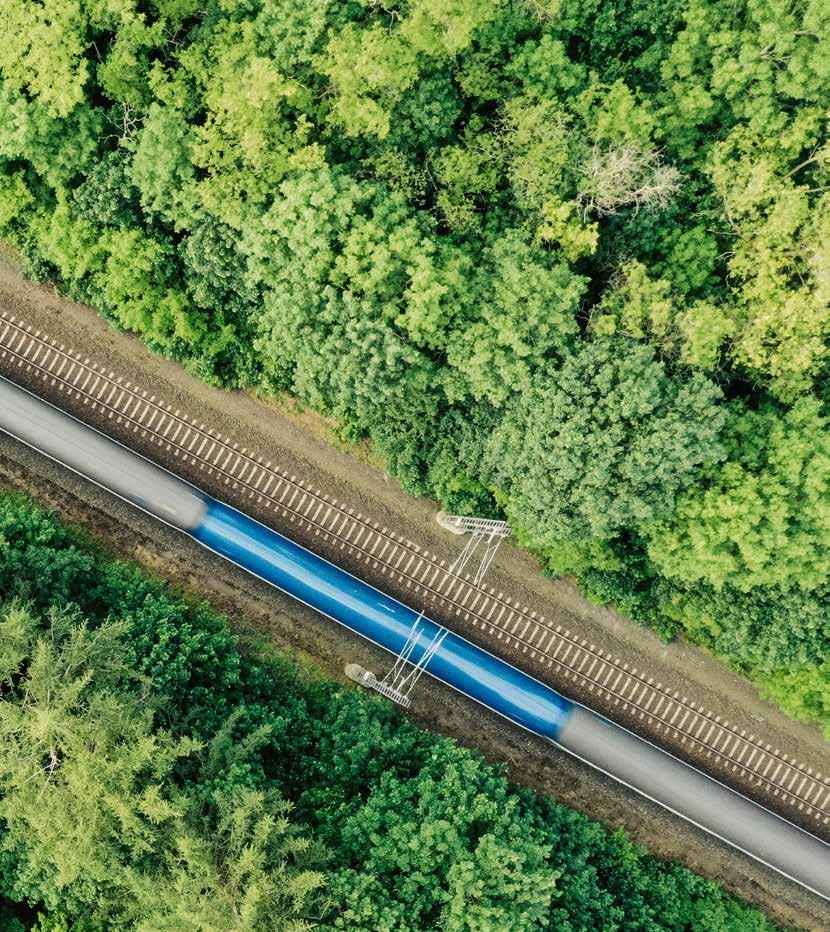
RSSB training
Using RSSB’s Rail Carbon Tool effectively can really help organisations find ways to reduce carbon emissions during each phase of a project. RSSB offers a six-hour training course (split into two three-hour sessions within the same week) which has been attended by hundreds of delegates from companies across the UK rail industry. The main aim of the course is to provide delegates with the knowledge to use the tool aligned to the requirements of the guidance.
If you’re interested in training on how to use the Rail Carbon Tool to realise its carbon reduction and financial benefits, contact the Training team at training@rssb.co.uk or (+44) 020 3142 5418.
Rail Engineer | Issue 198 | Sept-Oct 2022 45 SUSTAINABILITY & ENVIRONMENT
Renewables
non-traction energy
FOR NETWORK RAIL

In August, Network Rail announced a solar power agreement with EDF Renewables UK to make the railway cleaner and greener. The agreement will see Network Rail take the entire 49.9MW output of the new 200-acre solar farm at Bloy’s Grove.

Located between the villages of Swainsthorpe and Mulbarton, just south of Norwich and alongside the Norwich to London main line, Bloy’s Grove will be one of the largest solar farms in the UK when it’s construction is complete.

The agreement is part of Network Rail’s Journey to a Zero Carbon and Sustainable Railway. Network Rail’s 30 year ‘Environmental Sustainability Strategy’ has four key objectives: (i) providing a low-emission railway; (ii) climate change resilience; (iii) improved biodiversity; and (iv) sustainable materials with minimal waste.
The Strategy’s energy vision is to serve the nation with the cleanest, greenest form of public transport. This includes a challenging sustainability objective of net zero carbon emissions by 2050 (and 2045 in Scotland) with a 25% reduction by the end of the current CP6. This will deliver continual improvements to air quality so that passengers, neighbours, and employees breathe healthier air.

First of its kind
Reduced emissions are to be achieved through the increased use of electric traction, wide adoption of electric vehicles, an element of offsetting through planting of trees, and through the procurement of carbon neutral electricity. For traction current this will be primarily from nuclear sources. The Strategy aims for 100% of non-traction energy to come from renewables by 2030. The new Bloy’s Grove solar farm will provide around 15% of Network Rail’s current national non-traction energy consumption that will power its stations, offices, and depots across the country.
Rail Engineer | Issue 198 | Sept-Oct 2022 46 SUSTAINABILITY & ENVIRONMENT
BOB WRIGHT
Jo Lewington, chief environment and sustainability officer at Network Rail, said: “Rail is already in a strong position in terms of its green credentials but it’s crucial that we do everything we can as a business to improve air quality, minimise our use of fossil fuels, and transition to an industry powered by green, renewable, lowcarbon energy.”
She described the agreement as a “first of its kind, a huge moment not just for Network Rail but the rail industry as a whole.”
Local benefits
Bloys Grove is one of seven 50MW projects that EDF is developing across the UK. Matthieu Hue, chief executive of EDF Renewables UK, explained that “renewable technologies are key to decarbonising the UK’s electricity system, and the Bloys Grove project shows the ability of EDF Renewables UK to provide diverse renewables solutions for customers”.
The Bloy’s Grove project is expected to save around 14,000 tonnes of carbon dioxide emissions each year. As well as making a substantial contribution to the low emission railway objective, the project will also support the objective of improving biodiversity of plants and wildlife. As part of the build, EDF
Renewables UK will improve habitats for plants and insects, plant and maintain trees and hedges, and create wildflower and grass meadows throughout the 200-acre site.
The project, led by Network Rail's Decarbonisation Programme, will also deliver significant additional local benefits, with an annual community fund of £20,000 throughout its 35-year lifetime. A community fruit orchard on the edge of the site will become the focus of annual harvesting days managed by EDF’s community team.

The project will be constructed and completed during 2024 and will provide zero-emission, solar generated energy supporting Network Rail’s non-traction needs until 2059.
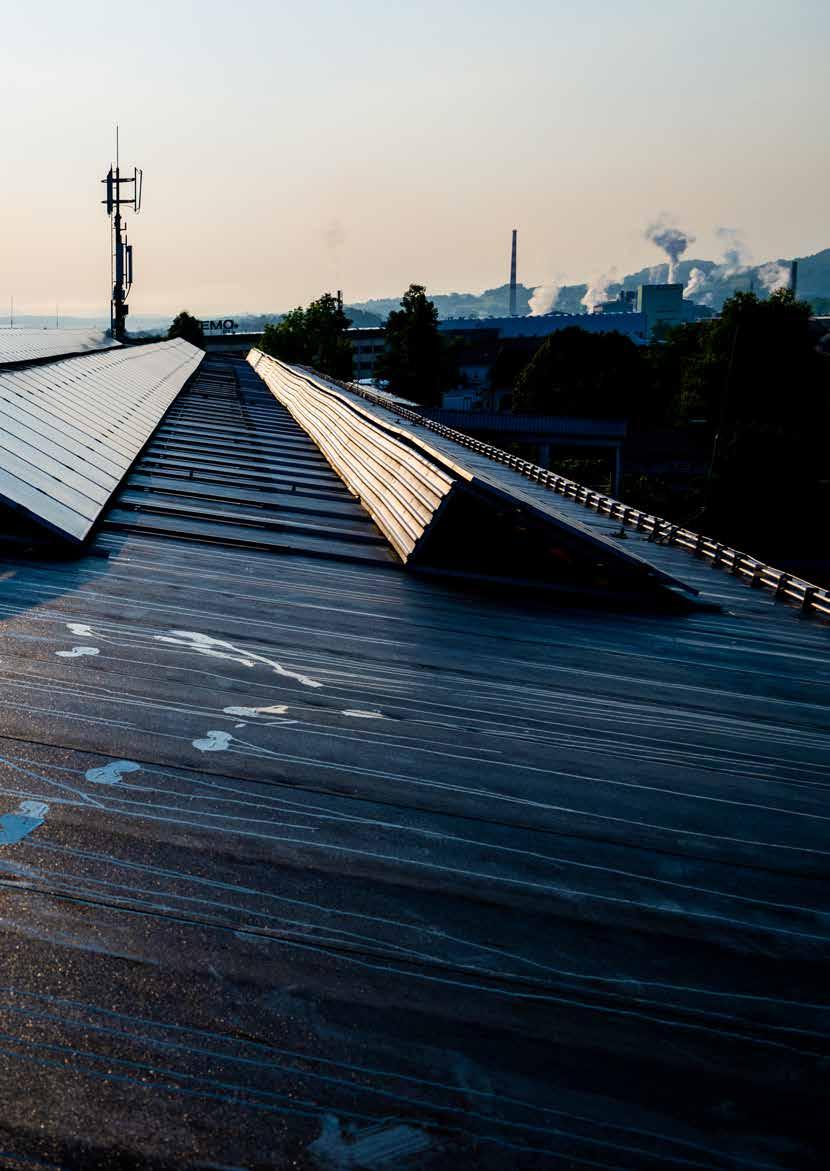
Rail Engineer | Issue 198 | Sept-Oct 2022 47 SUSTAINABILITY & ENVIRONMENT
Scotland’s hydrogen train
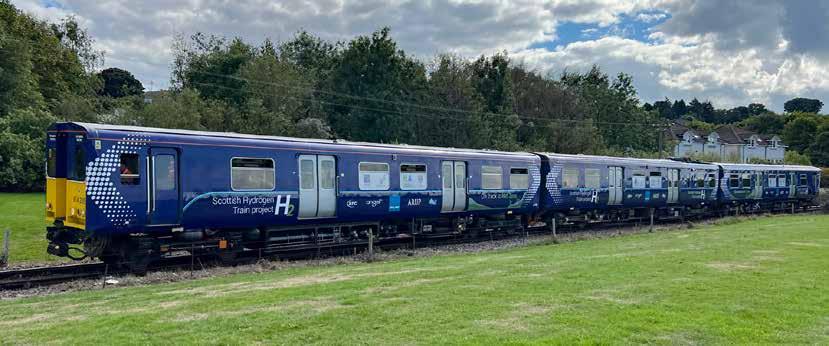
SUPPORTING THE HYDROGEN ECONOMY
Scotland’s Rail Services Decarbonisation Action Plan details how rail passenger services will be decarbonised by 2035. By then, the aim is for all core routes to be electrified with services on the remaining less-intensively used routes powered by either battery or hydrogen powered traction.
For some, Hydrogen trains are an unnecessary distraction. They are considered to be inefficient and more expensive to operate than battery trains and require complex novel fuelling arrangements.
Such views, however, do not take account of the need to develop a hydrogen economy which will be required if the necessary transition from fossil fuels is to be achieved. In issue 193 (NovDec 2021), Rail Engineer reported on the COP26 hydrogen transition summit. This explained why hydrogen is essential for a low carbon economy as it is the only way to decarbonise things that cannot be directly electrified such as ships, steel production, and heavy mobility. In addition, it can provide grid balancing for renewable power.
The Scottish Government’s Hydrogen Action Plan aims to produce 800,000 tonnes of hydrogen per annum by 2030. This equates to 27 TWh or 17% of Scotland current energy demand. The plan considers that, by 2045, a strong hydrogen sector in Scotland could support up to 300,000 jobs, many of which could use the skills of those displaced from the oil and gas industries. As part of this plan, £100 million has been committed to develop the hydrogen economy over the next five years.
The Hydrogen Accelerator (HA) at the University of St Andrews was formed to support the delivery of hydrogen technology innovations through collaboration between relevant Scottish institutions. It also aims to develop expertise to support transport applications, one of which is Scotland’s Hydrogen train. Hence, in partnership with Transport Scotland and Scottish Enterprise, HA is responsible for the project to convert a surplus ScotRail Class 314 unit into a hydrogen train demonstrator.
HA’s director, Gerry Agnew, believes the hydrogen train project will provide the understanding and knowledge to make hydrogen-powered rail a reality in the not-toodistant future. He also advised Rail Engineer that he considered hydrogen could be produced by the surplus output from Scotland’s wind generation capacity that the national grid is unable to accept.

More than a train

The above provides the context for the Scotland’s Hydrogen train and explains why this project is about much more than a train. This is also shown by the project’s objectives which are:
1. Proving that Scotland can modify rolling stock to install a hydrogen drive train.
2. Working with the regulatory bodies to develop the necessary standards for the use of hydrogen powered passenger rolling stock.
3. Informing rail policy on the application of hydrogen train technology on the Scottish rail network.
4. Demonstrating to Scotland’s rail community, the practical application of hydrogen fuel cell electric passenger rolling stock.
5. Providing Scotland’s supply chain with the opportunity to develop its skills and knowledge to apply to hydrogen fuel cell electric technologies on passenger rolling stock and understand the issues relating to hydrogen supply and refuelling infrastructure.
6. Providing educational institutions with the opportunity to research the practical application of hydrogen fuel cell electric technologies within the rail industry.
Rail Engineer | Issue 198 | Sept-Oct 2022 48 SUSTAINABILITY & ENVIRONMENT
DAVID SHIRRES
As described in issue 188 (Jan-Feb 2021), HA let the £2.7 million contract for this project in December 2020 to an industry consortium led by Arcola Energy working with partners Arup, Abbott Risk Consulting, and Aegis. Arcola Energy was subsequently taken over by Ballard Power Systems in November 2021 to become Ballard Motive Solutions.
Following the contract award, the surplus Class 314 unit was immediately moved from Yoker Depot to the Bo’ness and Kinneil heritage railway for its conversion at the railway’s Bo’ness workshops.
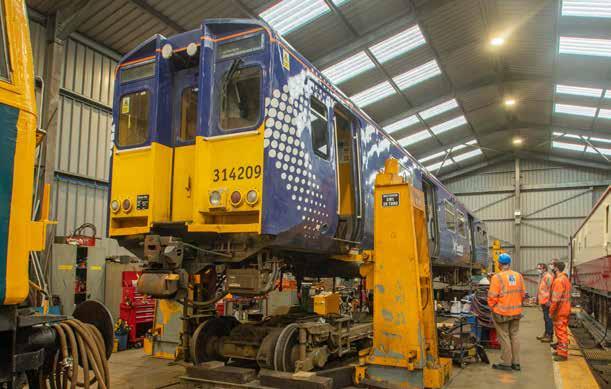
As well as the work at Bo’ness, the fuel cell, battery, and hydrogen storage rafts were assembled and tested at the Michelin Scotland Innovation Parc (MSIP) in Dundee. MSIP is to be a skills and innovation hub for industry and academia to collaborate on sustainable mobility, clean transport, and low-carbon energy. It is the site of a tyre factory which closed in 2018. A year later, a £60 million package, funded by Michelin, Scottish Enterprise, and Dundee City Council, to develop MSIP was announced. In 2021, further funding was allocated
to
vehicle hydrogen and battery electric powertrains.
Arcola was one of the first companies to move into MSIP. AMTE Power, one of the only companies in the UK to manufacture battery cells, also recently selected MSIP as its preferred site for a new factory as part of its strategy to rapidly scale up production.
During COP26, an exhibition at Bo’ness was attended by 398 visitors. This featured the components that were to be installed on the train together with the refuelling plant as well as a bin lorry and construction lighting tower that were both powered by hydrogen.
After delays due to Covid and material shortages, testing of the train started in mid-August. Shortly afterwards a ‘Future Vision Workshop’ was held at Bo’ness to demonstrate the train’s technology and its hydrogen refuelling facility. This involved key stakeholders and considered how hydrogen trains can help accelerate Scotland’s hydrogen economy and create opportunities in supply chain, innovation, high value jobs, and skills development.
314 into 614
The 3-car Class 314 EMU consists of two Driving Motor Standard Open (DMSO) cars at each end of the unit and a Pantograph Trailer Second Open (PTSO) car in the middle. The conversion involved the removal of all
The difference in size between the old DC and new permanent magnet AC traction motors is evident at the Bo’ness COP26 exhibition.
Conversion work at the Bo’ness workshop.
 create LOCATE (Low Carbon Transport Applications Centre) at MSIP. This will support the development and testing of heavy-duty
create LOCATE (Low Carbon Transport Applications Centre) at MSIP. This will support the development and testing of heavy-duty
Rail Engineer | Issue 198 | Sept-Oct 2022 49 SUSTAINABILITY & ENVIRONMENT
There is little difference after the conversion as far as the driver is concerned.
the traction equipment, including the traction motor but excluding the pantograph. All items removed and the new equipment fitted were weighed to confirm that there was no significant difference in weight between the original and the converted unit.


The table shows additional equipment added and original equipment retained for each vehicle.
Following the conversion, unit 314209 became 614209 as the Class 6xx designation is for units with alternative traction.
Details of the main components are as follows:
» Fuel Cell Raft – each has a 70kW Ballard FCmove fuel cell designed to meet EMC requirements. It has a cooling system which uses the fuel cell waste heat to heat passenger compartments.
» Hydrogen tank raft – each stores 40kg of hydrogen at 350 bar in six cylinders formed of an aluminium

refuelled in 20 minutes and have leak detection sensors.
» Battery raft – each has 4 x 16kWh Lithium Titanate batteries.
» High voltage power distribution unit (HVPDU) – this supplies DC current to an inverter which feeds the AC traction motors. The HVPDU manages the current flow from the fuel cell and battery as well as the current from the fuel cell to charge the battery. It does so in a manner that maximises efficiency and performance and can provide 350kW peak power.
» Traction Motor – the Dana TM4 motor is a permanent magnet 3-phase AC motor which is manufactured at scale for automotive industry resulting in lower costs. It has a continuous and maximum power of 176kW and 215kW.
Dr Ben Todd, CEO of Ballard Motive Solutions, considers that delivering a converted hydrogen-powered train in a live rail environment is “a best-practice example of

Rail Engineer | Issue 198 | Sept-Oct 2022 50 SUSTAINABILITY & ENVIRONMENT
(Above) Hydrogen tank raft with refuelling pipe. And Dana motor used in a typical automotive drive.
Safety and Certification
The arrangement of the power train components keeps them away from the passenger saloon and does not require a hydrogen connection between vehicles. Hydrogen storage is also separated from potential ignition sources. Yet, the underframe mounted components pose a certification challenge in respect of derailments and objects on the track.
There are risks with storing large amounts of energy on a train be it in a diesel tank, battery, or hydrogen tank. In this respect, hydrogen is arguably safer than diesel which can be atomised in a crash. Being lighter than air, hydrogen rapidly disperses in the event of a leak. This also makes it safer for those on site immediately after an incident. However, a hydrogen / air mixture can be explosive in confined spaces such as tunnels for which special precautions are required, such as avoiding venting.
Scotland’s Class 614 Hydrogen train will not be certified for main line operation as there are significant certification costs for just one train and much can be learnt from its operation on the steeply graded Bo’ness and Kinneil Railway. Nevertheless, the train had to have an independently validated safety case before it was allowed to run on this railway.
One aspect that is being considered is the extent to which open standards in other sectors can be used to certify rail vehicles for operation. In the automotive sector, vendors produce components to such open standards for safety critical applications such as brakes and steering. This approach offers benefits beyond hydrogen trains, as it would allow new technology from other sectors to be used at lower cost.
Hydrogen refuelling station
To consider the practicalities of producing hydrogen and fuelling hydrogen trains, a refuelling station has been installed at Bo’ness. This was funded by Angel trains which announced its support for the Scottish hydrogen

train consortium in May 2021. It has a 70-kW electrolyser which can produce one kilogramme of vehicle-grade hydrogen per hour at 30 bar. A booster compressor powered by compressed air then compresses the hydrogen to 500 bar for storage in six stainless steel tanks supplied by Chesterfield Special Cylinders. These tanks store a total of 210 kilogrammes of hydrogen. The applicable regulations require an eightmetre exclusion zone within which there can be no sources of ignition (e.g., portable electrical equipment).
As refuelling is only possible if the storage cylinder’s pressure exceeds the pressure in the train’s hydrogen tanks, the storage tanks cannot be fully emptied. Once the pressure in the cylinder has dropped to just above 350 bar, the train is then fuelled from another cylinder. The 35kg of hydrogen in a single cylinder compares with 40kg in a single storage raft.
In this way the train can be fuelled with hydrogen in 20 minutes. The dispenser panel has two hoses, one for fuelling the vehicle and one for emptying the train’s hydrogen tank as required.

Currently 97% of Scotland’s gross electricity consumption is from renewables. Hence it would seem that Scotland’s hydrogen train is the first in the UK to be powered by green hydrogen.
Lessons to be learnt
As well as supporting the development of a hydrogen economy, experience from the Scottish hydrogen train will inform the acquisition, certification, and operation of future hydrogen trains. This supports decisions on whether to purchase new or modify existing trains, how to modify existing trains, technology transfer from other sectors, use of open standards, how depots should be supplied with hydrogen, and the future deployment strategy.
(Left) The Bo’ness Electrolyser. (Right) Hydrogen storage at Bo’ness.
Rail Engineer | Issue 198 | Sept-Oct 2022 51 SUSTAINABILITY & ENVIRONMENT
The project has also shown that the Scottish supply chain has the capability to convert an existing train into a hydrogen train. However, it has highlighted significant issues. For example, older trains may not have sufficient life to justify new investment and don’t meet modern standards for crashworthiness and persons of reduced mobility. Although older trains have simpler interfaces, their hardware is less compatible with new equipment. Newer trains have more compatible hardware, yet their complex proprietary interfaces involve huge costs without support from the original manufacturer.
Despite these problems, the use of existing trains saves the embodied carbon of making a new train and may be more feasible for low production runs. From the work done on the hydrogen train project, it is estimated that the procurement of a new build would be prohibitive for a production run of less than 20, unless this was part of an existing build.
For converted EMUs and DMUs, cost becomes prohibitive at respectively less than five and ten trains. EMUs have lower cost conversions if their motors can be retained. DMU conversions require a new expensive motor coupled to the drive shaft and have space constraints which could prove expensive.
If units are to be converted, options for hydrogen storage are below solebar if there is space, and within the car body separated from passengers which limits passenger space and restricts movement through the train. For converted trains, roof storage is not possible within the UK gauge. However, this may be possible with the flexibility of a new-build as shown at COP26, when Alstom announced a new UK hydrogen train concept using their Aventra platform with roof-mounted hydrogen tanks.
Converted trains offer no benefit as far as safety certification is concerned as almost everything gets modified so little can be grandfathered from old designs. The challenge of certifying hydrogen trains is that, for rail, this is a new technology, although in other sectors, its safe production, transport, and storage is well understood. As previously mentioned, if the use of open standards can be accepted, technology transfer from other sectors could be accelerated. Indeed, the hydrogen drive train in the Class 314, including the permanent magnet AC motor, is the A-drive developed by Arcola which is being used on Glasgow’s hydrogen bin lorries.
The strategy for the supply of hydrogen to trains and road vehicles must balance the low cost of hydrogen from large production sites against the cost of its transportation.
A pilot project in Aberdeen supplied a fleet of 10 hydrogen buses from a 1MW electrolyser at a Council depot. A fleet of 10 hydrogen trains would require an electrolyser of about 10MW which could be built at a depot if there was sufficient land.

An electrolyser twice this size is being built at the 539MW Whitelee wind farm south of Glasgow. When this starts to produce green hydrogen in 2023, it will be Britain’s largest hydrogen facility able to produce 8 tonnes of hydrogen a day. It will be powered by a 40MW solar farm and 50MW battery. Rail Engineer was advised that the cost of hydrogen produced from off-grid electricity by this large plant will be about half that of smaller facilities.
However, transporting hydrogen from this plant is not cheap. Unless an expensive pipeline can be justified, the only other option is by road on a hydrogen tube trailer which carries about one tonne of hydrogen which is 130 billion Joules of energy. In contrast, a diesel tanker carries typically 40,000 litres of diesel which is 1,800 billion Joules.
Hydrogen bus refuelling station at Aberdeen.
Rail Engineer | Issue 198 | Sept-Oct 2022 52 SUSTAINABILITY & ENVIRONMENT
PHOTO: ABERDEEN CITY COUNCIL
Hence, if hydrogen was not produced on site, a depot with a hydrogen train fleet would require 14 times as many road tanker deliveries than one with the same-sized diesel fleet to fuel their trains.
This illustrates the nature of the trade-off between cheaper hydrogen production from remote large plants and the cost of its production.


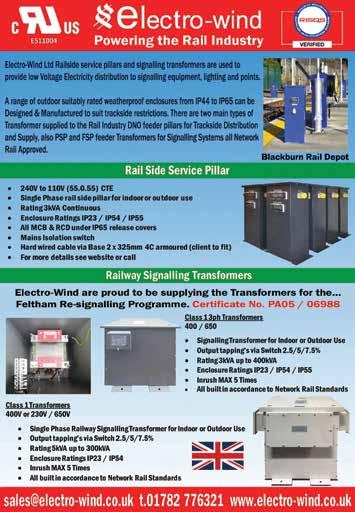
What next?









Scotland’s hydrogen train deployment strategy is currently being evaluated taking account of the experience of the Class 614 project.
The current indicative aspiration is for main line trials in 2024, trial passenger services in 2025, and regular passenger services in 2027. However, much has to be done to firm up this timescale. By not specifying the type of alternative traction on non-electrified lines, Scotland’s Rail Service Decarbonisation Action Plan recognises that it is too early to
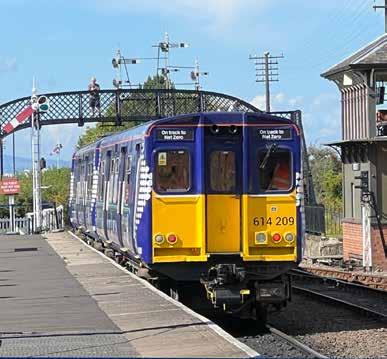
definitively say whether battery or hydrogen traction is the best solution. Hence, battery trains might eventually be Scotland’s preferred alternative traction solution.
Nevertheless, Scotland is right to invest in its hydrogen train project. Even if there were to be no hydrogen trains, the project is supporting the developing hydrogen economy and will help ensure that informed decisions are made. If Scotland is to have hydrogen trains, the decision on whether they will be a new build or conversions will also be informed by the Class 614 project.
And what of the future of the Class 614 unit? By the end of the year, it will have served its purpose, yet it would be unfortunate if it were scrapped. Perhaps it could still have a role in demonstrating a hydrogen train to the public by offering passenger trips on the Bo’ness railway. Though safety approval of such a service might not be
easy, it may help gain public acceptance and awareness of the importance of a new hydrogen economy.
When I rode on the train, I enjoyed the new experience of travelling on a quiet, nonelectrified train. Perhaps others could be similarly impressed.
Hydrogen train leaving Bo’ness station.
www.rail-media.com Subscribe to our free publications at www.railsubs.com Rail Engineer | Issue 198 | Sept-Oct 2022 53 SUSTAINABILITY & ENVIRONMENT
DAVID FENNER
Progress and delay for

The East West Rail scheme is a project originally intended to link the three major centres of Oxford, Milton Keynes, and Cambridge, sometimes known as the technology arc, in south-east England.
When completed, it will replicate and enlarge the catchment area of the old Varsity Line closed as a through route in 1968, with various sections having different fates. In summary, the section from Oxford to Bicester reopened as a shuttle passenger service in 1987 and the section from Bicester to Bletchley remained in use for occasional freight traffic but was eventually largely mothballed.
The section from Bletchley to Bedford initially remained open for freight due to the extensive brick workings and subsequent landfill opportunities, but also with a passenger service which is best described as low quality, often being replaced by buses.
Finally, the section from Bedford to Cambridge was disposed of and significant sections reused. For example, for Cambridge University’s Mullard travelling radio telescope, as part of the
Cambridge guided busway, and for housing.
During the second world war, the route was seen as strategically important because it provided a route across the southern part of England at sufficient distance from London to provide a robust alternative.
In the early 2010’s, the potential for economic growth along the line was established. From a railway perspective, an early advocate was Chiltern Railways which saw opportunities in providing a short link at Bicester with other track upgrades, thus providing a regular Oxford to London Marylebone train service which started in 2016. In the meantime, both local and national government began to fully appreciate the economic opportunities along the route and looked at the enhancement of transport links both road and rail. Hence the birth of East West Rail.
Original plans

The initial plan for East West Rail was to rebuild the original route between Bicester and Bletchley, upgrade the route from Bletchley to Bedford, and to evaluate a number of options in terms of new routes between Bedford and Cambridge, with the aim of giving best journey times of around 90 minutes between Oxford and Cambridge.
Consideration was also given to using another largely disused rail route to provide services from Aylesbury to Milton Keynes. The plan included electrification of the route and the objective was to connect people and places enhancing the employment opportunities along the line. The existence of good travel options would also allow for greater development in terms of housing and employment along the route.
The 2021 consultation indicated a service pattern of two trains per hour from Oxford to Milton Keynes and a further two trains per hour from Oxford, initially to Bedford extending to Cambridge when


FEATURE 54 Rail Engineer | Issue 198 | Sept-Oct 2022
the route was available. In addition, there would be a further two trains per hour from Bletchley to Cambridge. Freight is not excluded but isn’t a prime focus, fundamentally because rail freight is market led in the UK.

Work in progress
So, what is the current situation? Electrification with the rebuilding was abandoned some time ago partly as a result of the overspend on the Great Western route which was used by the then Minister for Transport as a reason to abort or curtail several electrification proposals. Yet electrifying a route as it is built is far less expensive than for an existing railway. Former Transport Minister Grant Shapps justified this by stating that ‘we’re building it in such a way that we can use, probably, the very latest technology’. This statement shows a lack of awareness of the inherent disadvantages of selfpowered traction which makes electrification a future proofed technology.
In addition, the construction of HS2 affects the route from Aylesbury which is, at least at present, no longer part of the plan.
Considerable work is in progress on the western end of the route. Although not specifically part of East West Rail, there is a current project at Oxford worth around £160 million to provide improved junctions north of the station, an additional platform face, and a
new west side entrance to the station which will help ensure Oxford is able to handle expanded traffic both passenger and freight.
In terms of East West Rail, substantial work is in progress between Bicester and Bletchley with a new bridge under construction at the intersection of the EWR line and HS2. This incidentally is the proposed location of a HS2 infrastructure maintenance depot, so the ability to bring material by rail would perhaps be a bonus.

01457 869999 PELIPRODUCTS.CO.UK Rail Engineer half page july aug 2021 190 x 130mm.indd 1 06/08/2021 06:46:47 Rail Engineer | Issue 198 | Sept-Oct 2022 FEATURE 55
A new station is under construction at Winslow and track is being relayed, working outward from both Bicester and Bletchley, as the renovation of the formation is completed. Whilst electrification work is not progressing, the reconstruction is being conducted to be electrification ready, so clearances and parapets are being modified where necessary. The aim is for the Oxford to Milton Keynes section to be ready for train service introduction in 2025 using existing self-powered (that is, diesel) multiple units despite Government commitment to withdraw diesel passenger traction by 2040.
Next stage
The consultation in 2021 was primarily concerned with the route east of Bletchley. The next stage of the formal consultation has not yet started and consequently no physical work is yet in progress. Clearly, the route east of Bletchley is challenging both in terms of upgrading the existing Marston Vale line to Bedford and the building of a new line onward to Cambridge.
It is 16 miles on the Marston Vale line from Bletchley to Bedford in which are packed 10 stations, 15 vehicular level crossings, and a further 16 other level crossings, mainly footpaths. Of the 15 vehicle crossings, nine are CCTV controlled, three are AHB, and three are user worked. With a desire to lift the linespeed from 60mph to 100mph, the level crossing risk will rise significantly requiring substantial rationalisation. Similarly, with 10 stations the transit time of a stopping service and a commercially competitive fast train is likely to prove challenging to timetable.
The consultation addressed both these issues, offering two options in terms of the stations: either merge some station pairs at new intermediate locations and stop all trains, or relocate Woburn Sands station and provide passing loops at the new station. The cost of these upgrades will be significant, and the method of working could have a significant impact on the service provided during the works. Will there be a prolonged closure with bus replacement, or can the work be done with the minimum of disruption?
Challenges
Bedford presents its own challenges. The approach is on a tight curve currently limited to 15mph and on which stands the single platform St Johns station. This is located near the hospital so is in a useful catchment area. The plan is to realign the route to provide two tracks with a 30mph speed limit and a new station. The track then weaves between two sets of stabling sidings for Thameslink trains before arriving at Bedford Midland. Bedford Midland itself is a difficult station. There is no platform on the up fast line, so all up trains from Corby or the East Midlands calling at Bedford need to be diverted to the up slow and use one of the three platforms otherwise used by terminating Thameslink trains.
Network Rail has its own proposals to provide a platform for the up fast trains and this was reflected together with two new platforms for EWR services in the consultation.
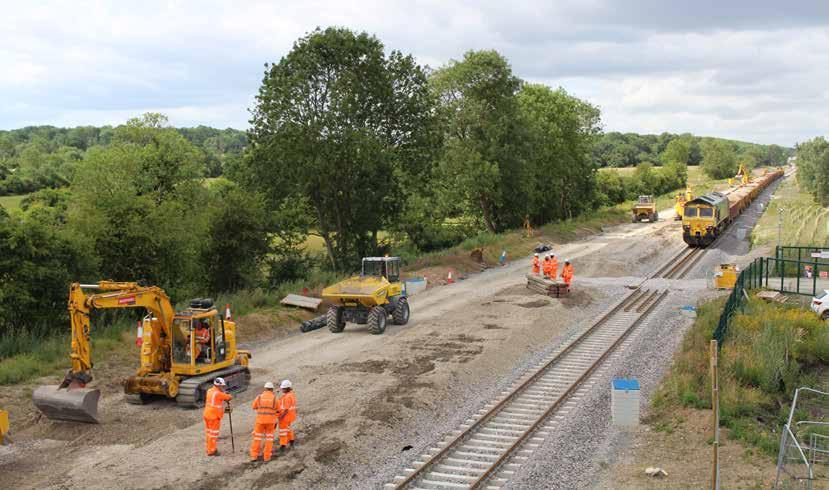
East of Bedford, the challenges get even bigger. The original Varsity route actually bypassed Bedford town to the south and continued to Sandy but sections have now been redeveloped so a new route would be required. In addition, reversing the train at Bedford would make achieving the anticipated journey time challenging so departure northwards from Bedford would be a preferred option. The consultation proposed such a route departing northwards towards Clapham before swinging northeast.
There were then several different route options crossing the East Coast Mainline either in the Tempsford area or somewhere just south of St. Neots, with an interchange station between the ECML and EWR whichever option is chosen.
Earlier consultation had suggested that routes
FEATURE 56 Rail Engineer | Issue 198 | Sept-Oct 2022
in proximity to the current main roads - the A421 and A428 - would be preferred and indeed the proposed options do that as far as Cambourne, a recently built town in South Cambridgeshire where a new station is proposed. Beyond Cambourne the routes merge and head south east past Haslingfield, not far from the Mullard telescope, to join the current Kings Cross to Cambridge route at Harston.
Objections
Upgrading of the route from Shepreth Branch Junction to Cambridge to four tracks was the last part of the proposals. This routing enables trains to enter Cambridge from the south to call at the new station at the Cambridge Biomedical campus and gives opportunities to continue north towards Ely, Norwich, Peterborough and even Ipswich via Bury St Edmunds subject to a tight curve, any of which may be useful to potential freight traffic. Not surprisingly, the consultation threw up objections. In particular the proposals suggested separate tracks heading north out of Bedford which would require the demolition of several houses close to the current railway. The section from Cambourne in to Cambridge also met with significant objections as well as an argument for the route to serve another recent and continuing development at Northstowe requiring the line to arrive in Cambridge from the north. Arriving from the north was discussed as part of the documentation presented
during the consultation which looked at the challenges this created. Several details of the final approach and platforming at Cambridge were left open meaning further work is expected.
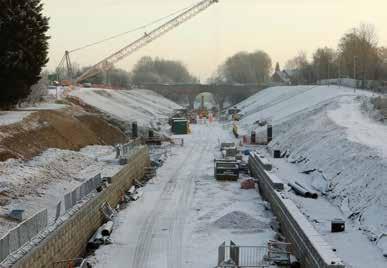
Whilst separation of services at Bedford station is understandable from a train service perspective, the additional tracks north of the station are perhaps debateable assuming a suitable track geometry can be developed before Bromfield Road bridge around 300 metres north of the station. With Thameslink services terminating at Bedford, the slow lines north of the station largely handle freight traffic and should be able to cope with the proposed EWR services over the short distance to Clapham, especially if a platform on the up fast is provided.
However, from a railway operating perspective entry to Cambridge from the south is definitely the more flexible option. The challenge is that the objectors’ alternative was fairly well-argued and robustly developed.

Political appetite
The major question is what is the current political will around the next stage of development of EWR? The effects of the pandemic, together with the current spike in inflation and energy costs, suggest that transport funding, especially for rail, could be heavily restricted for some time. The objections raised by the consultation may also have influenced local political aims. Finally, the previous Secretary of State for
Transport, Grant Shapps, made at least one statement indicating he was minded not to support further construction work on EWR, contrary to comments made in documents supporting the green agenda and the need to move to active and public transport.
One therefore concludes that until details of the eastern extension can be more firmly defined, and local political support can again be galvanised, there is likely to be a delay in completion of East West Rail through to Cambridge despite the opportunities it provides. Perhaps disconcerting were the recent remarks made by Mr Shapps, who hinted he may consider “abandoning” further development of the route because of uncertainty around the project. This despite authorising major expenditure on the A428 road which provides the alternative. However, following the recent change of leadership there are signs that infrastructure developments may form part of the ‘growth agenda’. It therefore seems likely little further progress will be made until the major political issues are resolved.
FEATURE 57 Rail Engineer | Issue 198 | Sept-Oct 2022
RENEE DEL MISSIER
When constructing transport infrastructure fit for the next 120 years, we must select products known for their long-term structural soundness and which indicate their state of repair easily and clearly.
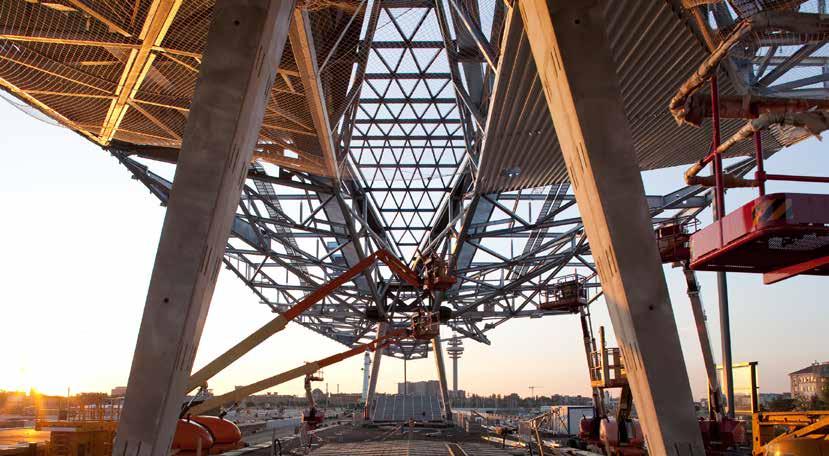
As UK rail transport undergoes a comprehensive overhaul, it is important that we choose materials with proven performance and which can be trusted to deliver. For Galvanizers Association, the idea that performance should be ‘seen to be believed’ is an important part of the equation, and makes galvanized steel an ideal partner for network upgrades and expansion, HS2, and beyond.
Durable
and more
Galvanized steel has, for decades, maintained a reputation for strength and durability, and is a ubiquitous material that contributes to countless miles of the UK rail network. Galvanized steel is used abundantly in signalling infrastructure, overhead line support, steelwork for concourse structures, and as a reliable zero-maintenance solution for station construction and platform architecture. Without doubt, the relationship between rail transport and galvanized steel is longstanding and trusted. As the UK embarks upon vital investment in transport infrastructure, it is worth remembering another key feature of galvanized steel: the visibility of its proven performance.
Seeing IS BELIEVING
Seen to be believed
Performance data for galvanized steel is readily available from the Galvanizers Association, the industry’s representative body. An expert technical team can provide detailed advice on compiling specifications for galvanizing steel, reviewing design details to maximise the benefits of galvanizing, as well as advising on galvanizing standards. Numerous guides have been produced to support engineering and construction professionals, and which give confidence in the longevity of the corrosion protection that hot dip galvanizing affords.
Publications like the Galvanizers Association UK and Ireland Atmospheric Corrosion Map for Galvanized Steel provide up-to-date performance data for the atmospheric corrosion rate of hot dip

galvanized steel. It can also be used to find the average life of a coating within a 10km2 area. Other assets support the use for galvanized steel as a circular, cost effective, and regenerative material, and assist construction professionals in understanding the benefits and process of hot dip galvanizing.
Inherent benefits
The inherent benefits of hot dip galvanizing are easily quantified. Galvanizing provides a high level of barrier protection to all internal and external steel surfaces for many components used within the rail industry. The low atmospheric corrosion rate, typically 0.5-1.5mm per year throughout most of the UK and Ireland, means that a galvanized coating can often afford critical
PHOTO:
Rail Engineer | Issue 198 | Sept-Oct 2022 58 STRUCTURES & INFRASTRUCTURE
UK infrastructure a coating life of about 100 years or more. Galvanizing also offers sacrificial protection, which means that in the event that scratches or small chips to a galvanized coating occur they will never expand or be under-cut by rust - a valuable benefit not afforded by coatings such as organic paint systems.
Hot dip galvanizing ensures a coating which has a strong metallurgical bond to the steel and which forms a system of alloy layers. These are wear resistant and cushion structures against impact, making galvanized steel resistant to mechanical damage during handling, storage, transport, and erection.
Ease of inspection

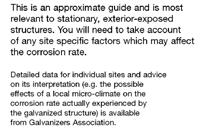
When we look to build infrastructure projects for the longterm, trust and proven performance are key. Aside from the longevity of galvanized steel, which has been proven in many installations across UK transport, there are proven reasons to galvanize steelwork. Among them is that galvanized steel has the advantage of being relatively easy to inspect. Coating thickness checks can be readily conducted to enable the coating's performance and life to be accurately determined in any given environment. Techniques for such measurements are documented in standards including EN ISO 2178.
In recent years other systems have tried to challenge the record of galvanized steel. Weathering steel, for example, can potentially offer a long term, maintenancefree solution to corrosion, but its performance is strongly dependent upon the formation of the protective rust patina. This is in turn affected by both its service environment and the need for regular wetting and drying cycles. As a result, biannual inspection of weathering steel structures by an experienced inspector may be required for up to 12 years. Additional inspections may also be required at critical points on a six yearly basis for up to 18
years, so as to assess the loss of steel section that has taken place. Similarly, paint coatings on steelwork can offer a good level of barrier protection. However, they damage relatively easily, resulting in the need to conduct significant on-site repairs. In addition, even good quality paint systems as designated in EN ISO 12944 achieve relatively short lives of circa 25 years. By default, this builds in costly maintenance schedules during the life-time of a painted structure.
Viewed over the long term, hot dip galvanizing has a long list of systematic benefits that are both reliable and quantifiable. As we look to upgrade our UK Rail Network across regions, landscapes, and variable climactic conditions, materials that can be easily inspected, trusted and left to do the job will offer significant advantage.
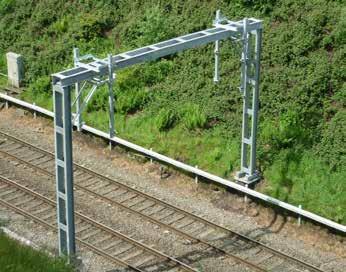
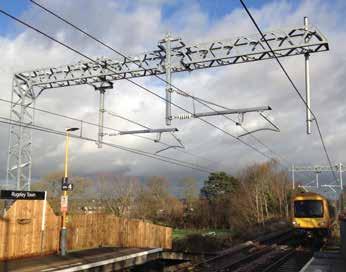
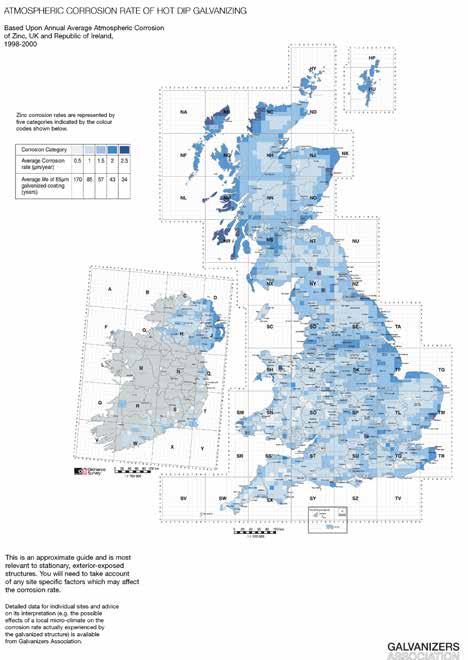
For more information please visit: www.galvanizing.org.uk/rail

59 Rail Engineer | Issue 198 | Sept-Oct 2022 STRUCTURES & INFRASTRUCTURE
Great Musgrave bridge
LESSONS LEARNED
BOB WRIGHT


The unfortunate tale of the infilling of Great Musgrave bridge has already been recorded in Rail Engineer, as has the more recent rejection of National Highways’ belated planning application. This feature considers this issue from an engineering perspective by considering the report commissioned by The HRE Group and produced by Bill Harvey Associates (BHA). This reviewed public and FOI documents and found no evidence to suggest a current or developing risk of collapse.
It identified several key issues that had led to the unnecessary condemnation of the bridge and suggested that the inspection and understanding of masonry arches and other legacy infrastructure is not as well taught and understood as in the past. This results in less well-informed analysis and assessment. Several lessons learned were highlighted in the report and form the basis of this feature.
Resilient structures
Masonry arches, built from local stone, or locally made bricks, have been a prominent feature of the UK’s transport infrastructure for two millennia.
Those remaining in our transport networks are now well over a century old, with many rail and highway structures being significantly older, Great Musgrave being 160 years old. The peak in construction of masonry arches was during the great railway expansion of the early to late 19th century, and highway bridges half a century before that. With their 200+ year life span they have significantly longer service lives then their more modern steel and concrete counterparts. In addition to their robust nature, they are also capable of surviving quite serious neglect, movement, and abuse whilst still carrying service loads.
The BHA report notes that cases of collapse of stone arch bridges are extremely rare and that when they do collapse, the main cause is scour undermining support of abutments or piers.
Understanding the structure
Understanding the elements of each structure is important so that, in turn, the nature and importance of defects is properly understood.
Unlike a simply supported steel or concrete bridge deck, a masonry arch is made up of a number of elements, some of which are hidden from inspection, that work together to form a single structure and must be considered in that way. These are the arch ring, abutments and piers, spandrel walls, and the arch backing (or internal spandrel walls).
Masonry bridges are built from voussoirs, large blocks of stone dressed into wedged blocks. The arch is formed of a single ring of blocks,

60 Rail Engineer | Issue 198 | Sept-Oct 2022 STRUCTURES & INFRASTRUCTURE
typically around 500mm in depth, constructed on timber centering. Each block bears against its neighbour through a transverse mortar joint, forming a continuous arch from side to side. The continuity of this load path is important, and any significant mortar loss is a cause of concern as dropping of voussoirs or even the sagging of the arch could result.
The longitudinal joints between voussoirs, or perpend joints, do not have such an important structural purpose and loss of mortar in these is not as significant, indeed they were not always pointed at construction. The stability of the abutments and earthworks beyond are fundamental elements of an arch bridge, providing resistance to the arch’s dead and live loads.
Informed inspection
Traditionally, arches were stiffened when constructed by placing a ‘rubble concrete’ backing to the arch, normally from the arch crown, with a small fall to the abutment. Thus, the arch is substantially thicker than the arch face suggests. The backing also helped to lock together the uneven voussoir tops.
Spandrel walls act as retaining walls, the lower parts containing the self-supporting
arch backing and the upper parts supporting the formation and live loads. The track on many rail underbridges has been raised over time, adding live load to the spandrels.
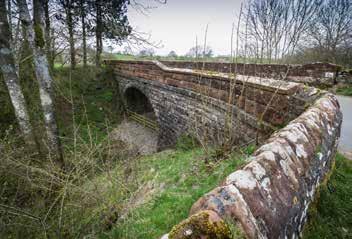
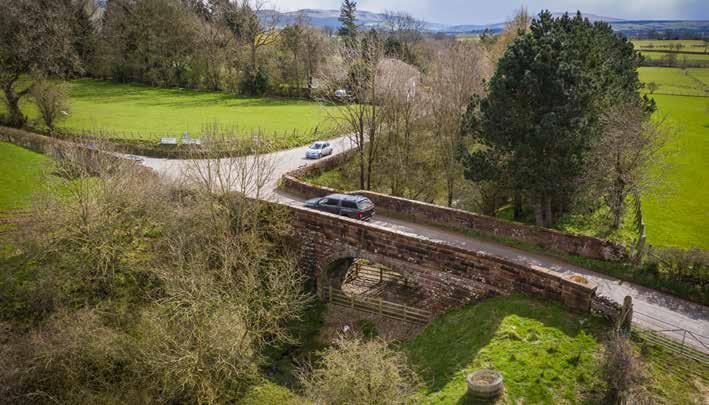
Small fractures in the extrados of an arch beneath the spandrel wall are a common defect, the result of cyclical movement between the movement of the arch under passing live loads and the relatively stiff spandrel wall. At Great Musgrave historic movement of up to 10mm was noted but this is normal and unavoidable.
Informed and skilled technical inspection is important as the significance of damage or deterioration in structures is not always obvious to uninitiated staff or the public. For example, prior to the collapse of the spandrel wall at Barrow on Soar in 2016, there were a number of visible developing defects warning of ongoing failure, but which were not considered important by passers-by.
Rigour required Bridge managing authorities such as Network Rail and National Highways have formal structures inspection procedures, varying between frequent visual examinations and periodic detailed investigation. These should identify and record high quality, comprehensive, and repeatable records of bridge condition. Much damage will be seen first in small changes over time, and the sooner those changes are detected and recorded, the more chance there is of dealing with the damage when it can be simply rectified.
The key to successful inspection regimes is that they must be carried out by individuals with an understanding of construction details and trained to collect, and sense check, dimensional data. Traditionally bridge inspections were carried out by trades trained individuals with experience of bridge defects
61 Rail Engineer | Issue 198 | Sept-Oct 2022 STRUCTURES & INFRASTRUCTURE
BILL HARVEY
Engineer Bill Harvey lost his 18-month battle with pancreatic cancer on 15 October.
His career spanned more than 50 years, starting with Leeds City Council and construction of the Humber Bridge, before moving into teaching and then consultancy work. He became internationally recognised as a masonry arch specialist.
Humble and generous, Bill’s belief that engineers should have a deep social conscience proved an inspiration to many. His online ‘Bridge of the Month’ resource - which examines 140 noteworthy structuresoffers unrivalled insight into the challenges presented by arches and will serve as a lasting legacy for learning.
and repairs. Today’s bridge inspectors’ professional training includes little on traditional structures such as masonry arches.

Inspections should be supported by tools and processes that make progressive damage clear and which help to identify patterns of damage across similar structures. However, formalised routine bridge inspections are often based around ticks in boxes, verbal descriptions, together with a few dimensions and photographs, without continuity between each inspection report.
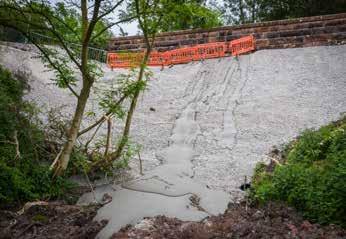
Bill Harvey Associates’ review of a number of previous Great Musgrave bridge inspection reports noted that the photographic record was inadequate, with not all defects being illustrated and a lack of continuity between reports of which defects were illustrated. The quality of photographs was also quite low, with poor definition of the featured defects.
Fluctuating data
At Great Musgrave, great weight was given to the loss of mortar in joints and the dropping of voussoirs. In rough faced stone, repeated measurement of these defects is only meaningful if measured in the same location every time, preferably using fixed datum points or tell-tales. Scrutiny of the historic bridge inspection reports showed a lack of continuity in measurement and locations, with one-off measurements, no defined or recorded method, and no record of locations at which measurements were taken. This resulted in fluctuating data on mortar loss and voussoir movement, and the raising of alarms to those interpreting and acting on the reports.
A single wedge-shaped voussoir cannot move at all without considerable damage to adjacent masonry. However, significance was given to a dropped voussoir as evidence of arch deterioration, despite no evidence of mechanical damage around its perimeter, or to the mortar. Arches are constructed on timber centering, and on striking this some small movements would have occurred as the structure absorbed self and imposed loads and established load paths between each voussoir. It is not uncommon for individual stone blocks to drop slightly at that time. This was the likely reason for a single, historical,
dropped voussoir, and the varying measurements taken gave an inaccurate impression of movement.
The loose use of report terminology incorrectly stated in one report that the arch crown had dropped rather than a single block. The former would have been much more significant and wrongly influenced decision making.
Effectiveness of in-filling
Infilling can only strengthen an arch if the infill is strong enough to support the existing structure, and that there is no void between the fill material and the arch extrados.
Masonry arches are inherently stiff and the movements of the Great Musgrave bridge under road traffic loads would have been low single digit millimetres. It is not possible to compact and grout new fill, without minor settlement of the fill and of the former track formation beneath, greater than the live load distortion.
So, in practice infill cannot help to support the dead and live loads from above. At best, infilling could support a collapsing arch, but as noted above, catastrophic failure of arches is extremely rare.
BHA also noted that filling close to an arch soffit creates a permanently damp environment which can further accelerate stone and mortar degradation.
Ensuring long life
The key message learned from this project is that arches are very robust, but that the causes of damage are complex, and our understanding limited. The accurate and detailed reporting of condition, linked to a maintenance regime that deals with defects in their early stages, will result in continued long service lives for masonry arches.
The BHA report is available at http://thehregroup.org/ structures/pdf/2022-006-GreatMusgrave-review.pdf
62 Rail Engineer | Issue 198 | Sept-Oct 2022 STRUCTURES & INFRASTRUCTURE
Quality precast concrete manufacturers... for a great range and even greater value







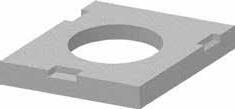






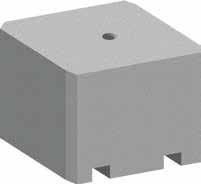
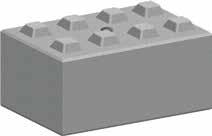
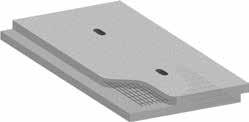


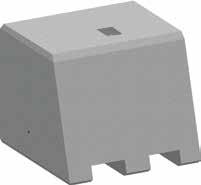
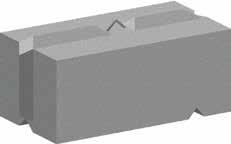
Elite Precast Concrete are one of the UK’s leading precast concrete manufacturers combining the highest levels of customer service with always being the best value option.
Our focus is on driving down the cost base and then passing these savings onto our customers. This enables us to provide constant and predictable price structures which in turn underpin our ethos of developing customer relationships over the long term.

Every product we make is cast from the same premium quality, high strength (50N/mm2 ) concrete.
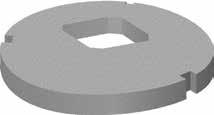

We were also the first and by far the largest manufacturer of interlocking blocks for various temporary works; fire breaks; retaining, blast and push walls and also, by offering three block types, you can be certain that we have the solution you are looking for.
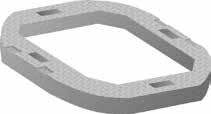
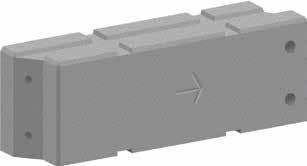
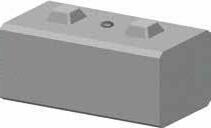

For more information on Elite quality concrete products phone 01952 588 885 or browse www.eliteprecast.co.uk




InnoTrans returns


Innotrans has been held in Berlin every two years since 1996. Back then, it was an entirely German event with just 151 stands and 6,376 visitors. Thereafter it steadily grew in international importance so that by 2008 it had 85,592 visitors and only 48% of its 1,914 stands were those of German companies.
At the beginning of the Covid pandemic, the 2020 fair was postponed until April 2021 and was then cancelled when this proved not to be possible. Hence this year’s Innotrans was the first for four years. It had 2,834 exhibitors from 56 counties and attracted 137,394 visitors. As a comparison there were 232 stands at last year’s Railtex/Infrarail.
Accommodating Innotrans at the Berlin Messe exhibition grounds required all its 42 exhibition halls, providing a total covered area of 108,000 square metres. There were also 3.5km of outdoor track displaying 124 rail vehicles and a bus display with 14 buses.

Innotrans also had a full event schedule which ranged from short exhibitor presentations to conventions of a few hours, considering topics
such as rail automatics, 5G in mobility, ERTMS, and design for passenger experience. Videos of most of these conventions can be seen on the Innotrans website.
It was also a platform to launch new products and announce various agreements. Of these, perhaps the most newsworthy was the Memorandum of Understanding signed by the Chief Executives of Deutsche Bahn and Ukrsalisnyzja (UZ) which guarantees Ukraine’s railways support for reconstruction after the war and collaboration on expanding rail freight corridors and terminal capacity.
With so much to see and do it is only possible to cover a small fraction of what was on offer at Innotrans. What follows is a necessarily arbitrary description of what caught my eye.
DAVID SHIRRES
INNOTRANS 64 Rail Engineer | Issue 198 | Sept-Oct 2022
RIA’s pavilions
Britain ranked fifth at Innotrans in respect of stands at the show. The top five countries were Germany (998); France (219); Italy (206); Switzerland (138); and the UK (109). Many of the UK companies were at two separate pavilions organised by the Railway Industry Association (RIA) which had also arranged a reception at the British Embassy in Berlin hosted by the British Ambassador, Jill Gallard. Speaking at this event, Dan Moore, the Department for Transport’s (DfT) director of strategy and analysis confirmed the UK Government’s commitment to supporting rail exports.
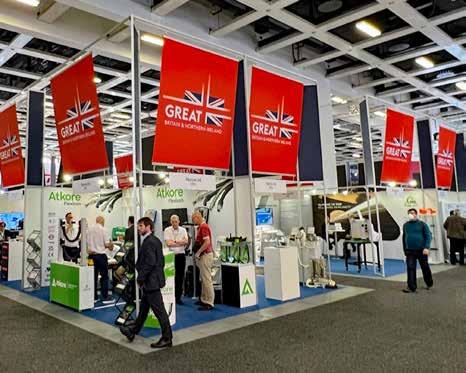

Innovate UK had a stand at the larger pavilion where winners of its First of a Kind competition funded by the DfT, showcased its products. Here, Incremental demonstrated its real-time incident management system, RAPPORT. Chrome Angel demonstrated its “serious game playing” approach to train crew training and educating station staff about problems faced by disabled passengers.
UK Pavilion.
INNOTRANS 65 Rail Engineer | Issue 198 | Sept-Oct 2022
(Inset) Squirrel inspection robot.

Also on this larger pavilion was One Big Circle which demonstrated its on-train Automated Intelligent Video Review video capture system to detect infrastructure anomalies. Lotus Engineering was also there to promote the use of its automotive technologies in a rail environment such as noise cancelling sound systems in a passenger rail vehicle.
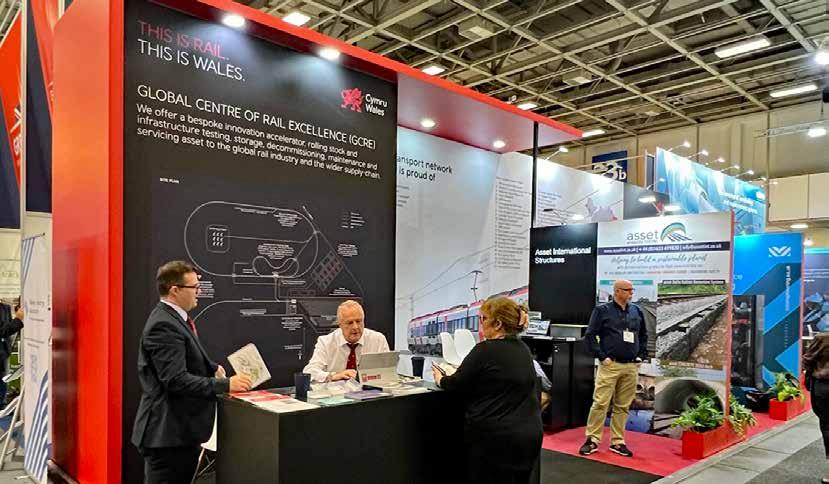
The other pavilion was set up by RIA, in association with the Welsh Government, to promote Welsh companies at Innotrans. The intention was also to attract inward investment, for example to support train production at CAF’s Newport plant and the infrastructure work for the Global Centre of Rail Excellence (GCRE). This is the rail testing centre test track being built on a closed surface mine 25km northeast of Swansea and which is expected to be operational in 2025.
Other UK stands
On its stand, Unipart Rail showcased the innovations of its partner companies. These included Park Signalling’s next generation RETB signalling which provides affordable digital in-cab signalling on remote single-track routes. Also on show was the Squirrel inspection robot produced by Acuity Robotics which climbs metallic structures, and the portable tCat trolley which surveys OLE and track clearances. For OLE installation, the Gripple catenary droppers can be installed up to eight times faster than conventional droppers using their quickly adjusted lockable release cams.
Though Progress Rail is an international company, the UK element of its stand concerned its cast crossings and had a video demonstrating how around 60% of its crossings supplied to Network Rail (over 5,000 to date) are explosive depth hardened. This involves fixing Semtex to a crossing and detonating it to work harden to manganese steel.
Oe electrics had on display a much smaller product - its easily replaced USB modules which can be replaced in situ without the need to switch off power. On the Icomera stand the Visor app, developed by its UK subsidiary, GoMedia, was on display. This has been developed in collaboration with the Royal National Institute of Blind People to help visually impaired people navigate the UK public transport network. It works by recognising NaviLens BIDI codes which, unlike QR codes, can be read from up to 20 metres away.
(Above) Welsh Government Pavilion.
INNOTRANS 66 Rail Engineer | Issue 198 | Sept-Oct 2022
The UK rail service sector was well represented at the CityCube, a conference and event hall opened in 2014. On its stand Mott McDonald gave presentations on digital efficiency on major programmes, commissioning rail systems, and digital project management solutions. Meanwhile, Atkins demonstrated its decarbonomics system which offers a carbon reduction service for entire building portfolios. Also on its stand was a demonstration of how 3D surveying had produced a digital twin which had been used to design the current Dalmeny to Haymarket electrification scheme.
With much of its R&D activity outside the UK, the University of Birmingham’s Centre for Railway Research and Education (BCRRE) was at Innotrans to further raise its international profile. At Innotrans it signed agreements with various organisations including one with the Welsh Government to partner innovation activities at the new GCRE test site. BCRRE also announced its new Rail Innovation Cluster which aims to provide SMEs with a greater value innovative capability.
Other stands of interest
The Australian Railway Association led the furthest travelled delegation of 180 Australian rail industry delegates from 49 organisations. With £90 billion to be invested in the country’s rail network over the next 15 years, the
delegation aimed to connect with suitable businesses, look for new solutions to implement these projects, and attract skilled workers to close its skills gap.

Denmark is famous as the home of Lego and, amongst electrification aficionados, for its rolling programme of 1,400 single track kilometres which started in 2015. This is being delivered by a consortium of Siemens and Danish contractor Aarsleff Rail whose stand naturally featured a LEGO model of an electrification piling rig. Hitachi Metals had an interesting electrification innovation that monitored contact wire wear by embedding an insulated wire within it. This wire’s insulation wears through when the contact wire wear limit is exceeded to trigger a warning signal. A technology developed for submarines, inertial navigation systems using fibre optic gyroscopes were on display at the iXblue stand. This provides location information accurate to within 13cm for every kilometre for which GPS is not available. On the Fraunhofer stand it was fascinating to watch the company’s prototype lightweight mobile robot steam cleaner navigate its way to clean a coach interior.

Lego piling rig.
(Left) NaviLens BIDI code. (Right) Fraunhofer's robot steam cleaner.
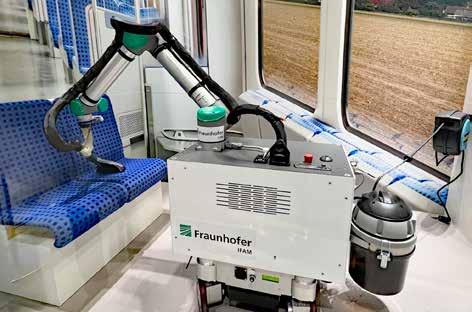
INNOTRANS 67 Rail Engineer | Issue 198 | Sept-Oct 2022
(Below left) Class 777.
(Right top) Class 398.
(Right bottom) The Class 756 power car has three battery rafts of 600 kWh in total and a 480kW diesel engine.
With the current energy crisis, it was perhaps not surprising that multi-national component suppliers Wabtec and Knorr-Bremse were both promoting their efficient low-carbon products. Wabtec’s Trip Optimizer™ is a smart train cruisecontrol used on 17 US railroads that is claimed to offer 10% fuel savings. Knorr-Bremse was showing its LEADER system which helps drivers adopt an energy-efficient driving style and is claimed to save, on average, 15% fuel savings. Both companies also promoted their energyefficient heating, ventilation, and air conditioning systems (HVAC) which also use refrigerants with a global warming potential less than 1% of current refrigerants.
Without doubt, Siemens had the largest stand at the show and needed its own guide plan showing the stand’s 58 displays. These were arranged into four areas: i) lifecycle costoptimized rail infrastructure and rolling stock; ii) 100% system availability; iii) maximised network capacity; and iv) optimised customer experience and processes. These are all supported by the Siemens Xcelerator, the company’s new digital business platform which has open interfaces to accelerate digital transformation and sustainability in mobility at scale. Hence the stand’s slogan was ‘Destination Digital.’
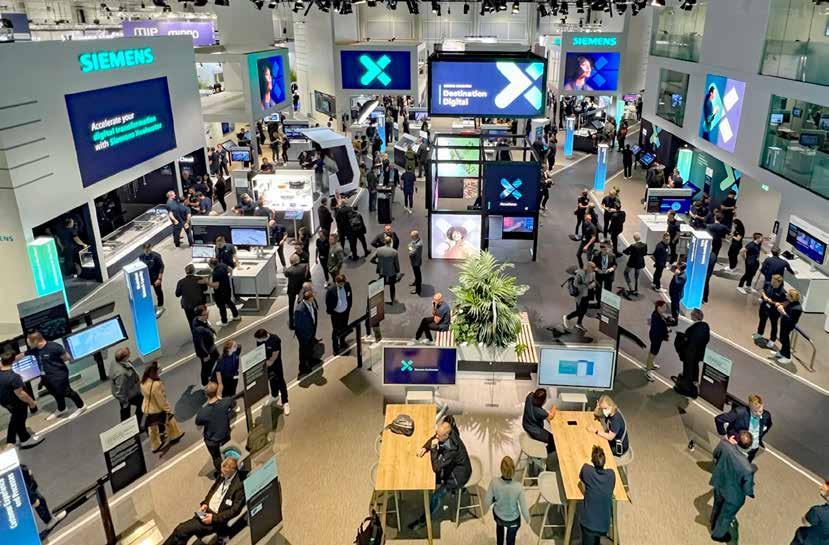
Rolling Stock
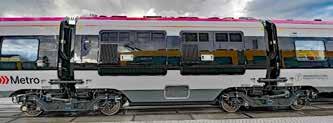
Of the outdoor displays, Stadler’s trains provided the greatest UK interest with three new classes of vehicles for Wales and Liverpool. Launching the Class 777 units, Liverpool Mayor Steve Rotheram advised that they would be in service by the end of the year. Fifty-three fourcar Class 777s have been ordered from Stadler, of which seven are fitted with batteries. The unit on display was one of these and is fitted with a 320kWh battery which gives it a range 55 kilometres beyond Merseyrail’s third rail network.
The new Transport for Wales (TfW) trains showcased by Stadler were the Class 398 100-km/hr tram train CITYLINK units and Class 756 FLIRT units which are expected to enter service in 2024. 36 x Class 398 units have been ordered as well as 7 x three-car and 17 x four car Class 756 units. These are 120km/hr tri-mode units which can operate from 25kV AC OLE, diesel, and battery power.
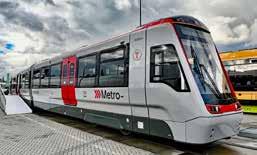
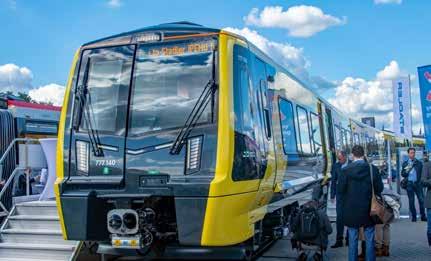 The Siemens stand.
The Siemens stand.
INNOTRANS 68 Rail Engineer | Issue 198 | Sept-Oct 2022
Stadler also had on show its 160km/hr FLIRT Akku battery-electric unit which will enter service in Germany this year. In 2021 this unit set a world record by travelling 224 kilometres on a test track in battery mode.


Other units on display included Hitachi’s tri-mode Blues unit for Italy, Alstom’s Coradia Stream High Capacity double-deck regional train for Germany, and Siemens Desiro HC. Also, for Germany, this unit is configured with two powered single-deck end cars and two doubledecker unpowered middle cars.
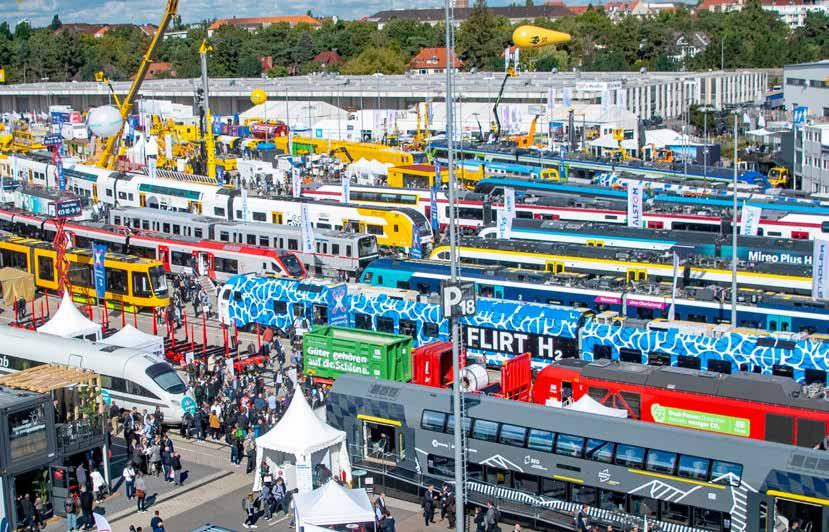
A coach from a Talgo ICE L 230km/hr high speed trainset showed Talgo’s unconventional single-wheel articulation system. DB has ordered 23 of these trains which consist of a locomotive and 17 coaches. Talgo claims this offers 45% weight savings over conventional bogie vehicles.
Various trams were on display. Skoda presented its metre-gauge low-floor Skoda 36T tram train which will operate within and between the German cities of Heidelberg, Mannheim, and Ludwigshafen, and can operate catenary-free for up to 800 metres. Stadler also unveiled its new metre-gauge tram, the TINA (total integrated low-floor drive) which should enter service in Darmstadt next year.
The Siemens fully automated X tram will operate on Vienna’s new U5 line from 2024. These trams can also be manually driven on existing lines. They have a novel electricallycontrolled friction brake which uses a compact, self-contained, electrohydraulic brake actuator which does not require compressed air.
There was an interesting selection of locomotives which highlighted differences between UK and European practice. The TRAXX MS3 locomotive displayed by Alstom, for
example, can operate from the 15 kV 16·7 Hz, 25 kV 50 Hz AC as well as 1·5 and 3 kV DC power supplies on the different European networks. It has a maximum power of 6MW and also has a 230kW diesel engine for shunting and last mile operation.
Stadler was displaying Europe’s most powerful locomotive, the 9MW EURO9000 which also operates from Europe’s four different power systems. It has 2 x 950kW diesel engines for operation on non-electrified lines and to boost power when DC power supplies are used. Siemens were showing Europe’s faster locomotive, its 230 km/hr Vectron 230 which has a maximum power of 6.4MW of which Czech Railways has ordered 50 for delivery from 2025.
The outdoor display featured more than 120 vehicles.
(Left) Hitachi Blues unit. (Right) Vectron 230 locomotive.
INNOTRANS 69 Rail Engineer | Issue 198 | Sept-Oct 2022
The Chinese rolling stock manufacture CRRC had on shown its 140km/hr 6.4MW BISON electric locomotive which has supercapacitors giving it a 10-kilometre range ‘off the wire’. CRRC is developing this locomotive for use by Rail Cargo Hungaria.
Hydrogen trains
It is now six years since Innotrans saw Alstom unveil its iLint, the world’s first hydrogen train. This year it was evident that they are no longer the only company with a hydrogen train. Though there was no iLint at Innotrans, rides on this hydrogen train across Berlin were on offer at the Alstom stand which showed how the iLint had recently travelled 1,175km without refuelling.
On its stand, an Alstom representative confirmed that its UK hydrogen train proposal does not involve any loss of passenger space as its roof-mounted hydrogen tanks can be accommodated within the UK loading gauge.
At the presentation of Siemen’s Mireo Plus H hydrogen train, the contract to supply seven of these two-car units to the Berlin-Brandenburg region was formally signed. Siemens has worked
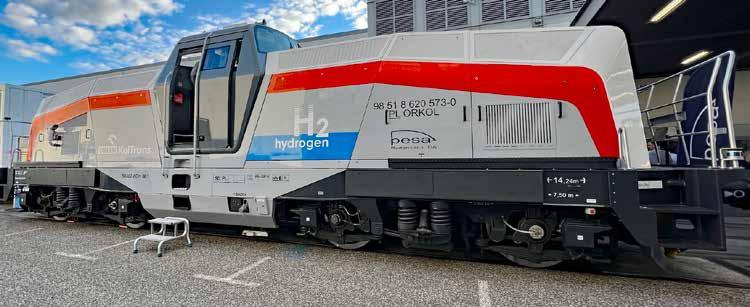
with Ballard to develop the 200kW fuel cells for these 160km/hr Mireo articulated units.
In addition, DB Energie GmbH and Siemens Mobility have a joint R&D project, H2goesRail, which has developed a mobile hydrogen filling station with a 450kW electrolyser that can produce 200kg hydrogen per day. This was also on display.
Stadler was also showcasing its hydrogen train. This FLIRT H2 unit will operate in San Bernardino in California and is a 125km/hr two-car unit with central power pack containing the hydrogen fuel cells and tanks. It is supplied under a contract to supply one train with an option for a further four.
In other developments, Polish manufacturer, Pesa unveiled a hydrogen-powered shunting locomotive which has a 650kW power output and can operate for 15 hours before requiring refuelling. Whilst on its stand, Hyundai Rotem had a model of a hydrogen tram that it had been developing for use in Egypt. The company advises that it sees hydrogen as an alternative tram energy storage system, as the weight and vehicle costs for fuel cells are lower than those of batteries.
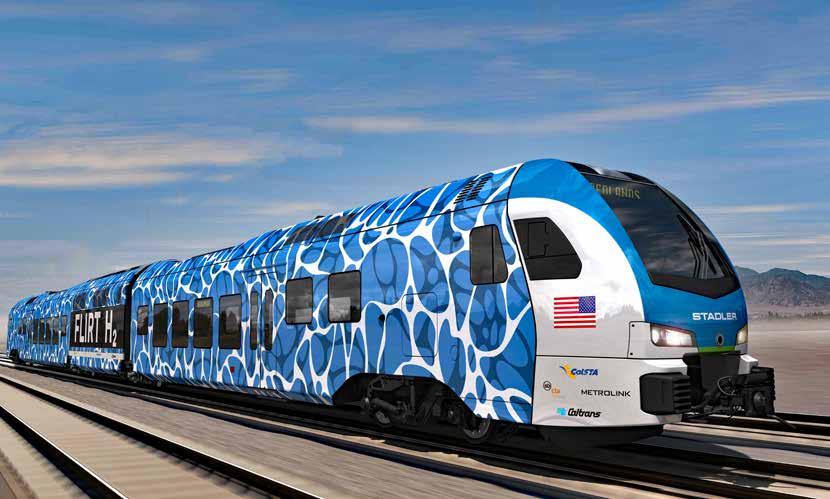 Stadler’s FLIRT H2 for California.
Stadler’s FLIRT H2 for California.
INNOTRANS 70 Rail Engineer | Issue 198 | Sept-Oct 2022
Pesa’s hydrogen shunter.
The Baret Group has invented Hyba, a new hybrid and sustainable solution. The Hyba track support benefits from the nobility and resistance of wood which, coated with a recycled polymer envelope, is durable without the need for chemical treatments.

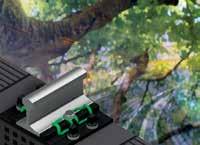









hyba-tech.com











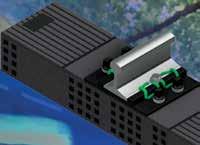






safety, durability and connectivity: the
Performance,
hybrid revolution is on track.
Of the 14 buses at the bus display, 10 were battery-powered, one was a trolley bus, and three were hydrogen powered. The hydrogen-powered buses had been built by Skoda, Solaris Urbino and Ferrovie dello Stato. The later company supplies Busitalia which operates 32 hydrogen buses, each holding 38kg of hydrogen with a range of 400 kilometres.
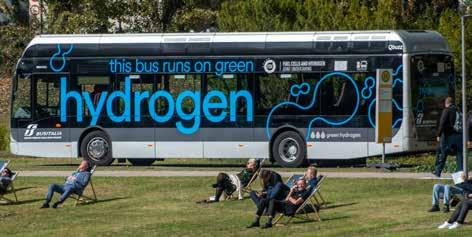
The Future?
Whilst Innotrans showcased many proven railway engineering products, some stands offered an unconventional, and in some cases, unproven future.
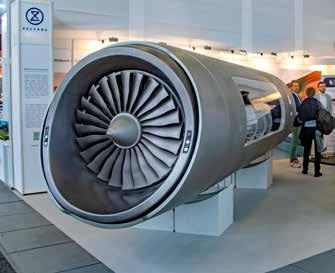
The International Monorail Association stand was promoting the use of monorails. At Innotrans, it released its Monorail World Market Study which showed the market for such systems to be €2 billion. This study showed that the capital cost of monorails ranges between $30-70 million per kilometre and that, for the same capacity, these lower and upper costs are comparable with the construction of light rail vehicles and light metro.
Wikipedia shows that, worldwide, there are 44 monorail systems of which only 14 are over 10km long, and 207 metro systems of which only seven are under 10km long. Thus, monorails may be a niche role though it seems doubtful that they can challenge rail’s urban transportation dominance.
Two stands showed proposed maglev trains. CRRC had a model of its 600km/h maglev train which has successfully completed low speed tests on a short test track. Nevomo (formerly Hyper Poland) introduced its MagRail technology which it claimed can be easily installed on existing rail infrastructure to enable trains to travel at 550km/h. The company recently received a €3.8 million grant from the Polish National Centre for Research and Development.
Although Nevomo has yet to demonstrate that its proposal is credible, maglev is a proven technology. However, it is not clear what problem it solves as, above 300km/h, rolling resistance is a tiny fraction of the aerodynamic drag and comparable with the energy maglev needs for its levitation. Hence, it’s not clear how the huge cost of its infrastructure could be justified.
This year Innotrans hosted its first International Hyperloop Conference, the second ever such event, at which various hyperloop companies including Zeleros and Hardt Hyperloop who also had stands at the show. Although it is now nine years since Elon Musk produced his paper proposing hyperloop, it remains unclear how the many safety aspects of transporting passengers in pods in a vacuum tube network at 1,000km/h can be addressed.
Those on the Hardt Hyperloop stand did offer solutions which included the workings of a hyperloop point. They also explained how each system component will be eventually certified after testing and development. However, until then hyperloop is literally a pipedream, albeit one that attracts large amounts of finance. With no working hyperloop system in sight, it will be interesting to see how long this financial model can be sustained.
The sheer scale of Innotrans is an indication of the size of the global rail market which is €177 billion euros according to the latest study by the European Rail Supply Industry Association (UNIFE). This made up of services (37%), rolling stock (35%), infrastructure (18%) and signalling (10%). Geographically, the four largest markets are: Europe (33%), Asia (33%), North America (15%), and Russian-gauge countries (12%) which, in total, are 93% of the market.
Innotrans is certainly an international event. Yet, not surprisingly, it was dominated by European companies. By region, the companies providing stands were from: Europe (87%), Asia (6%), Middle East (3%), and North America (2%).
The companies mentioned in this report are a just tiny percentage of those exhibiting and an arbitrary selection at that. Yet it is to be hoped this gives readers a good impression of the event and shows the importance of keeping abreast of railway engineering outside the UK.
Innotrans next takes place between 24 and 27 September 2024. If you are going, book your hotel well in advance, wear comfortable shoes, and remember that you can’t do it all.
Busitalia’s hydrogen bus.
INNOTRANS 72 Rail Engineer | Issue 198 | Sept-Oct 2022
Hyperloop pod on the Zeleros stand.
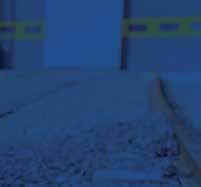



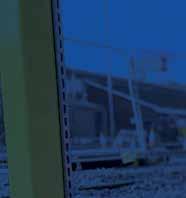

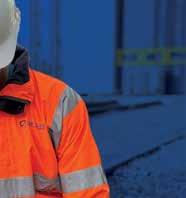


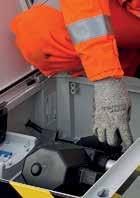









HALF Location: Colchester, Essex | Salary: £££ Competitive For the full job advert details or to apply online visit: www.FirstClassSafetyCareers.uk Rail Safety and Control System Design Engineer FirstClass Safety & Control is a growing business and we are looking to expand our highly skilled engineering team with forward thinking Rail Safety & Control System Design Engineers. Our recent growth has allowed us to relocate to new premises in Colchester, Essex, which has excellent transport links. Are you interested in becoming a key part of a friendly and professional team? The ideal candidate can look forward to a varied and interesting role, and will be rewarded with excellent bene ts. The Role will include • Developing CAD designs • PLC Programming • Signalling Design using a SCADA platform Knowledge, Skills & Experience • PLC programming • Software & hardware development • Systems design, development & commissioning +44 (0)1621 743 743 info@ rstclass-safety-control.co.uk www.FirstClass-Safety-Control.co.uk R E C R U I T M E N T & T A L E N T A C Q U I S I T I O N T E A M O F T H E Y E A R S A M J E N N I N G S C H A R I T Y A W A R D 2 0 2 2 N O M I N A T E D N O M I N A T E D A D V A N C E T R S C E L E B R A T I N G R A I L S T A F F A W A R D N O M I N A T I O N S A D V A N C E T R S ' S R E C R U I T M E N T P A R T N E R S H I P W I T H A L S T O M N O M I N A T E D I N R A I L S T A F F A W A R D S A N D S A M J E N N I N G S I S N O M I N A T E D F O R H I S C H A R I T Y W O R K A H E A D O F V I E T N A M C Y C L E F O R R A I L W A Y C H I L D R E N L A T E R T H I S M O N T H S C A N T H E Q R C O D E T O D O N A T E T O H I S F U N D R A I S I N G . CAREERS 73 Rail Engineer | Issue 198 | Sept-Oct 2022
We are constantly
for new talent to strengthen the Colas Rail UK team.
Our people are our strength, and everyone working for Colas Rail UK plays a vital part in the company’s success.
Joining Colas Rail UK provides the opportunity to not only establish yourself within one of the biggest contractors in the rail industry, but also the springboard to take your career to new heights.
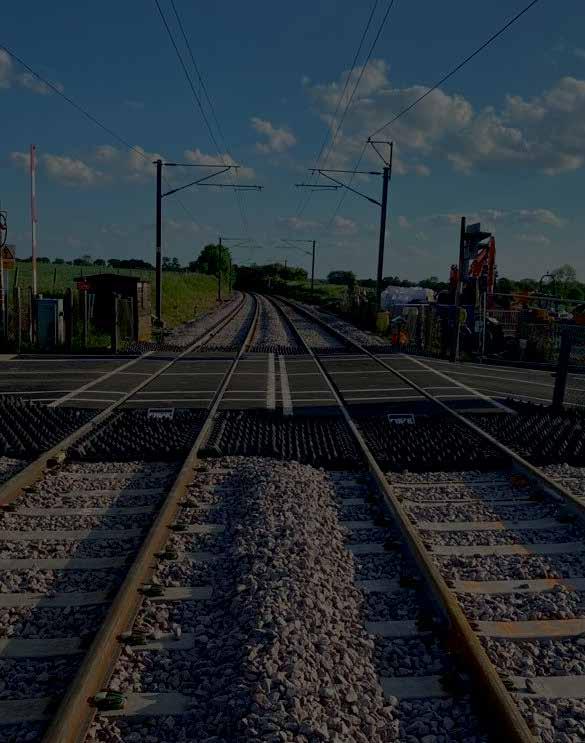
We’re always looking for passionate people to join our business and with several bases across the UK, there are plenty of opportunities to join our Railway family.
We offer an attractive salary and benefits with a culture of can do, empowerment and flexibility, to allow you to make a real difference.
We would like to hear from people who would like to work in the rail industry.
Please register your interest by sending your CV to recruitment@colasrail.com and we will provide you with further information.
www.colasrail.co.uk » Production Manager » Site Supervisor » Site Engineer » Project Lead » Site Manager » Project Lead » Technical Engineer » Apprentice P-Way » Development Manager » Pway Supervisor » Development Manager DRIVEN BY CHANGE Join Our Anglia Rail Team Career Opportunities Include: CARE | SHARE | DARE
looking
Together
Signalling a career in Western Australia











Signaller / Network Controller Career Opportunities












About Arc Infrastructure
Arc Infrastructure manages and develops transport infrastructure assets that support growth and create jobs in Western Australia (WA). Rail is at the heart of our business, and the 5,500km rail network is the backbone of freight transport in Western Australia. Spanning a region around the same area as continental Europe, from the Midwest across to the Goldfields, and through to the stunning South West and Great Southern.We’re committed to working with industry, our customers, partners and communities to find new opportunities that will support and strengthen our rail network for the benefit of WA.
The Opportunity

Arc Infrastructure’s network control team is critical to our business, and responsible for the safe, economical, and effective monitoring and control of train services across our entire rail network.

We currently have opportunities for experienced Signallers / Network Controllers to join our team and make a difference on our network.
About you







The successful applicant will be an experienced Signaller/Network Controller who remains calm under pressure, is motivated, and is an excellent communicator.
You will be provided with in-house theoretical and on the job training. From our Perth-based network control centres, our experienced network controllers will work with you to help you adapt your skills and experience to our network. You will be working 12-hour shifts on a rolling roster over an average 38 hour working week.
Careers at Arc Infrastructure




Arc Infrastructure has created a culture of team work where diverse skills, ideas, and experience are valued. We promote a work environment that is characterised by personal accountability, mutual trust, and respect. At Arc, we take a genuine interest in our employees and their development. We understand our employees are the key to our success and, as a team, our focus is to ensure they feel safe, valued and fulfilled in the work that they do.
We will provide the successful applicant with a competitive remuneration package starting at $99,000 base salary, plus annual shift allowance of $27,663, plus employer superannuation contributions of 10.5%. In addition, we offer a benefits package including Visa sponsorship and relocation assistance.

ARC’S RECRUITMENT PROCESS

Arc Infrastructure will be in the UK as part of our recruitment drive in early 2023, please scan the QR code to apply.

www.arcinfra.com

WE GO BEYOND

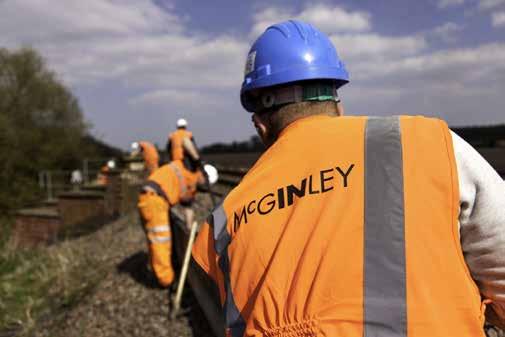


People for Infrastructure Call now 0845 543 5953 info@mcginley.co.uk Scan me to view live roles. McGinley hires workers or finds permanent employees for companies in the infrastructure sector of the construction industry, building and managing workforces all over the UK Whether you are looking for a job or a supply chain partner, we have the knowledge and expertise to help you succeed As true infrastructure experts we have over 40 years ' experience and an unparalleled network. This combined with a large number of accreditations, memberships and awards give you the confidence you need to engage with us. • PTS & safety critical contingent labour • Signalling & telecoms • Overhead line electrification • Track welding • Minor works packages • Flexi-jobs apprenticeships WE ARE RECRUITING


















































































 owner of Hillhead Quarry, near Buxton, Derbyshire,
for the production and delivery of aggregates to its customers
rail.
owner of Hillhead Quarry, near Buxton, Derbyshire,
for the production and delivery of aggregates to its customers
rail.














 CLIVE KESSELL
CLIVE KESSELL



 RETB overview.
RETB overview.



























































 create LOCATE (Low Carbon Transport Applications Centre) at MSIP. This will support the development and testing of heavy-duty
create LOCATE (Low Carbon Transport Applications Centre) at MSIP. This will support the development and testing of heavy-duty
































































 The Siemens stand.
The Siemens stand.




 Stadler’s FLIRT H2 for California.
Stadler’s FLIRT H2 for California.










































































